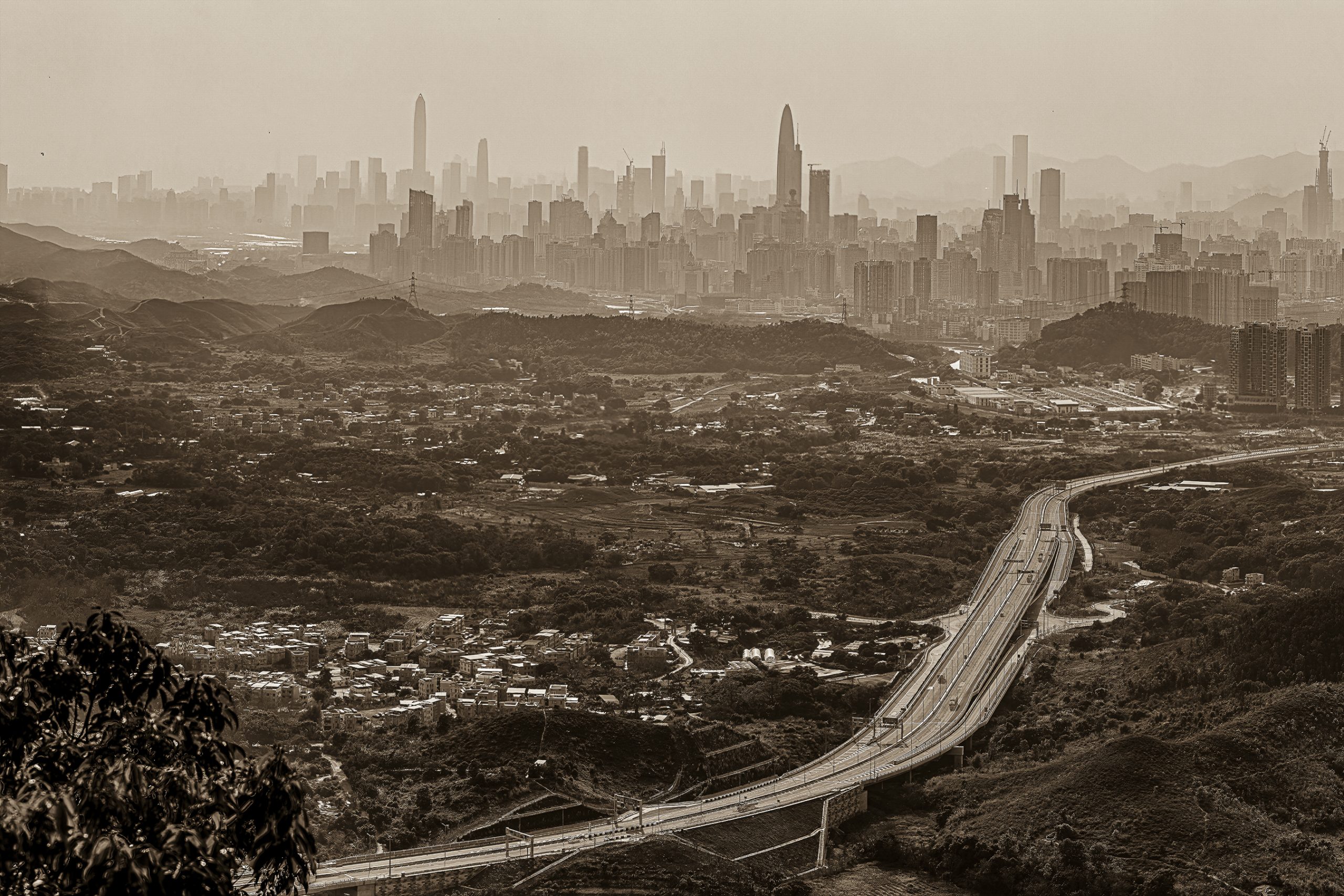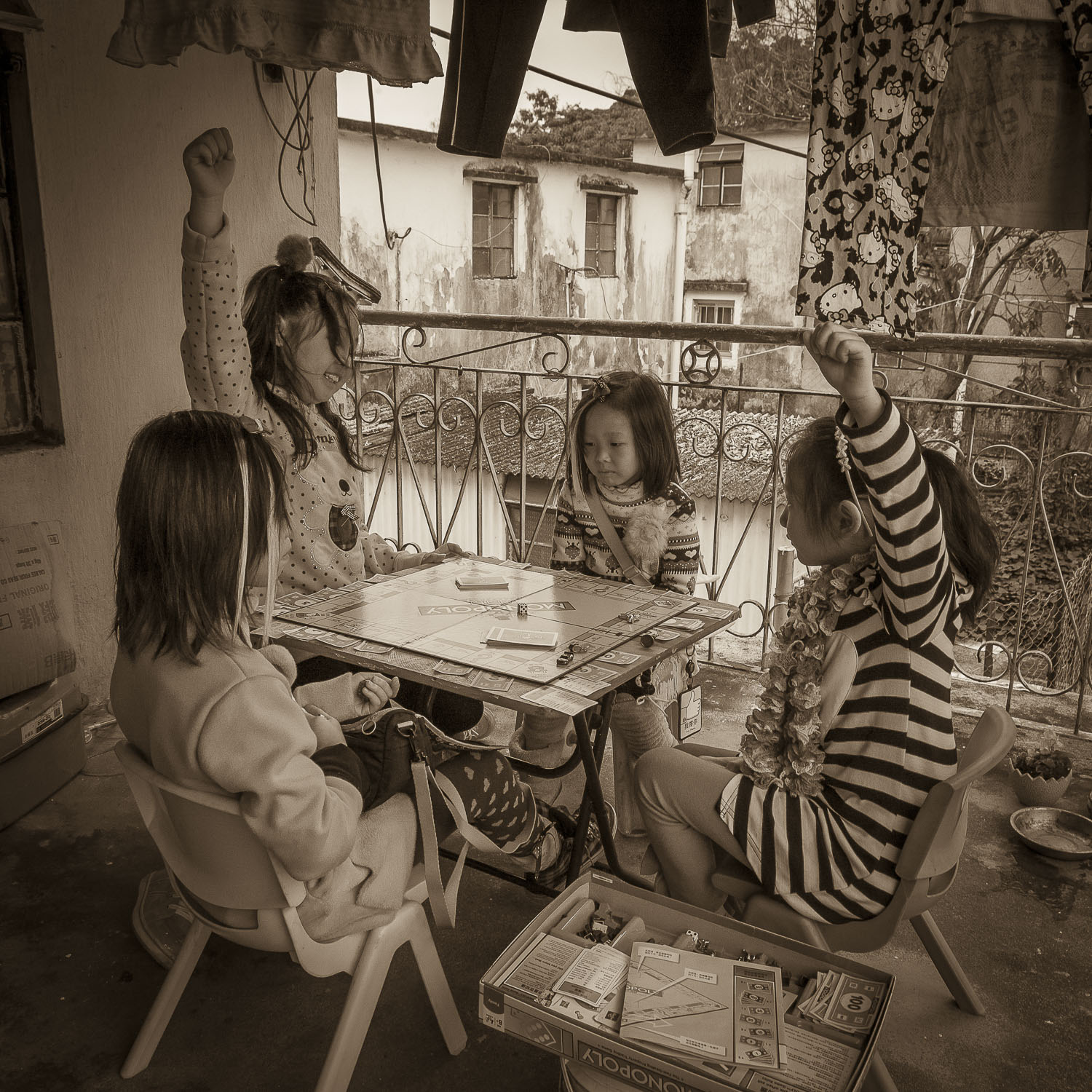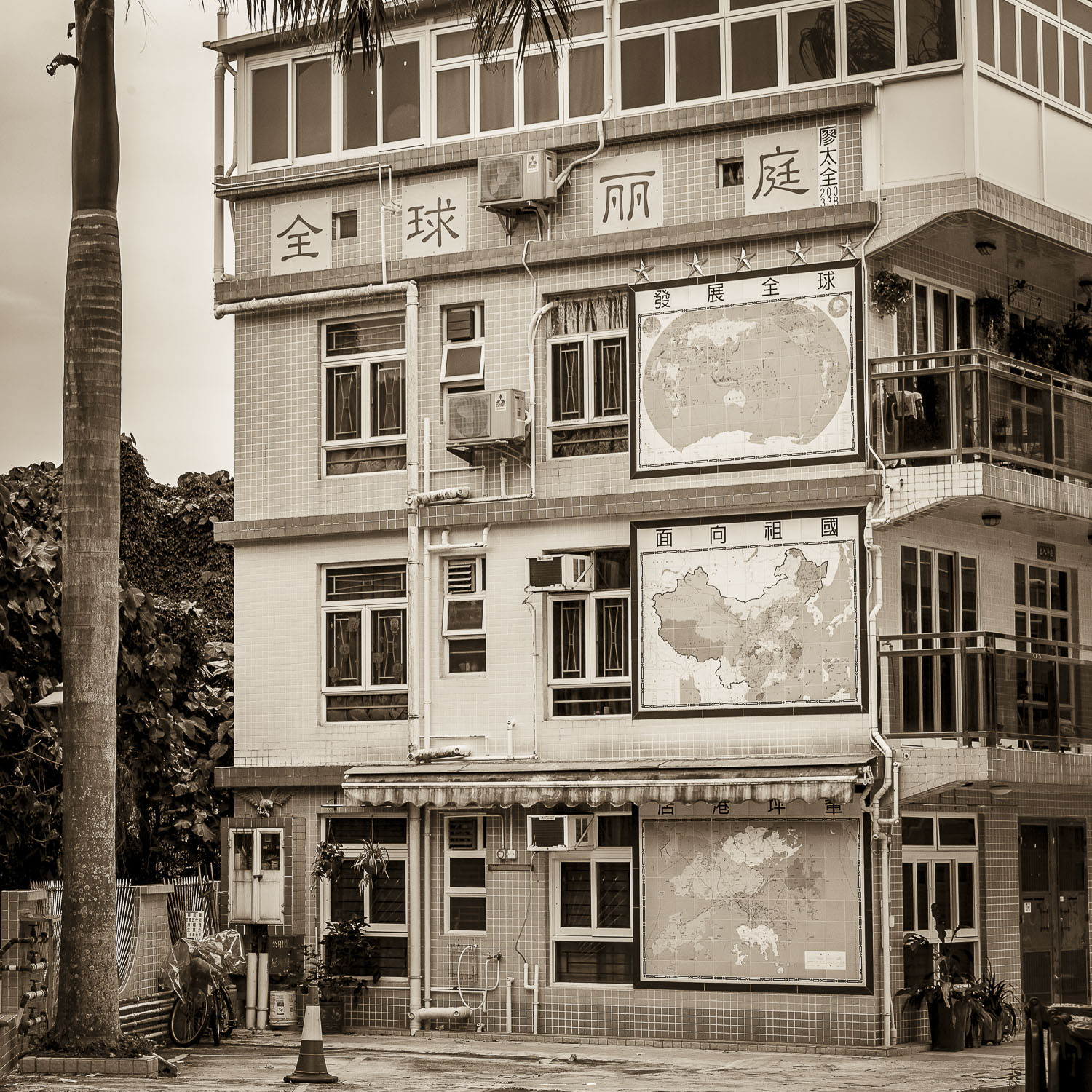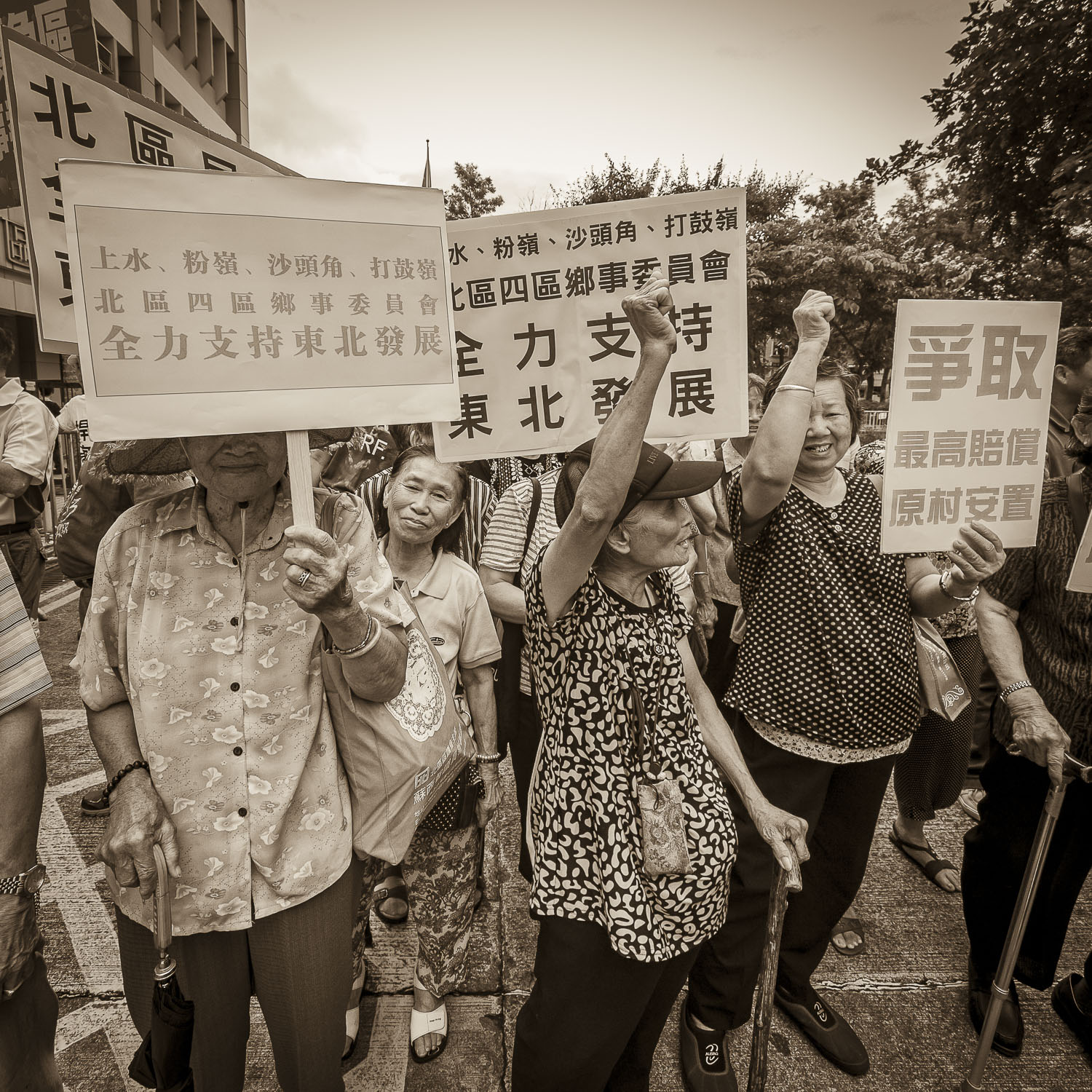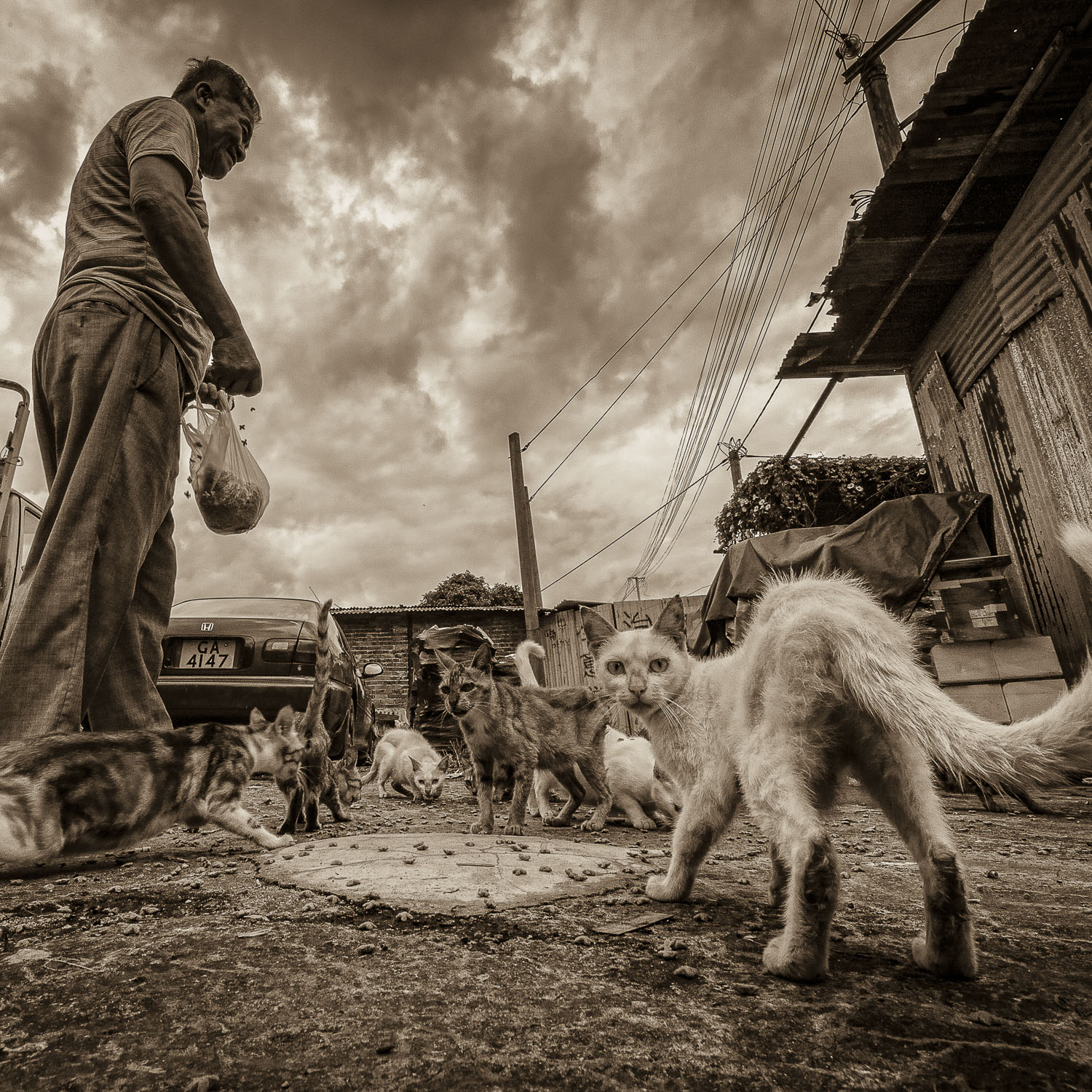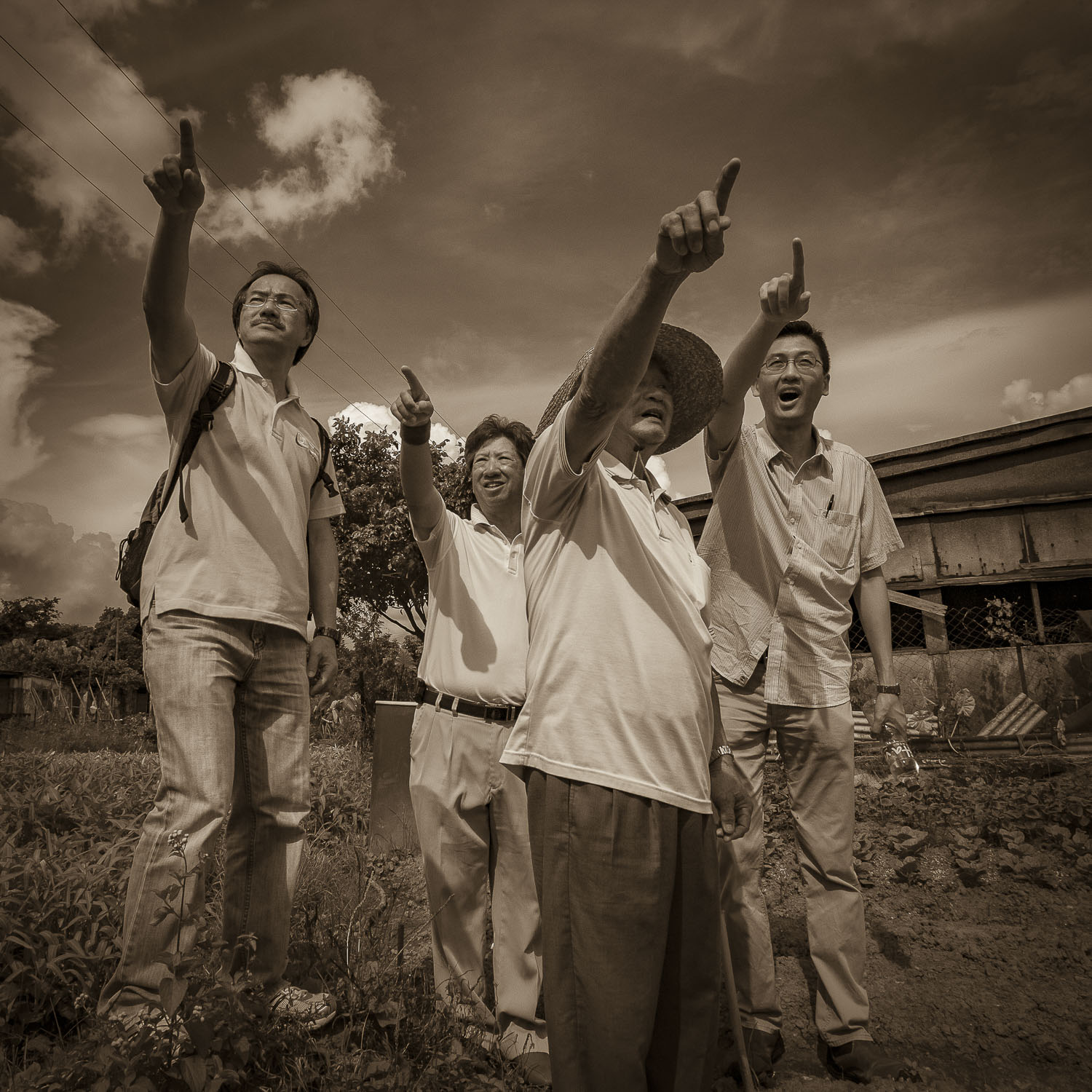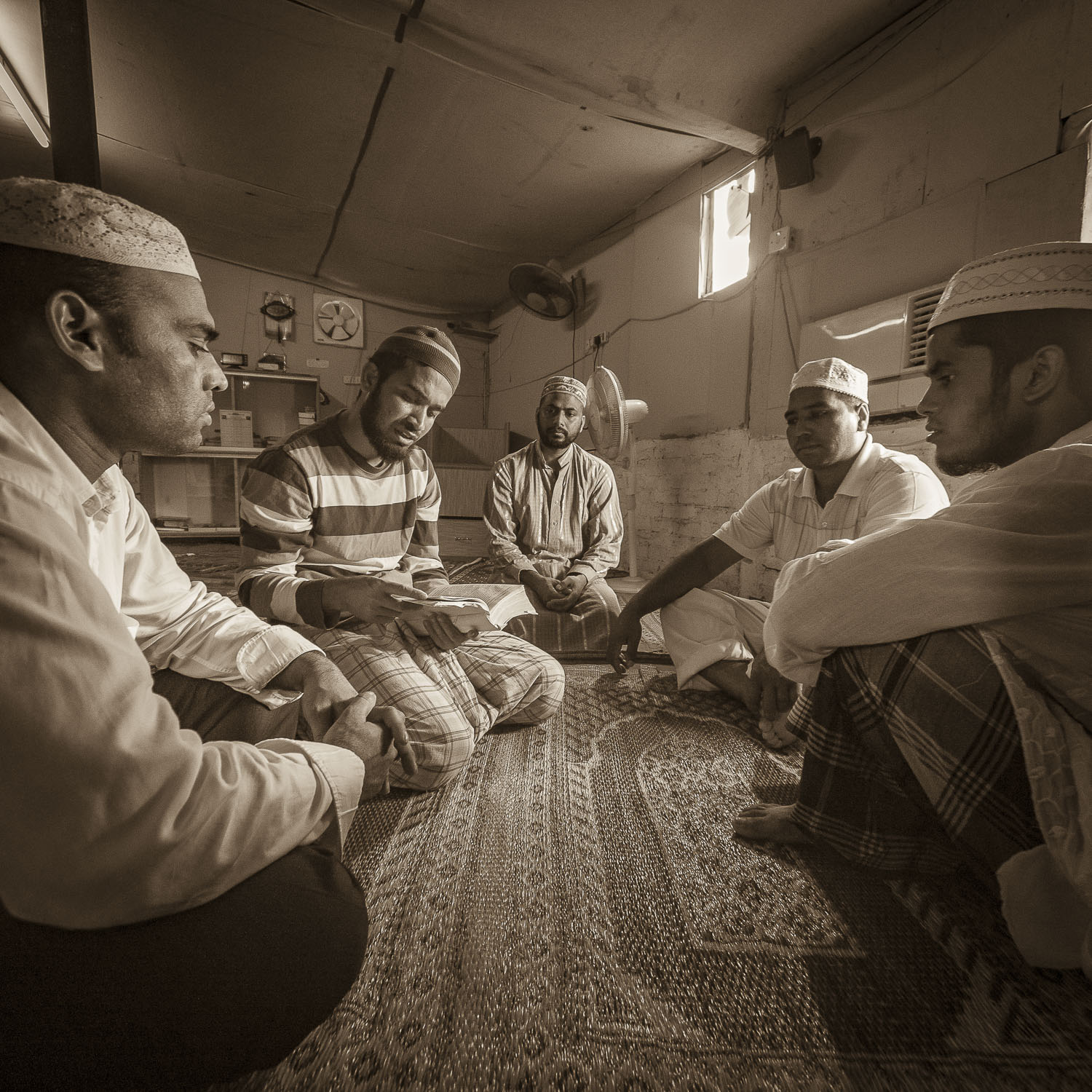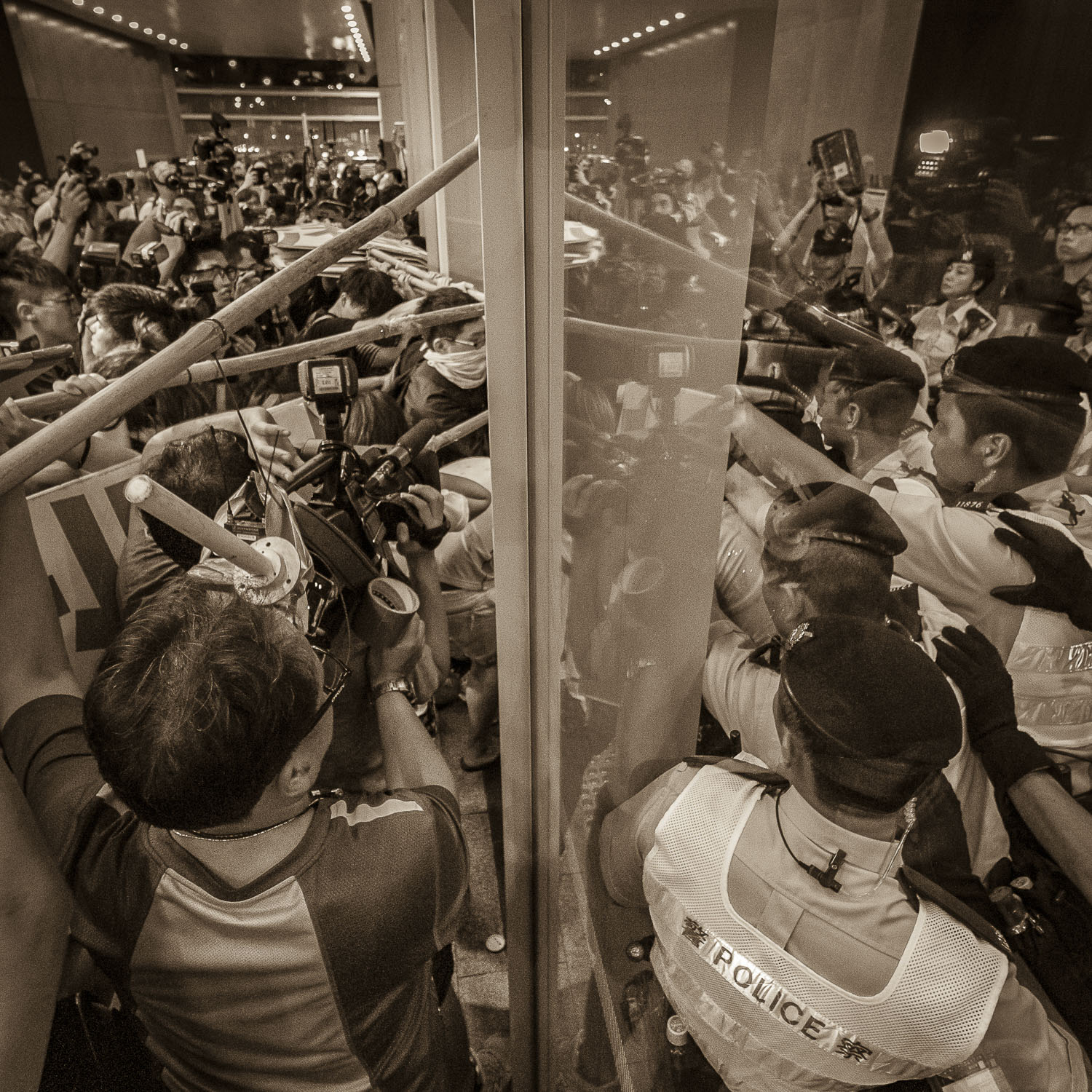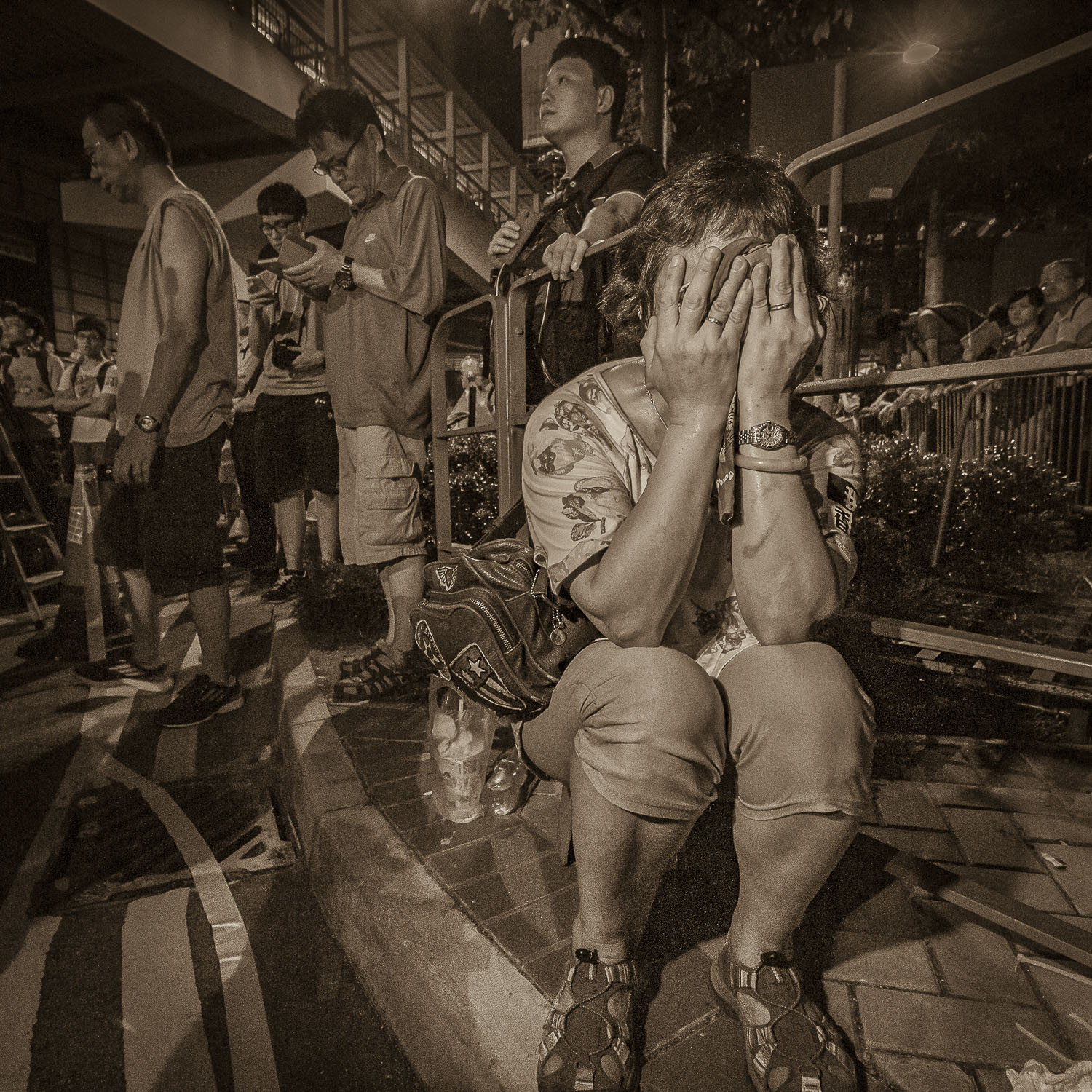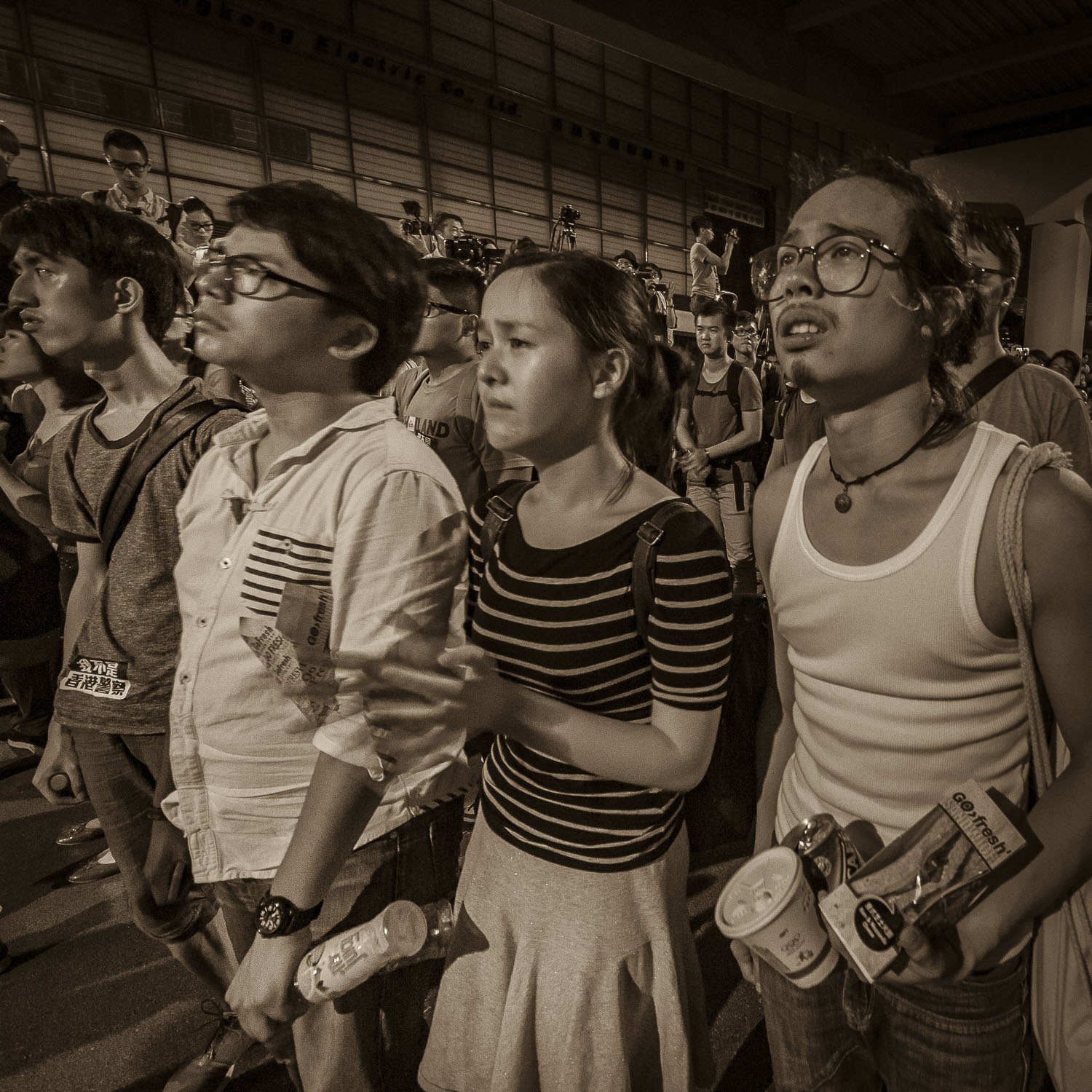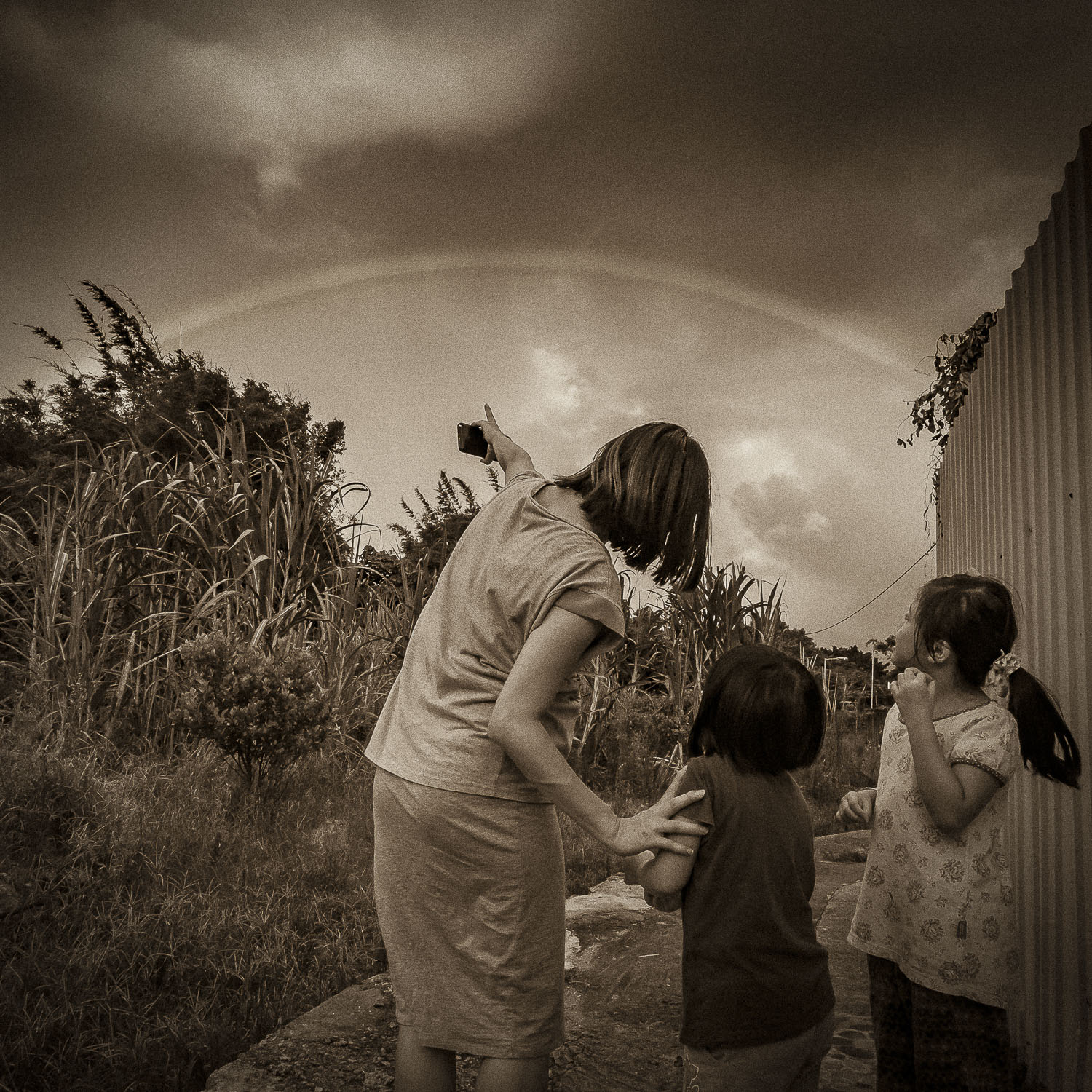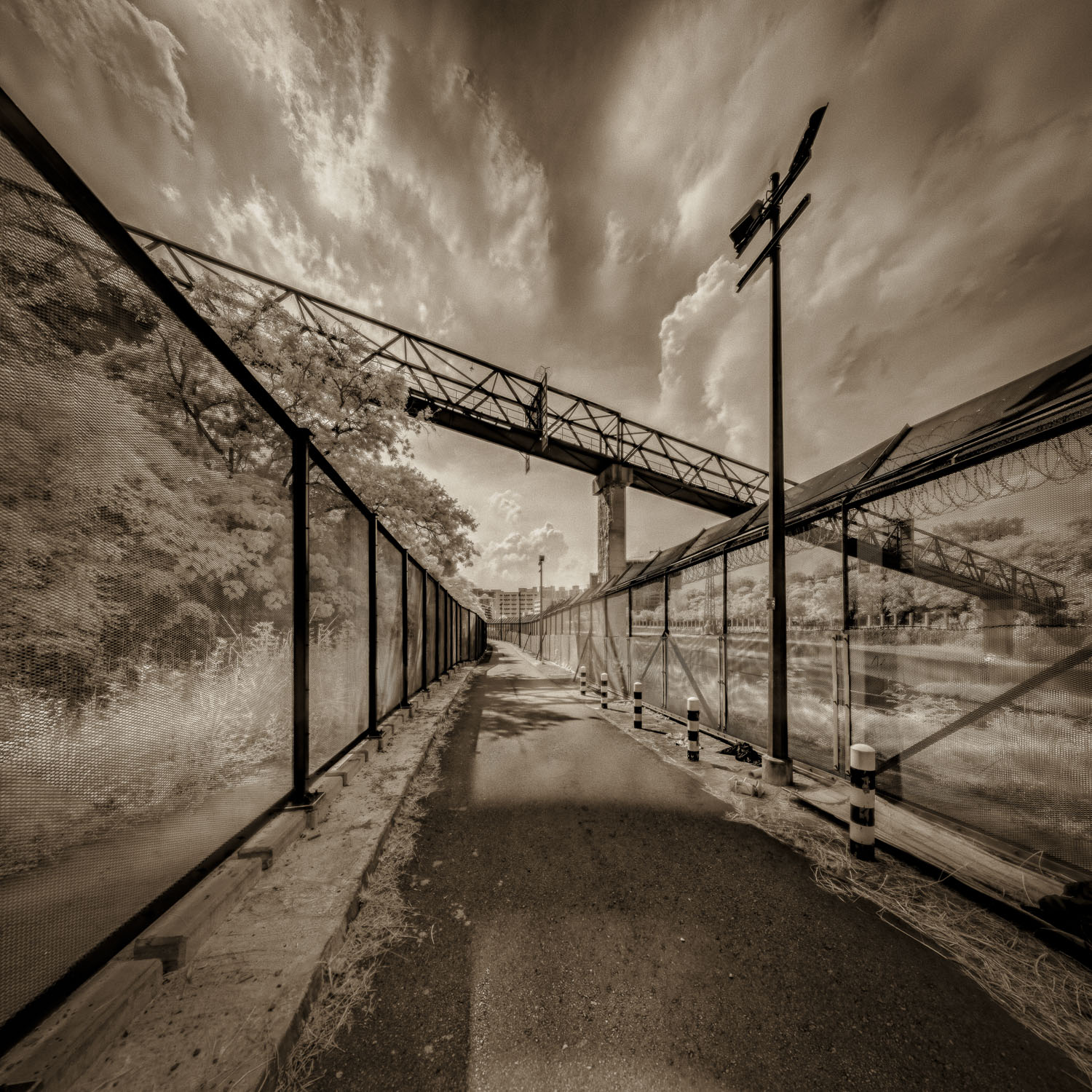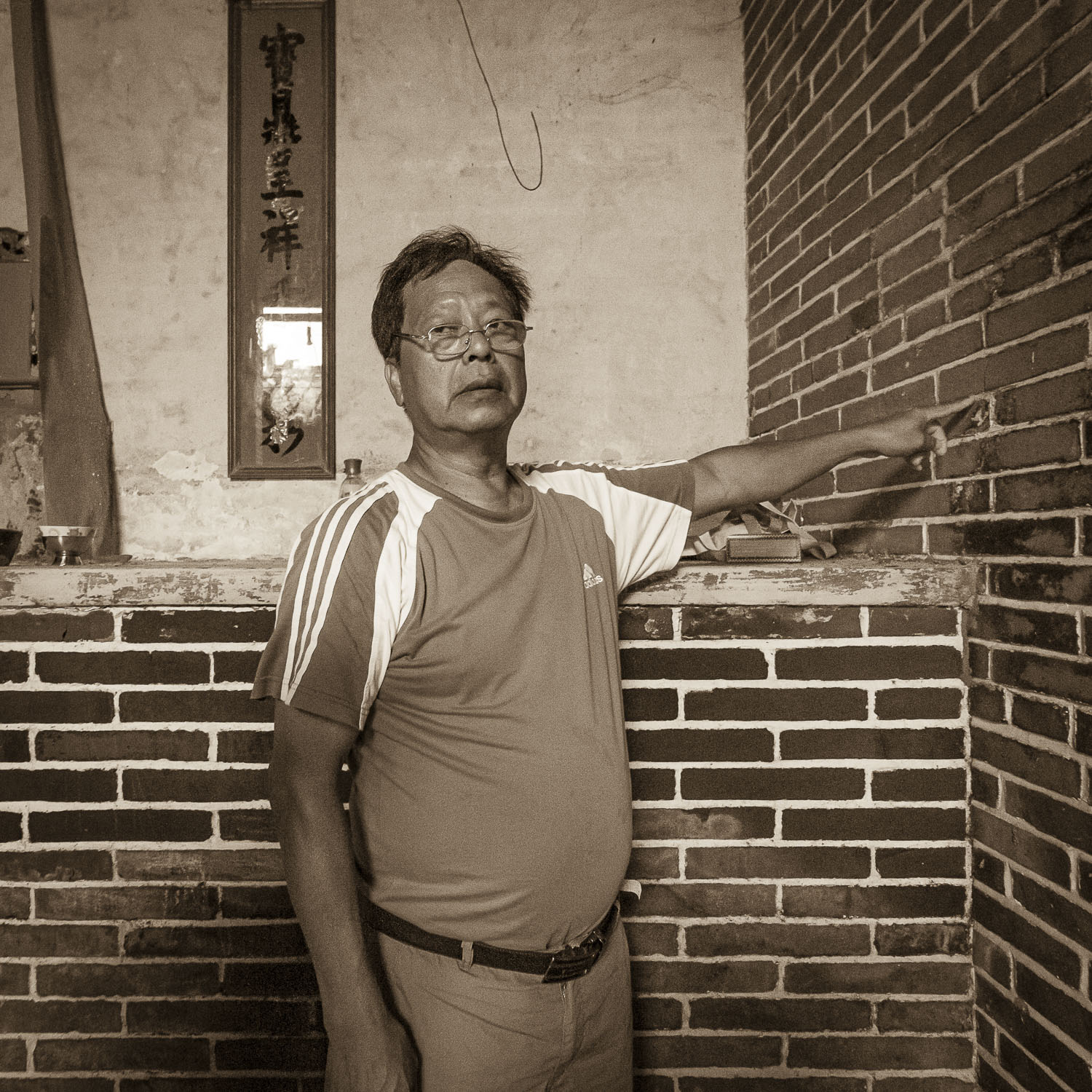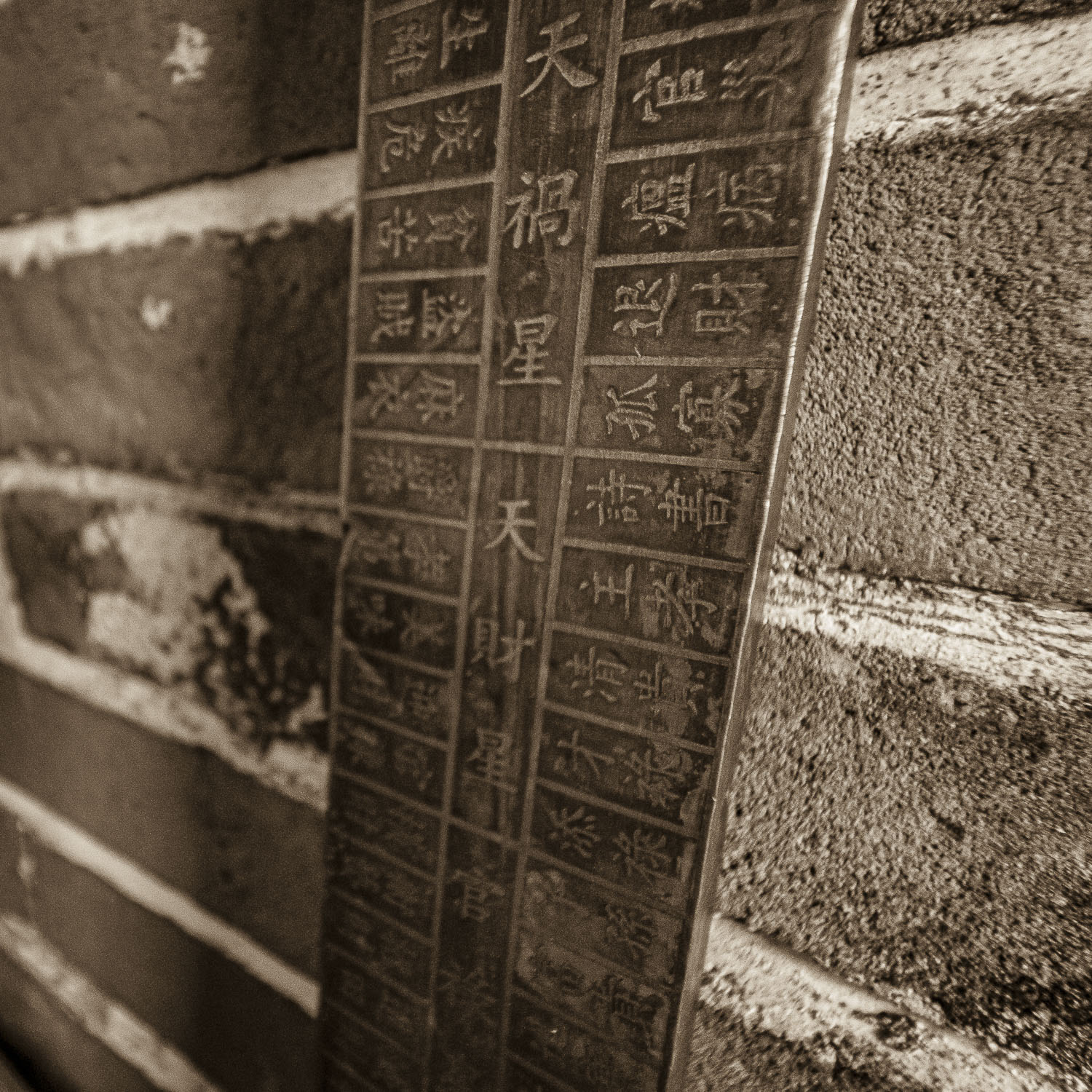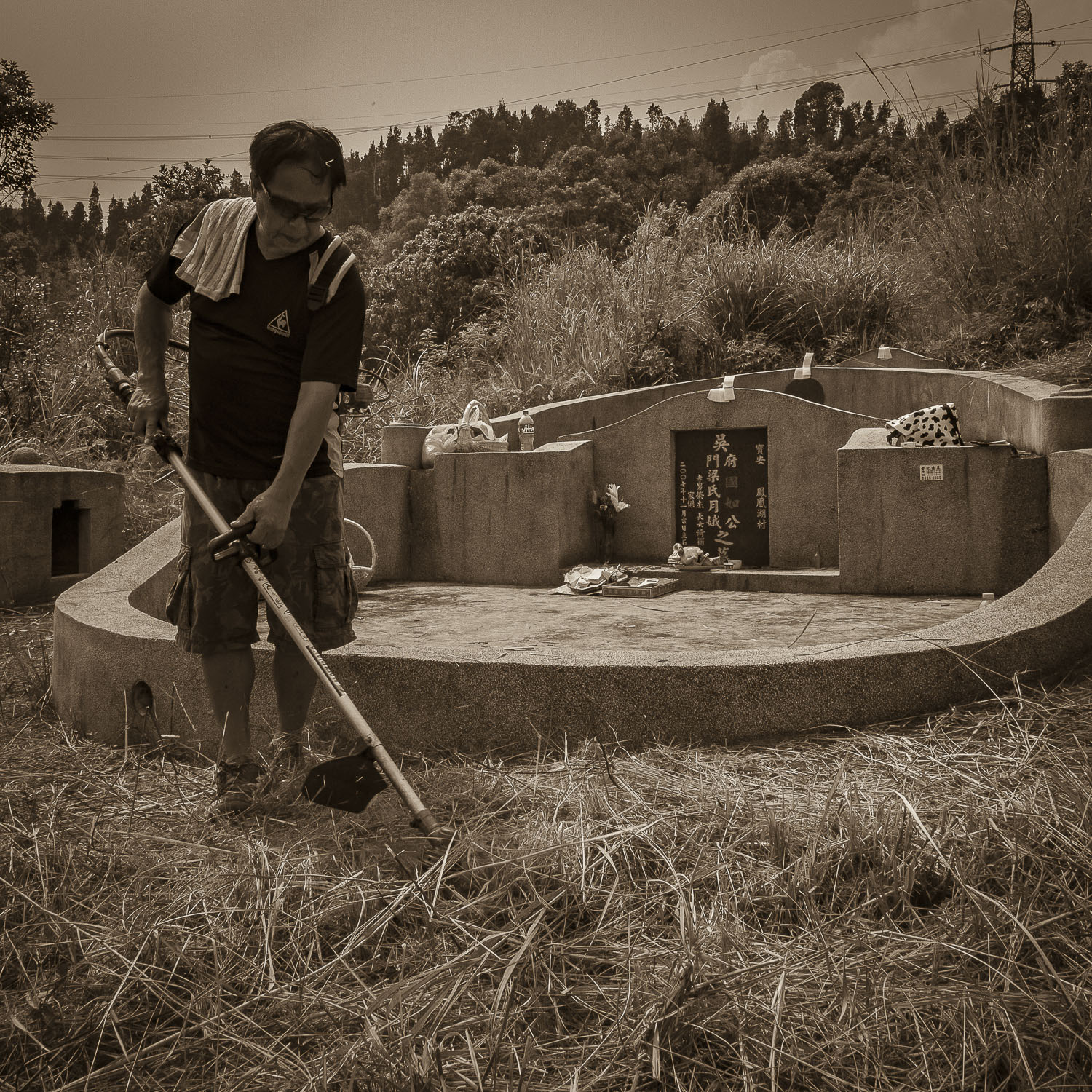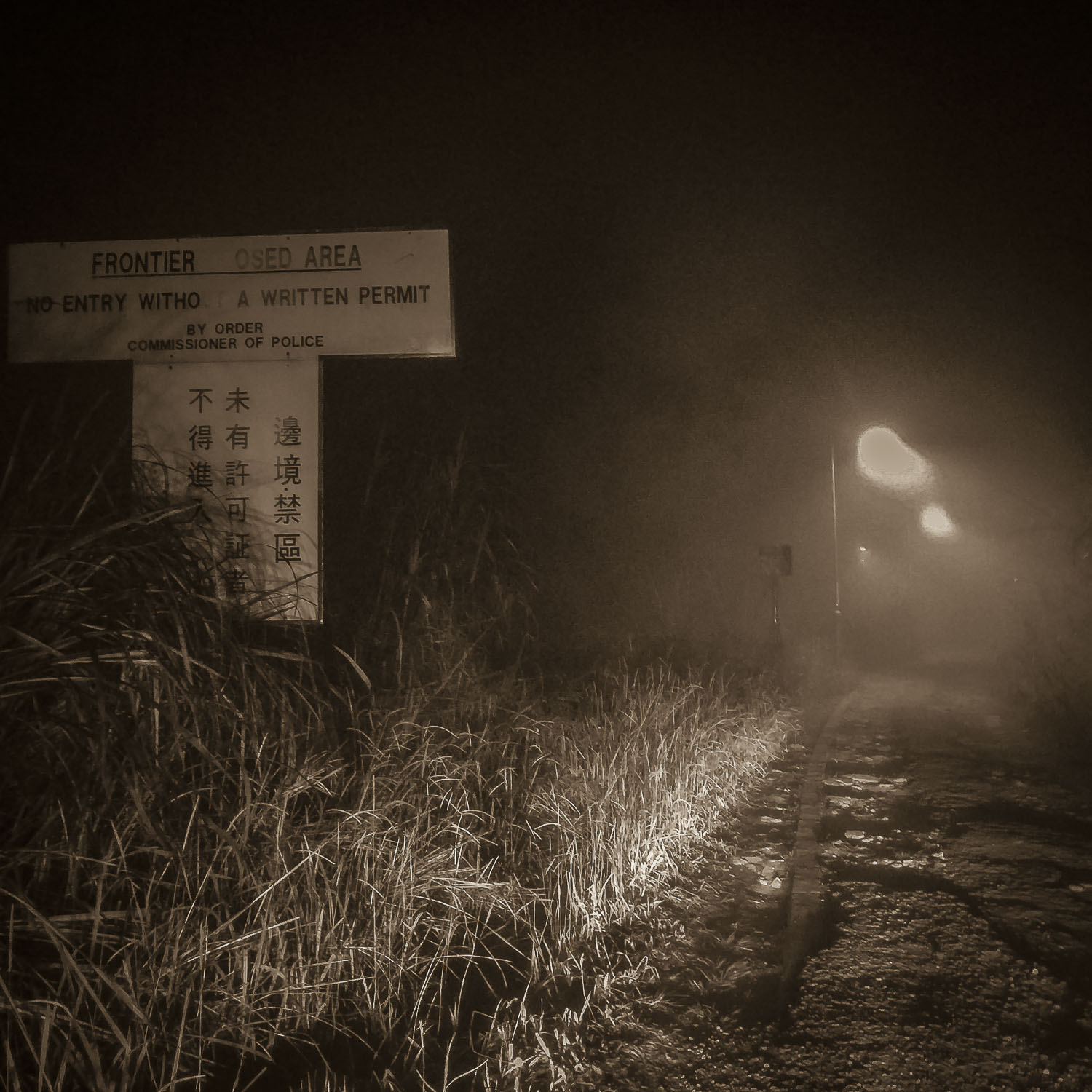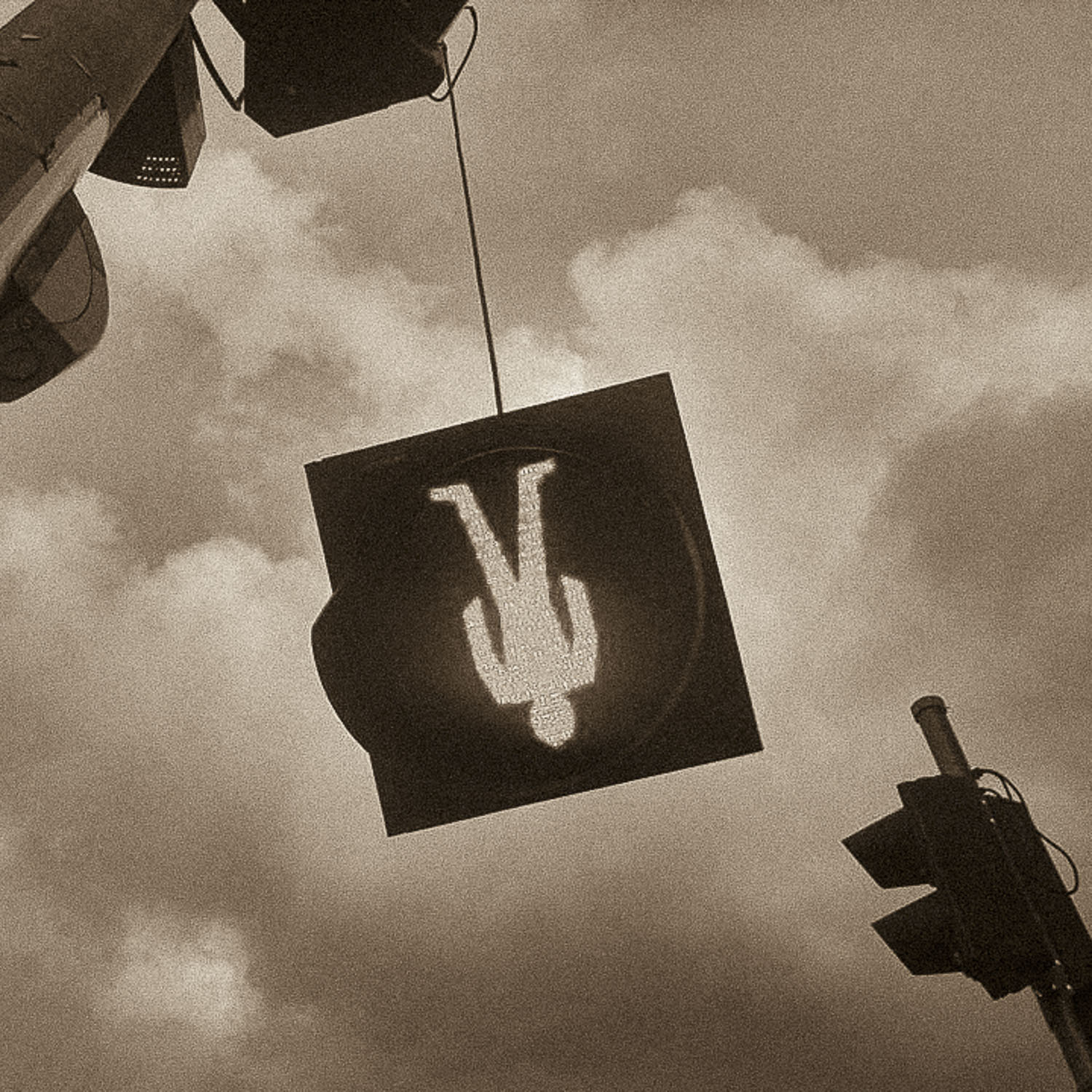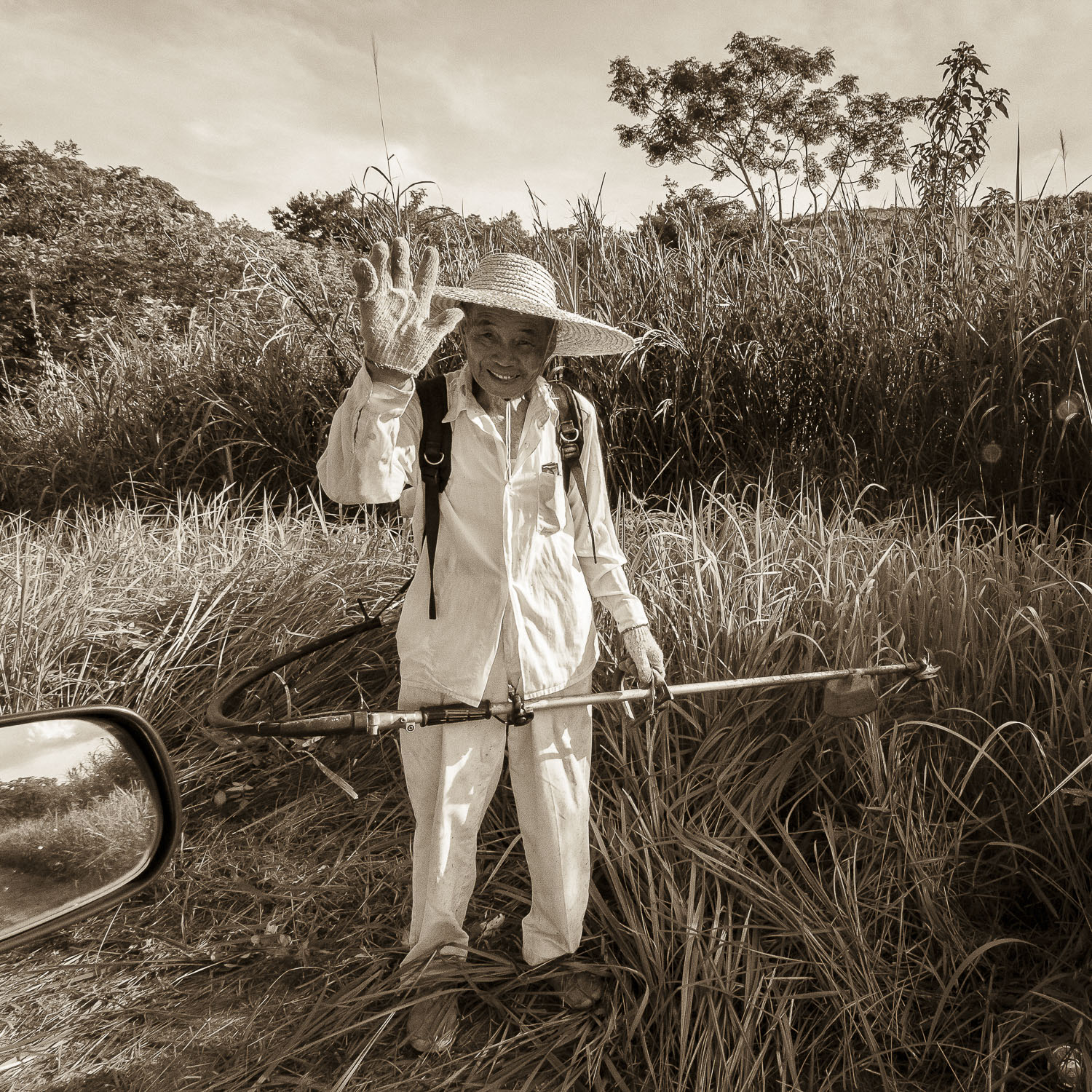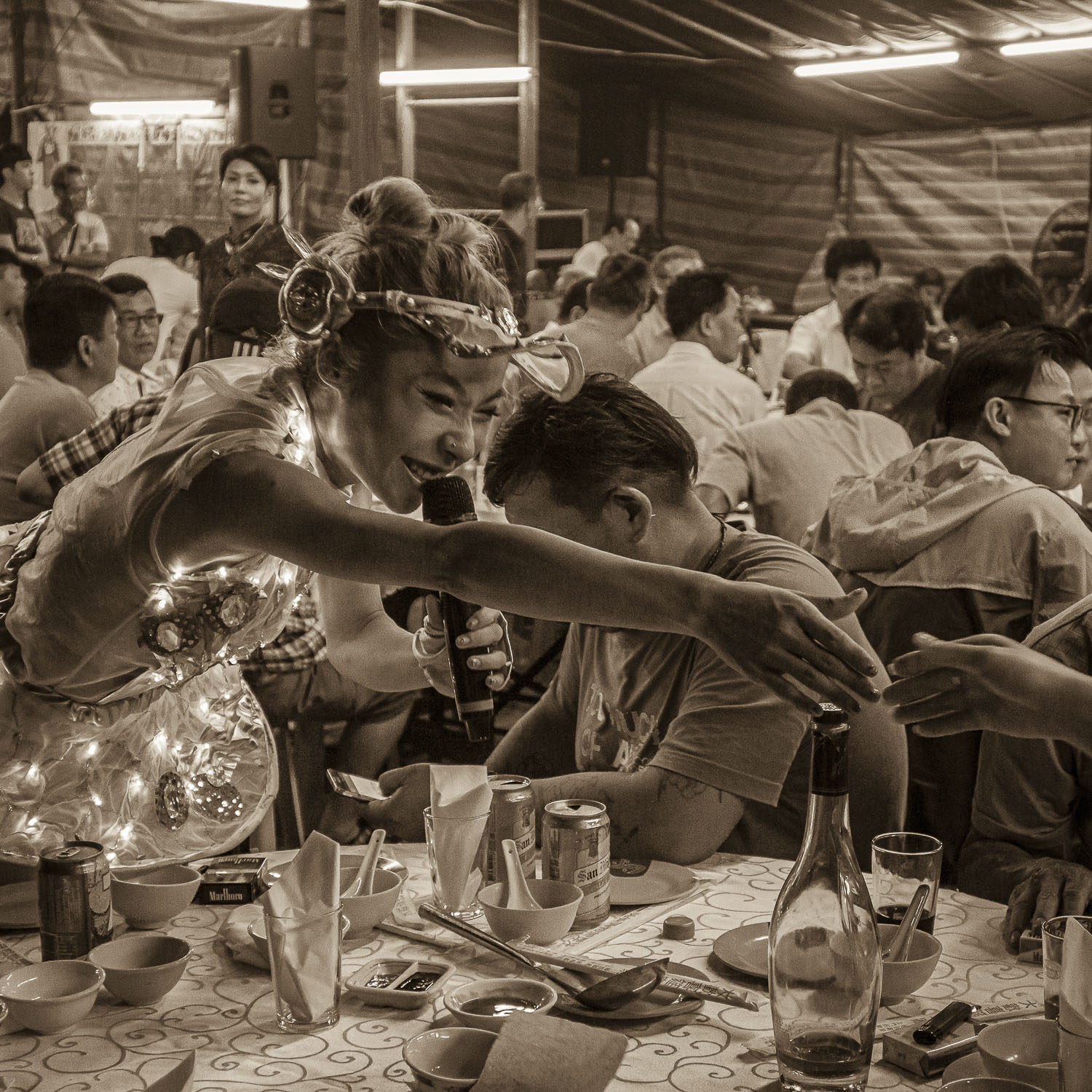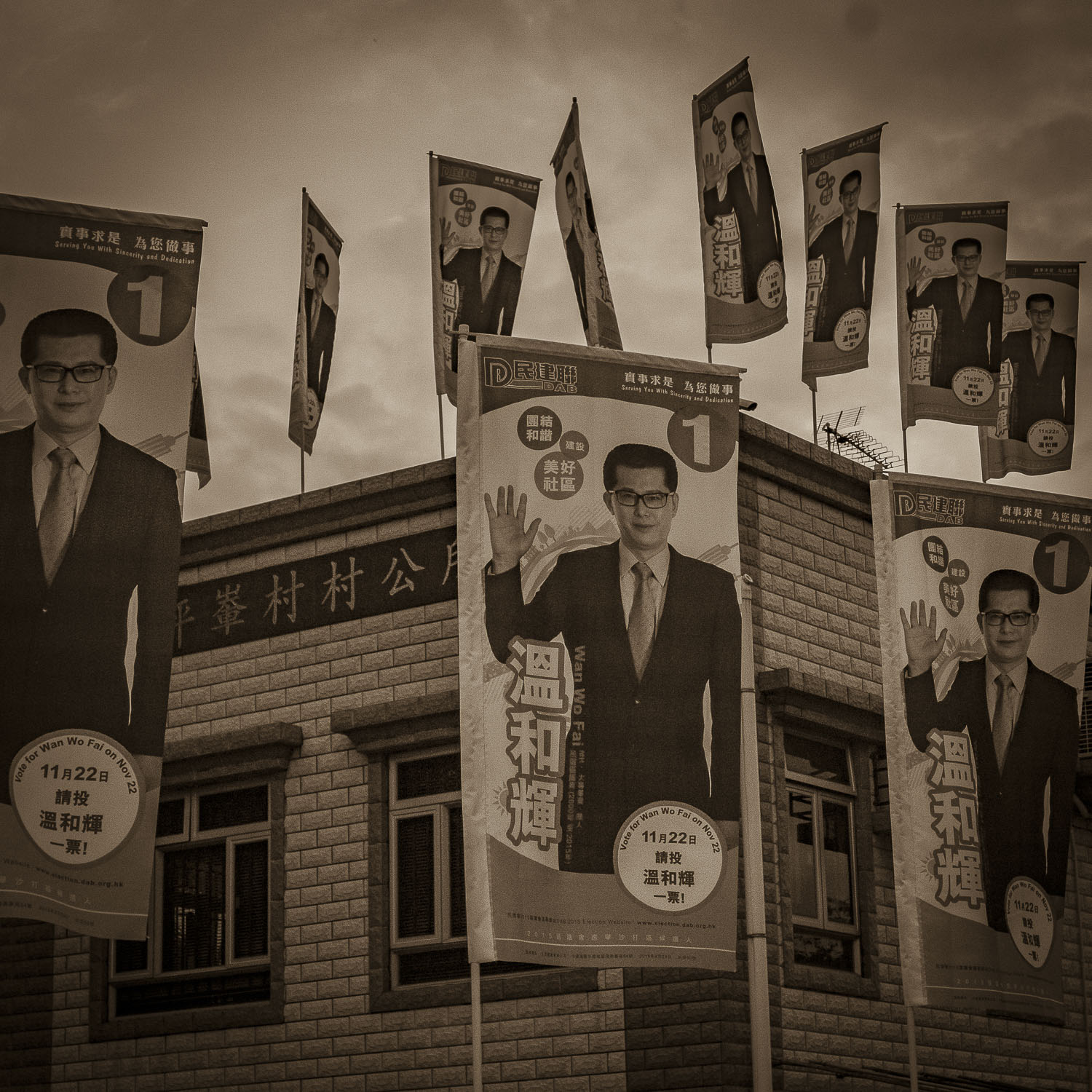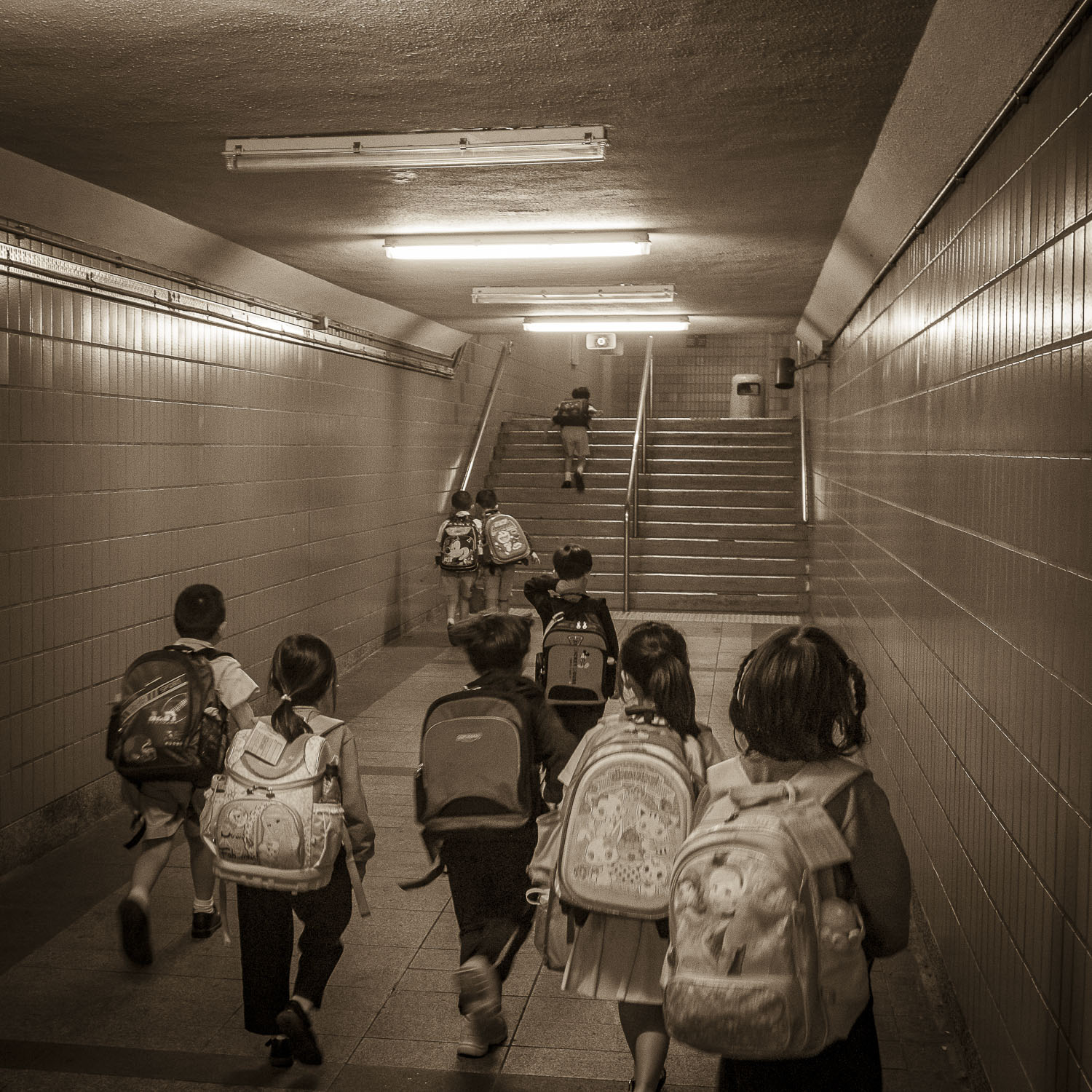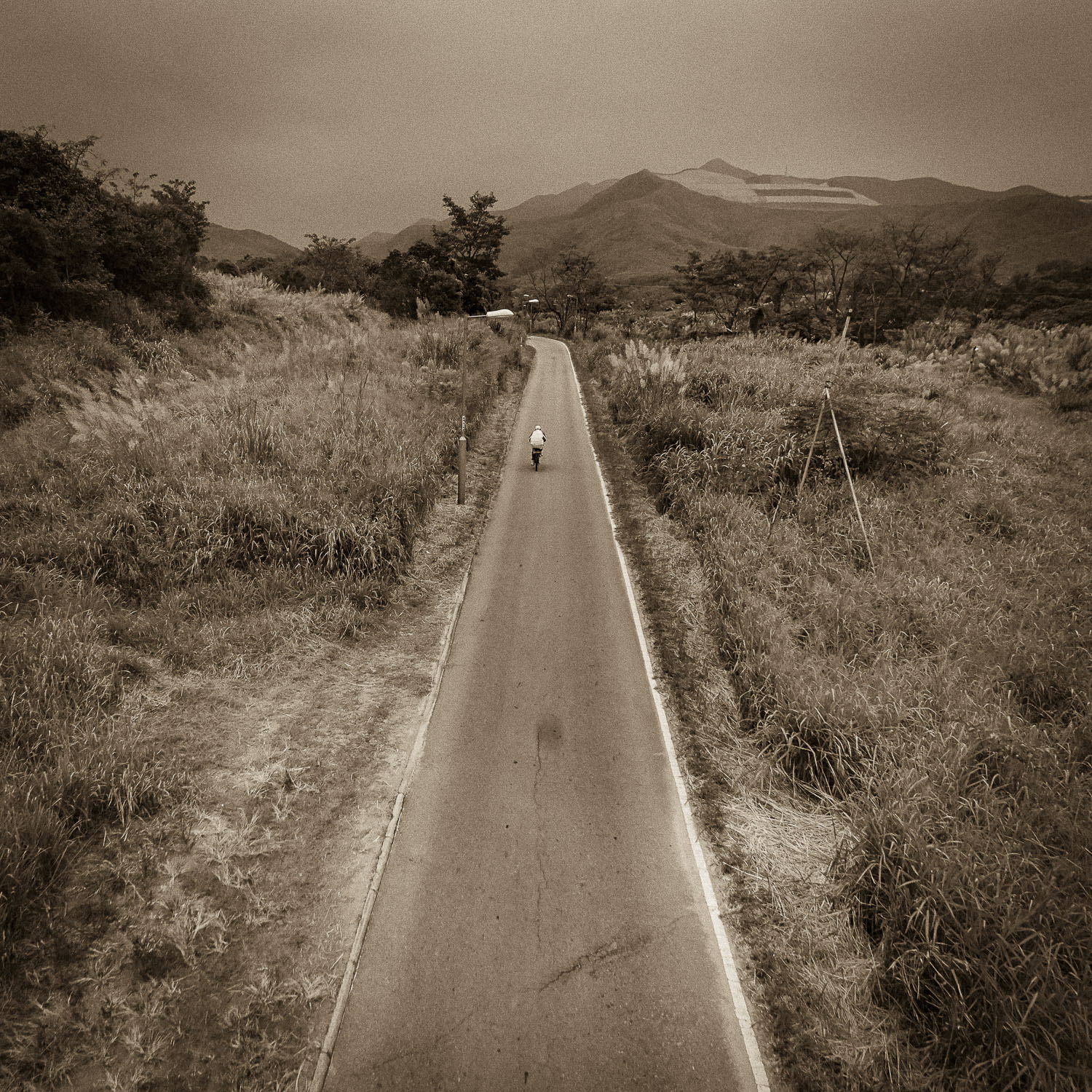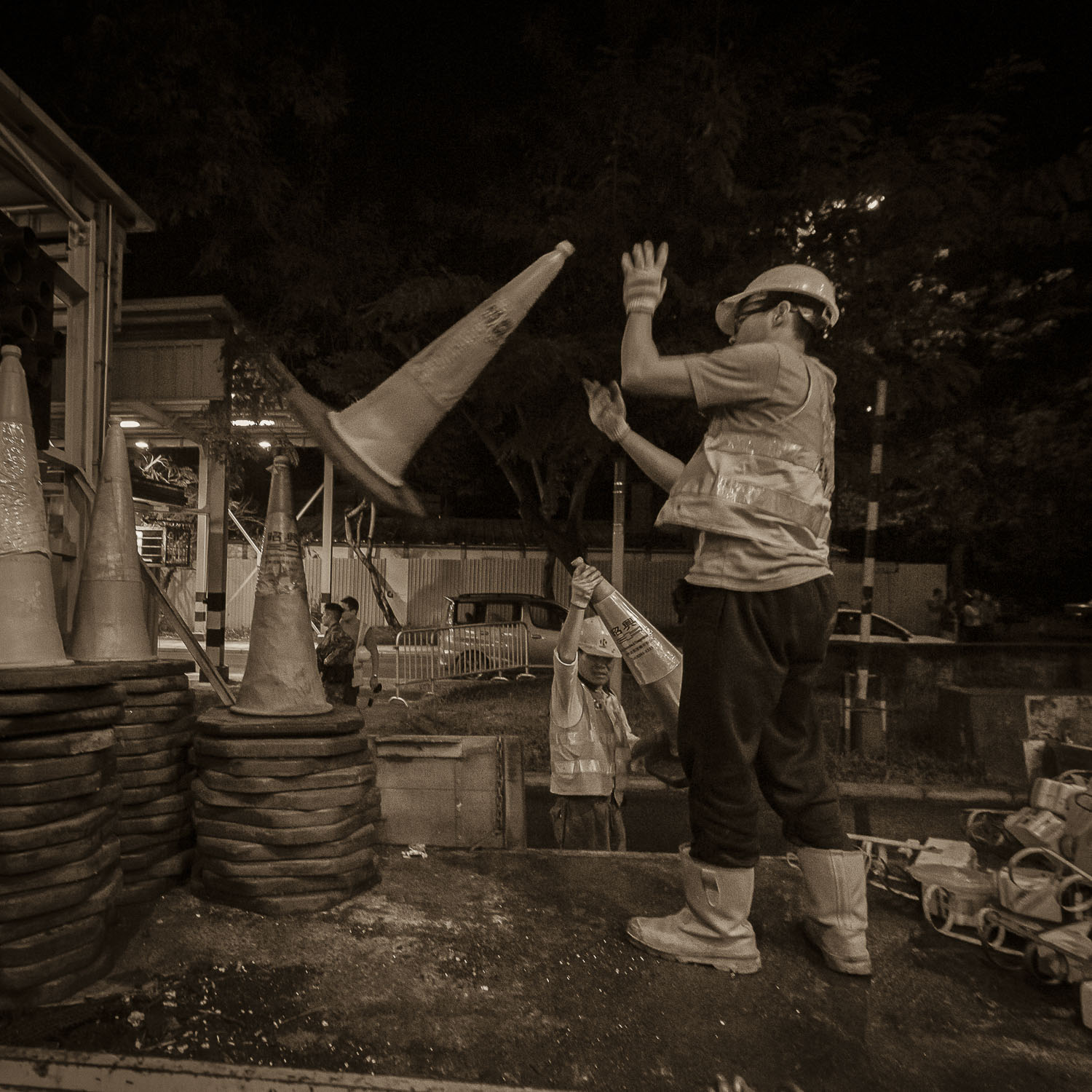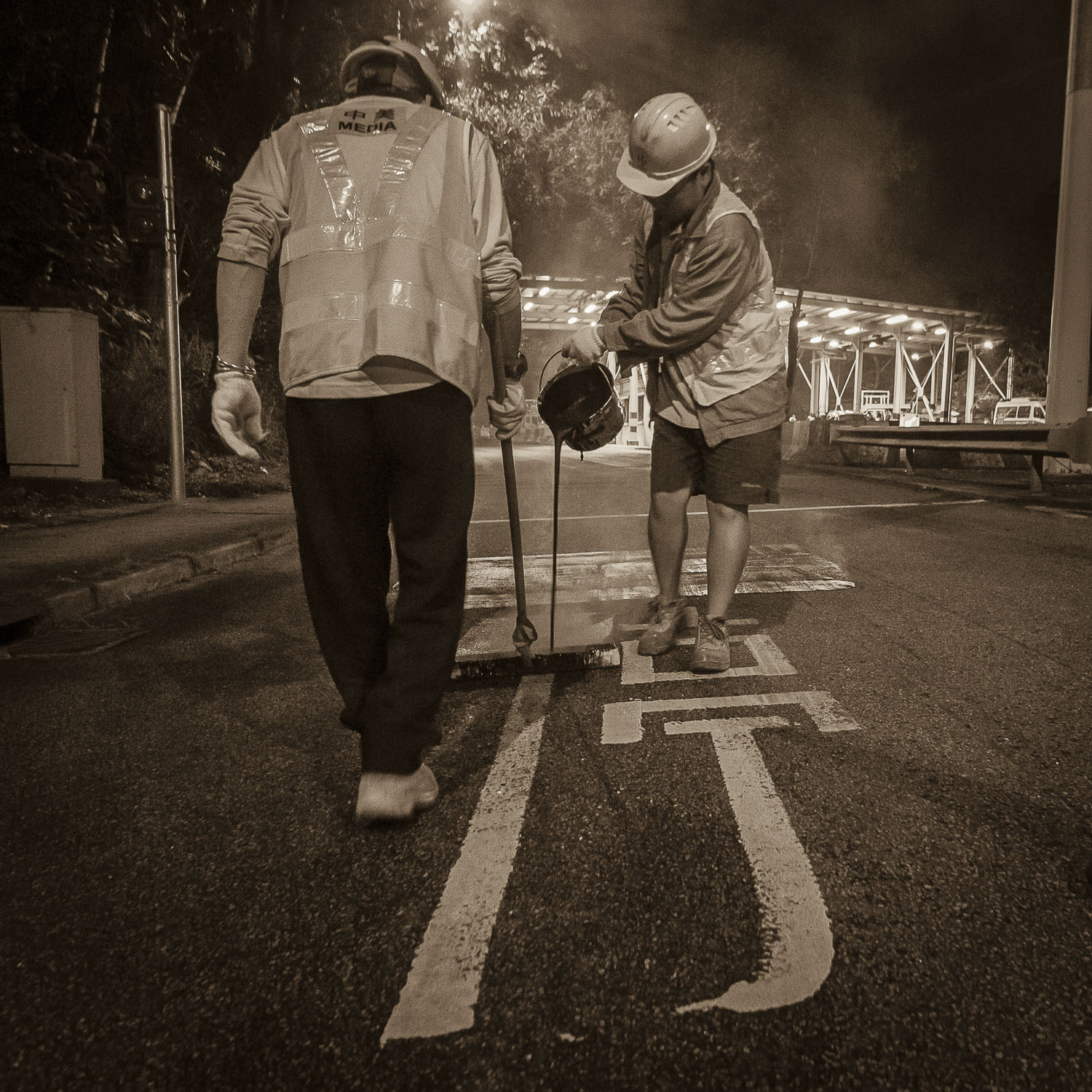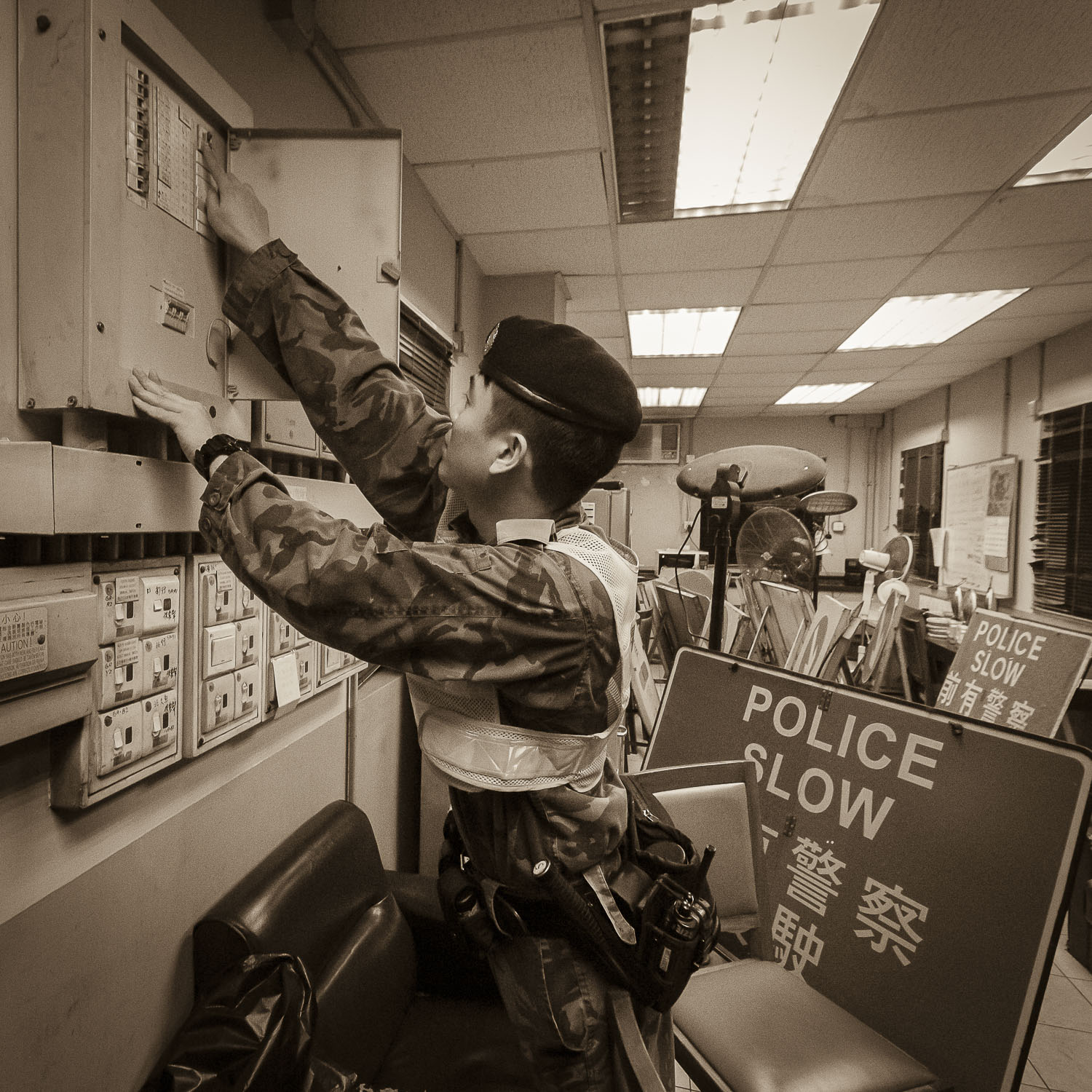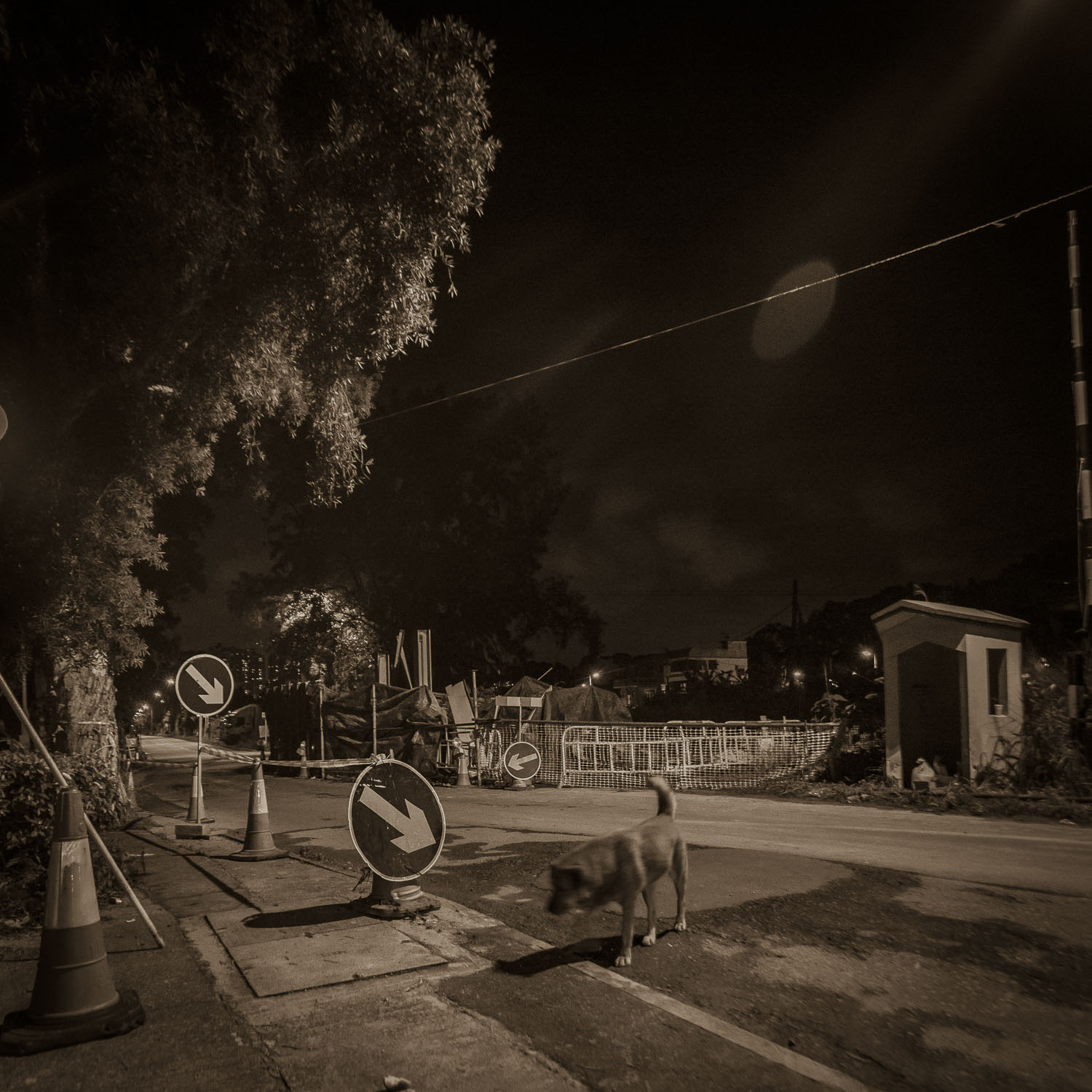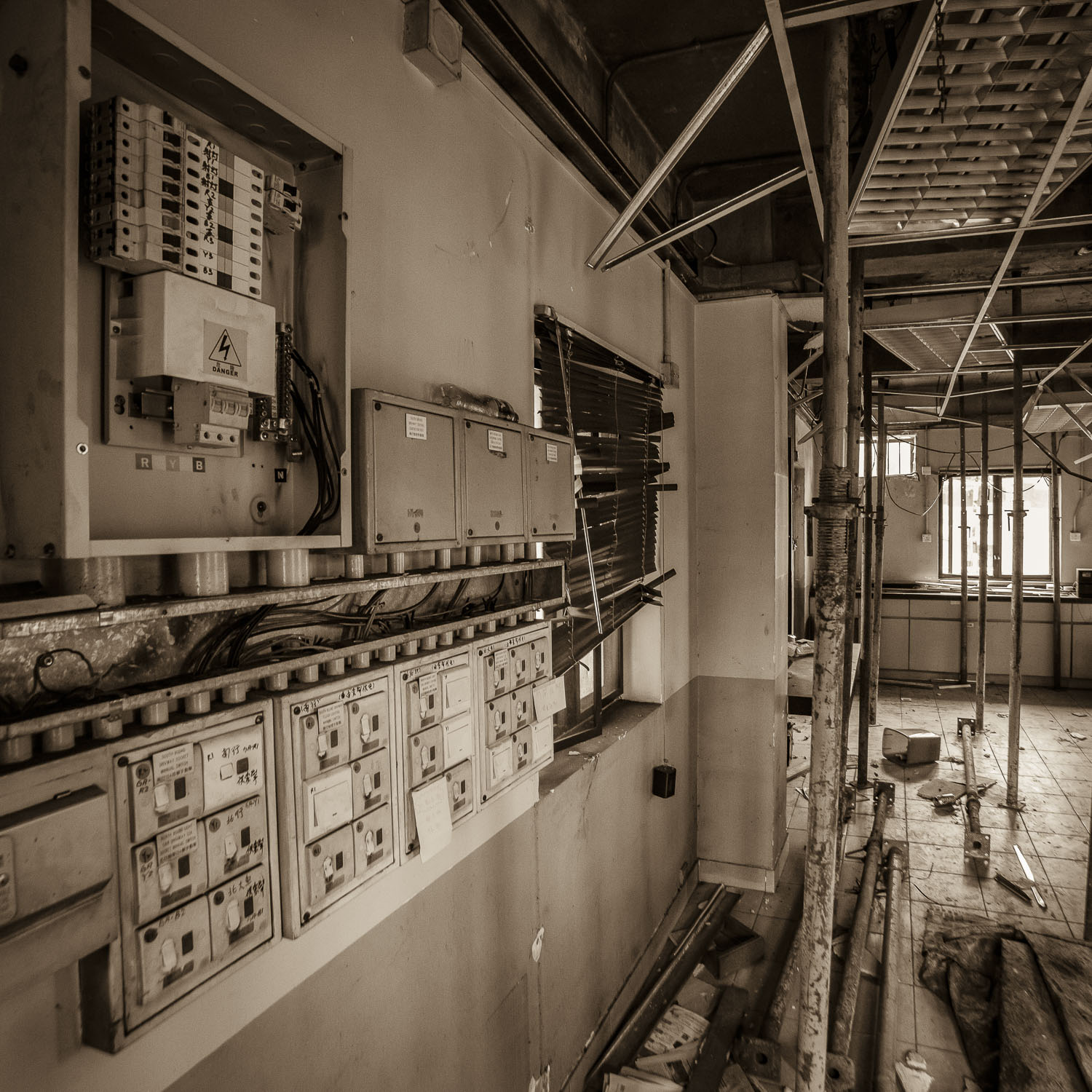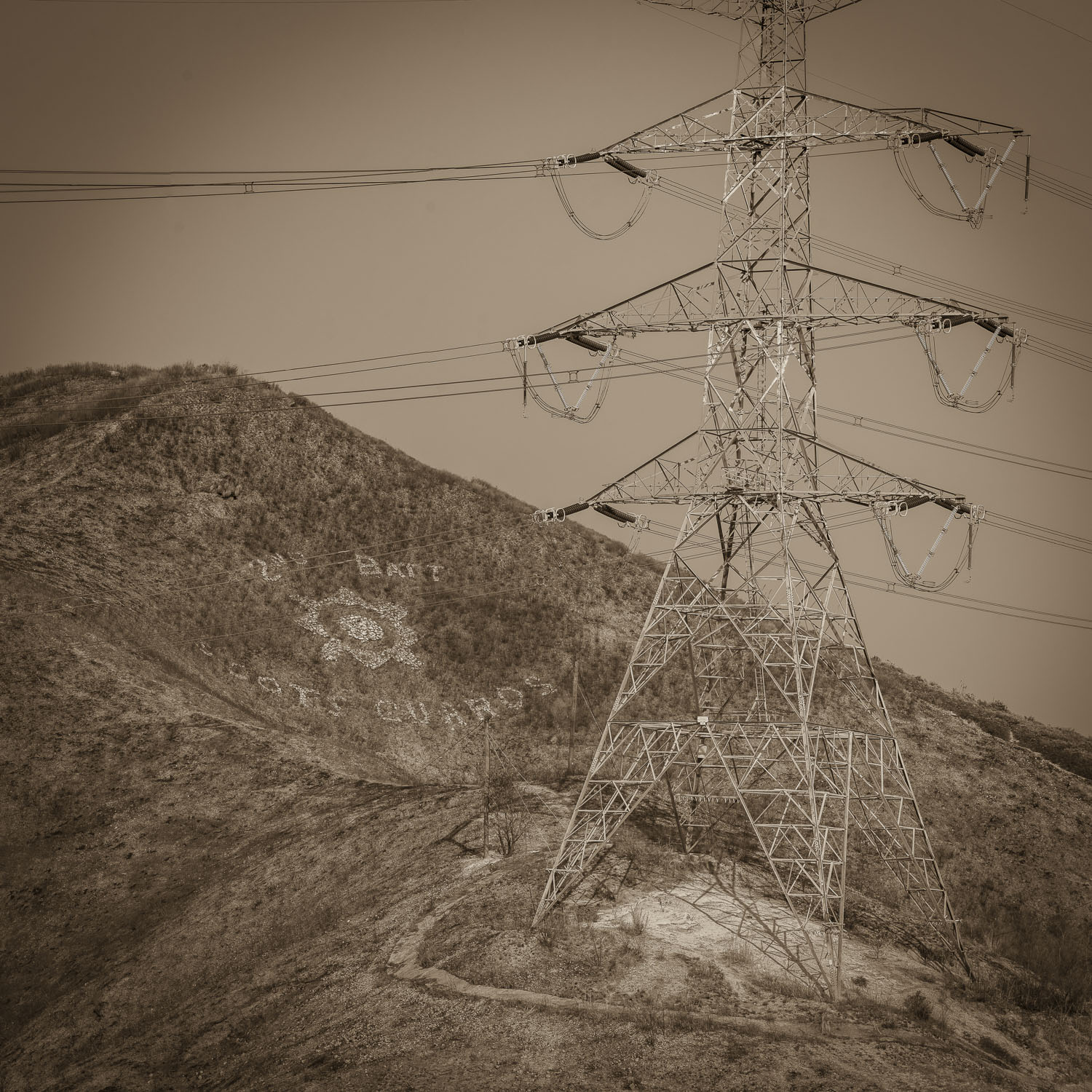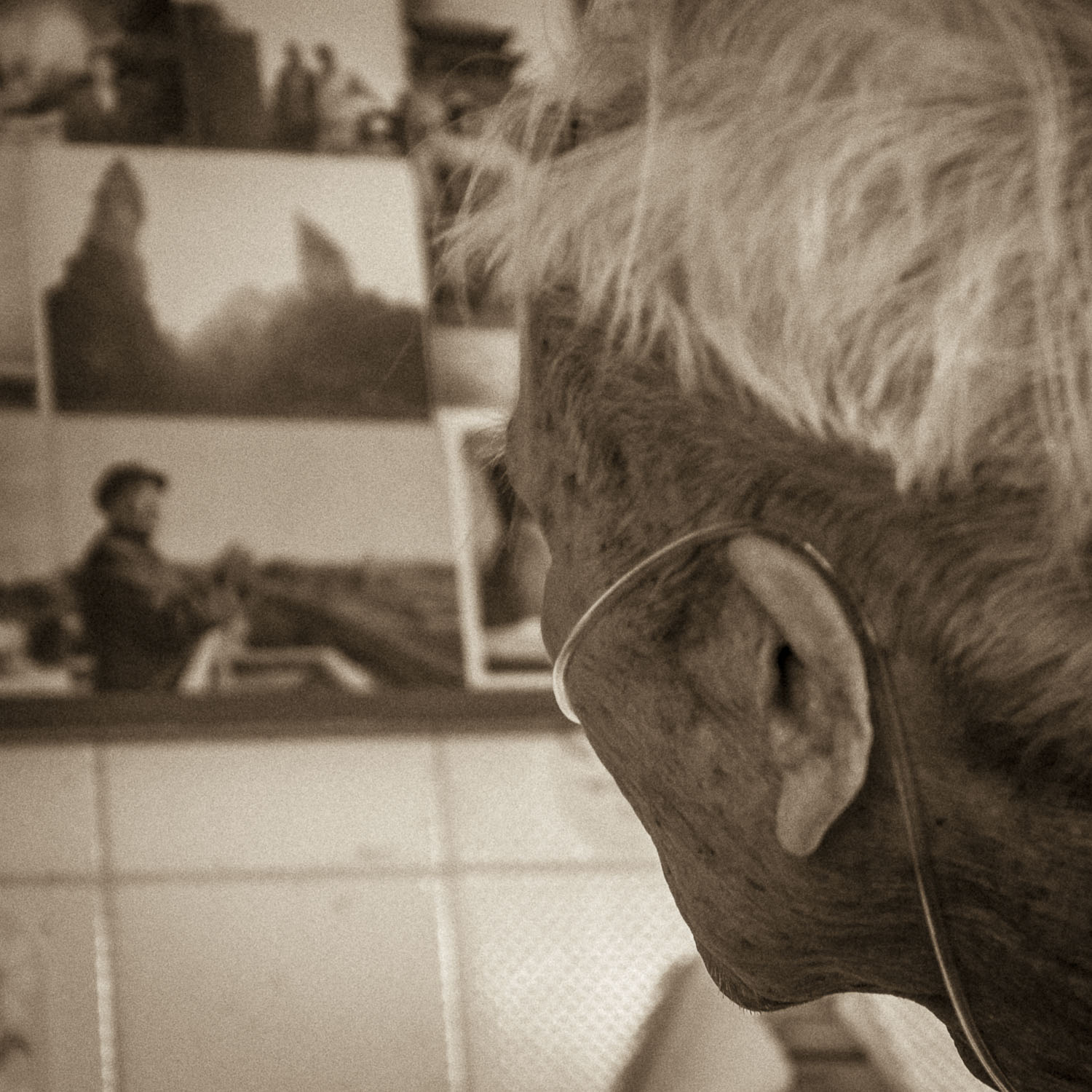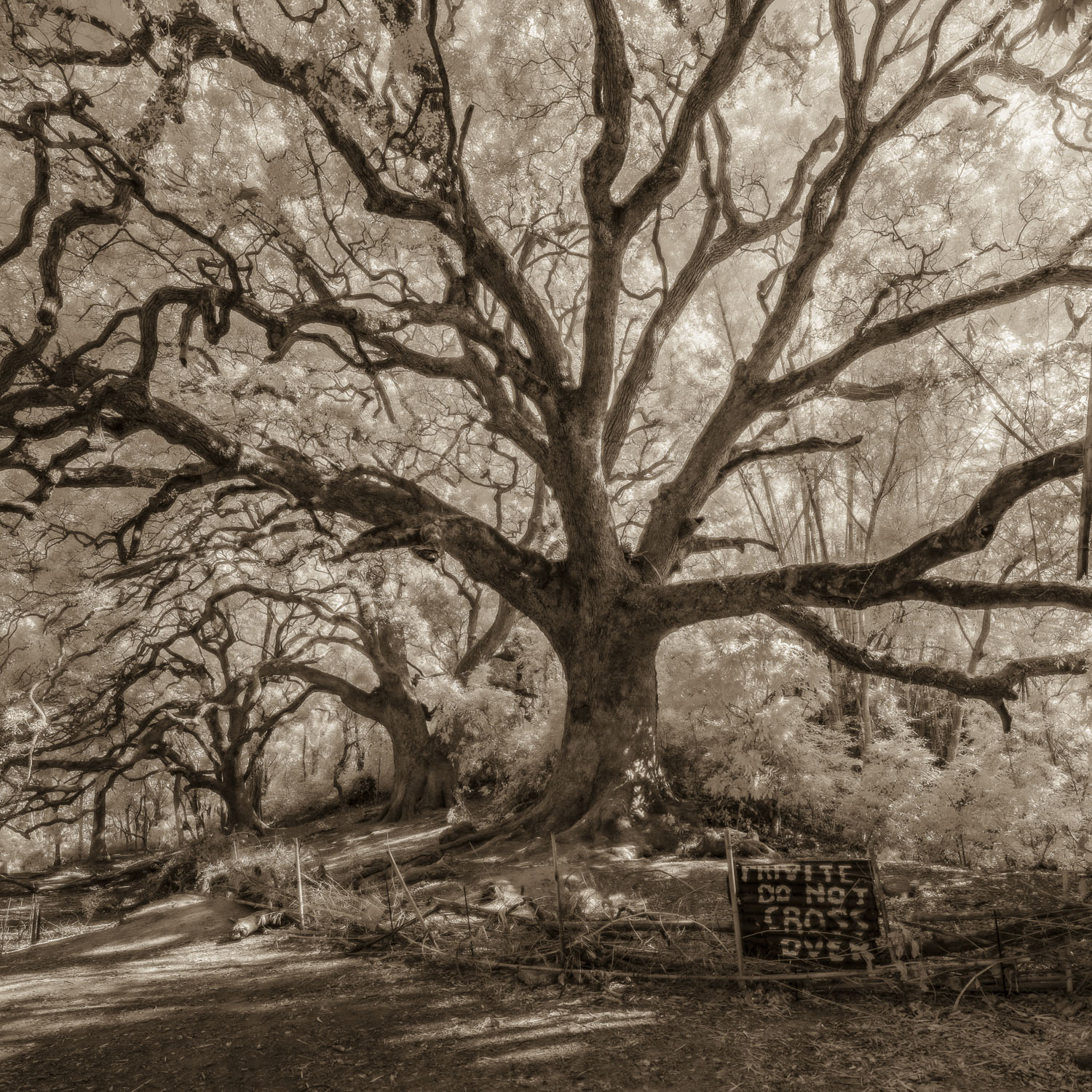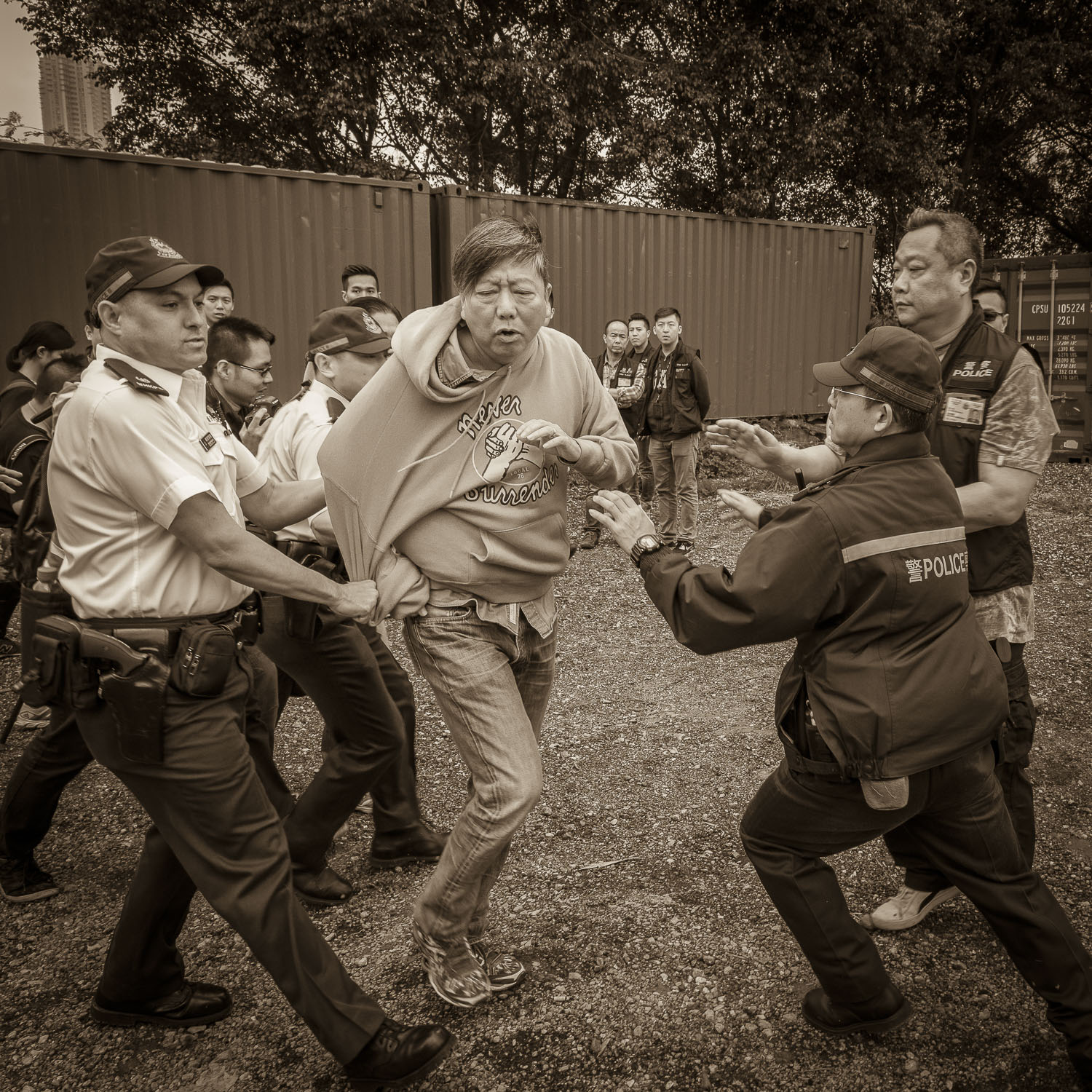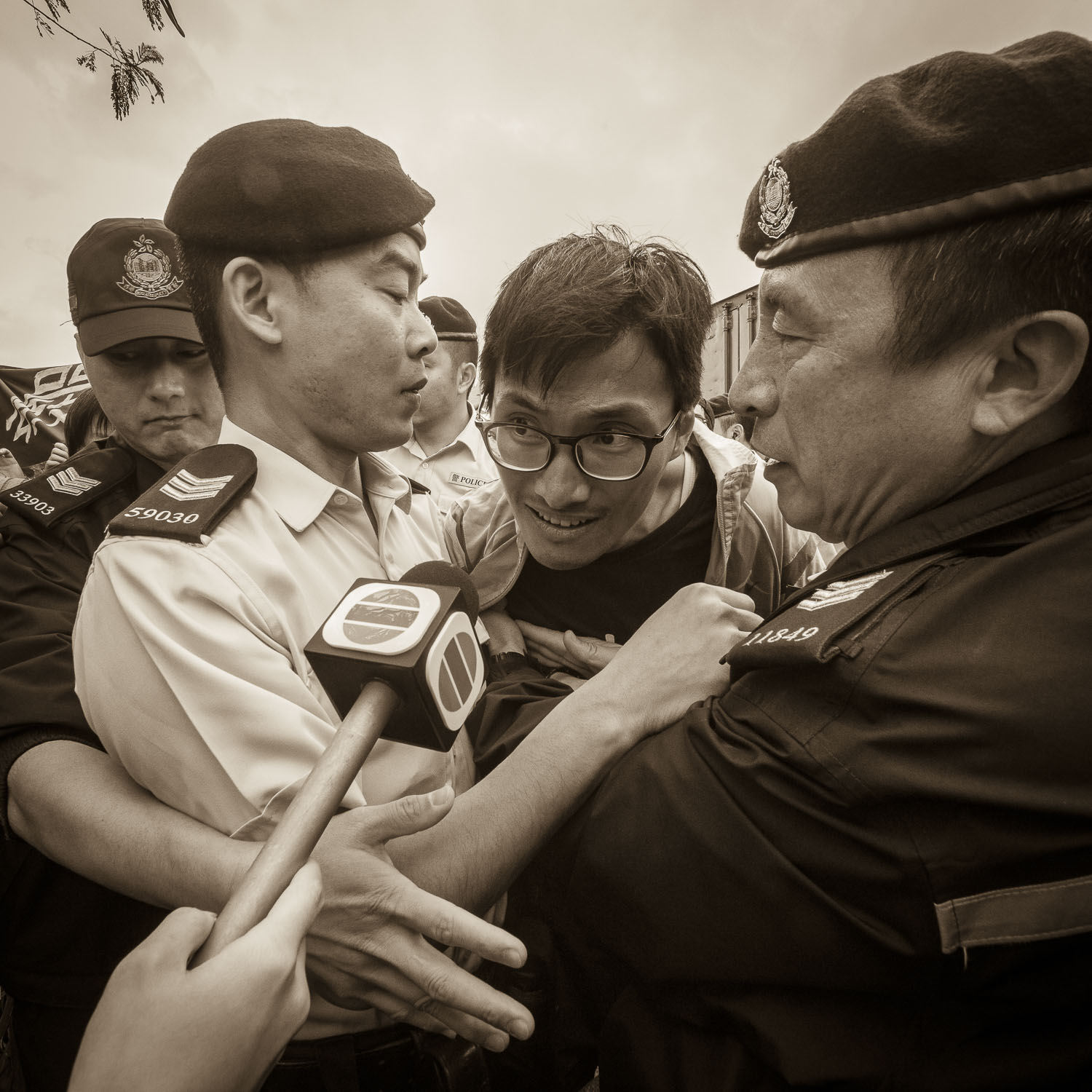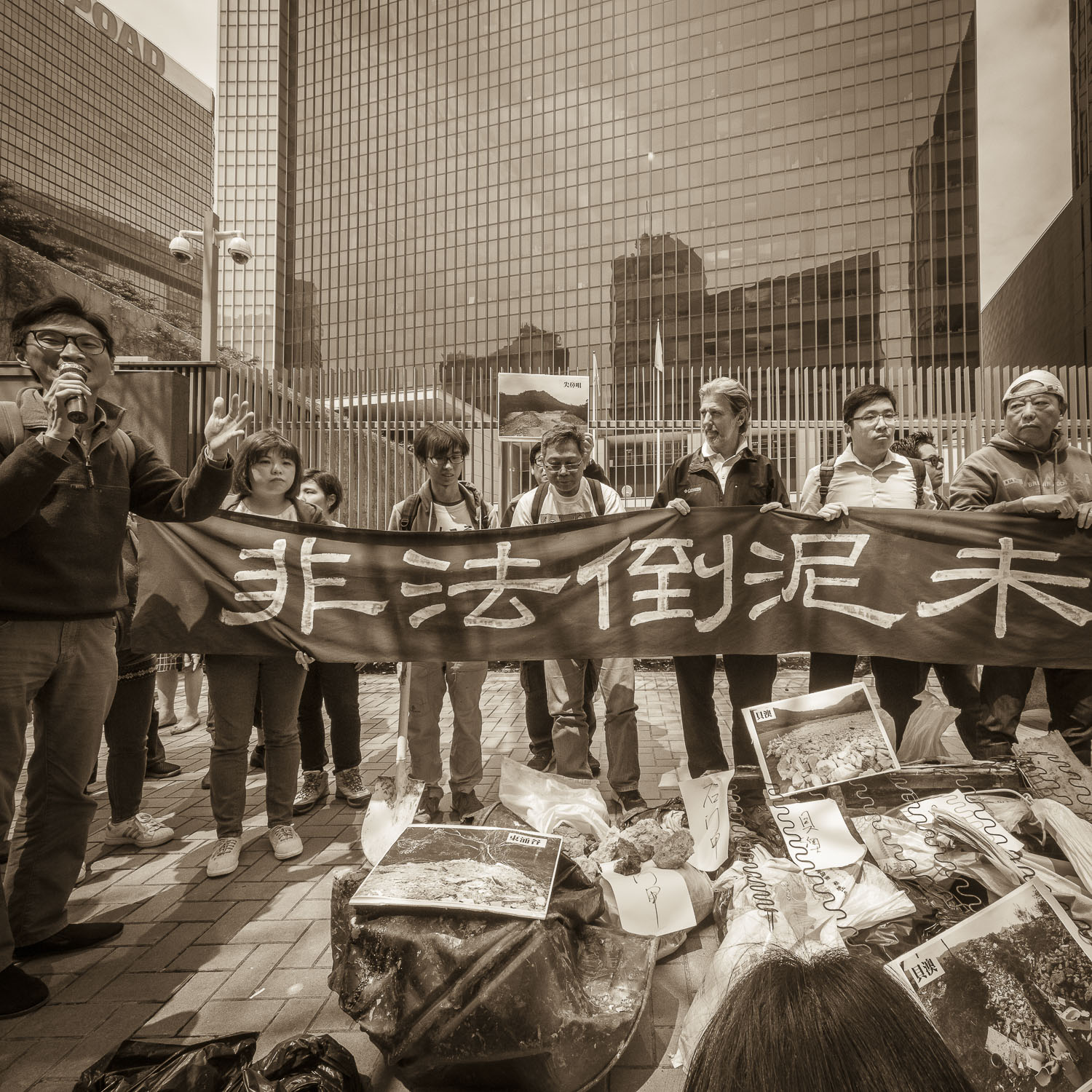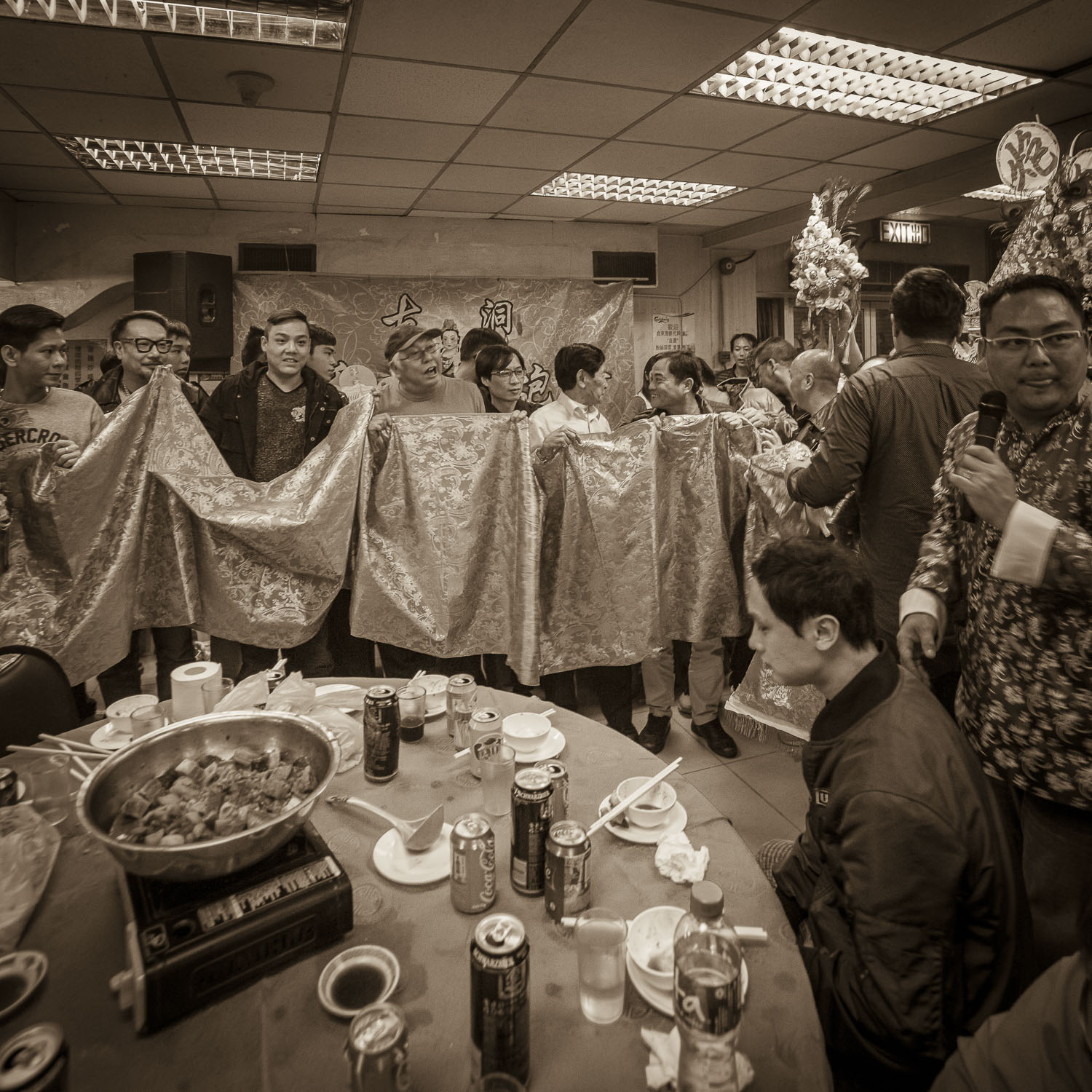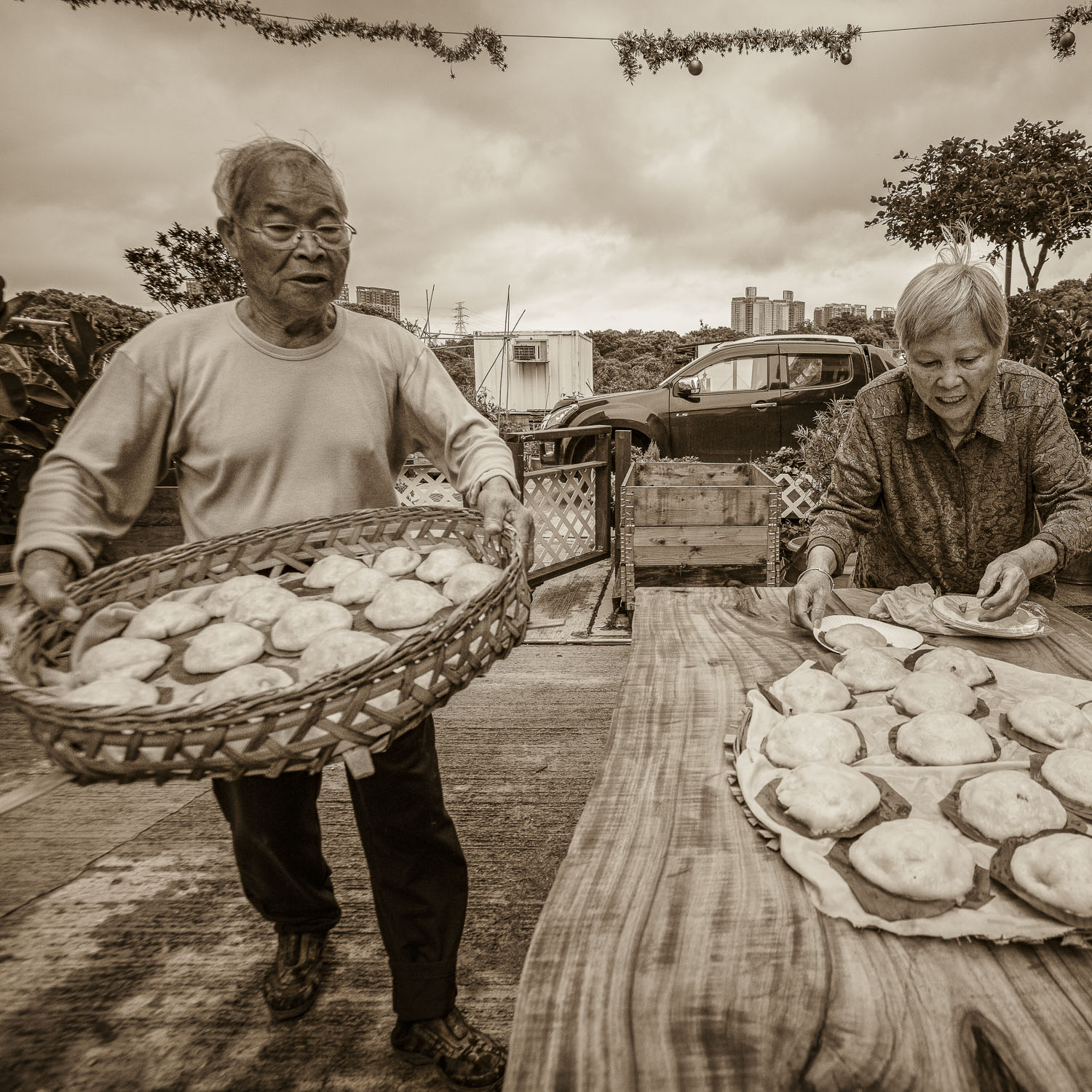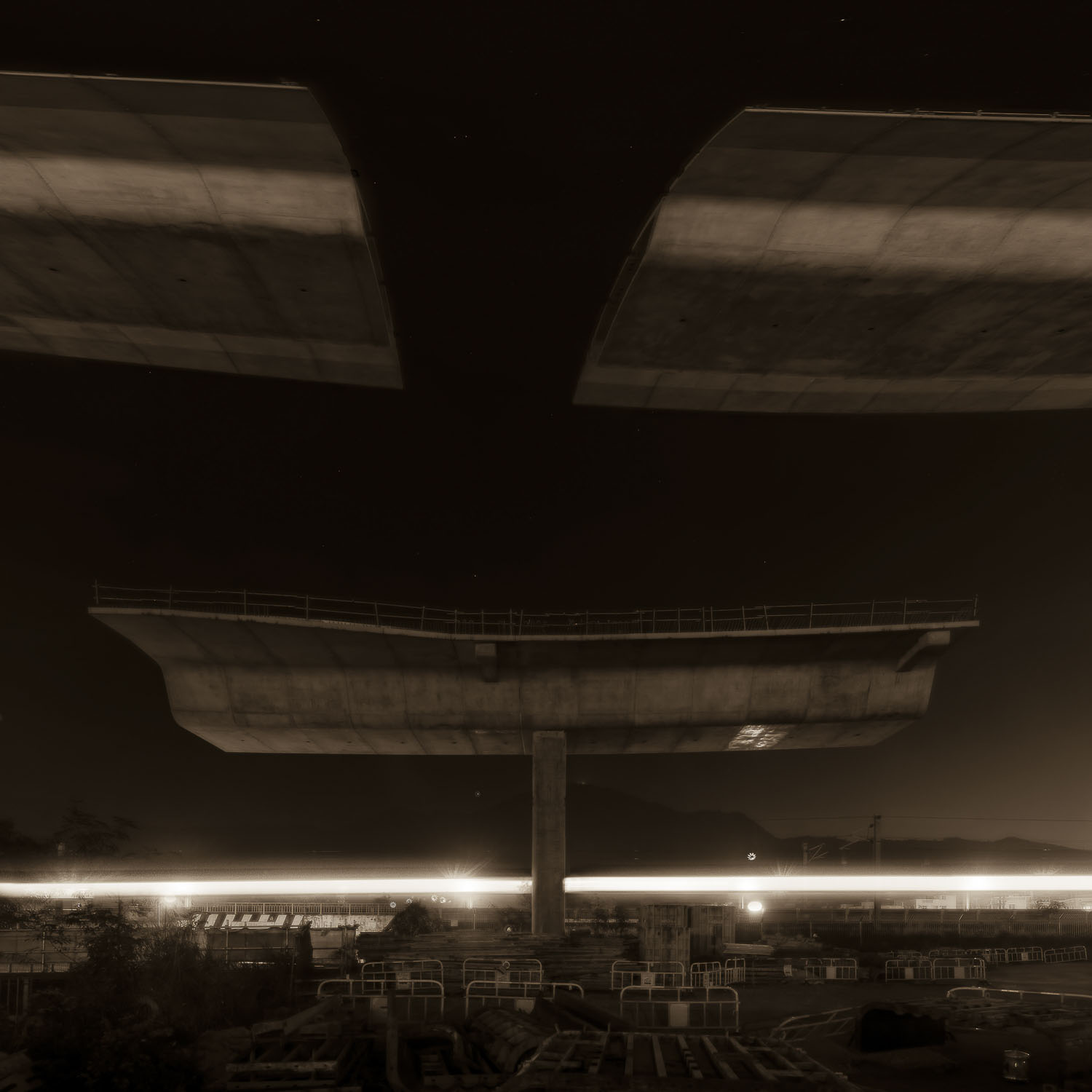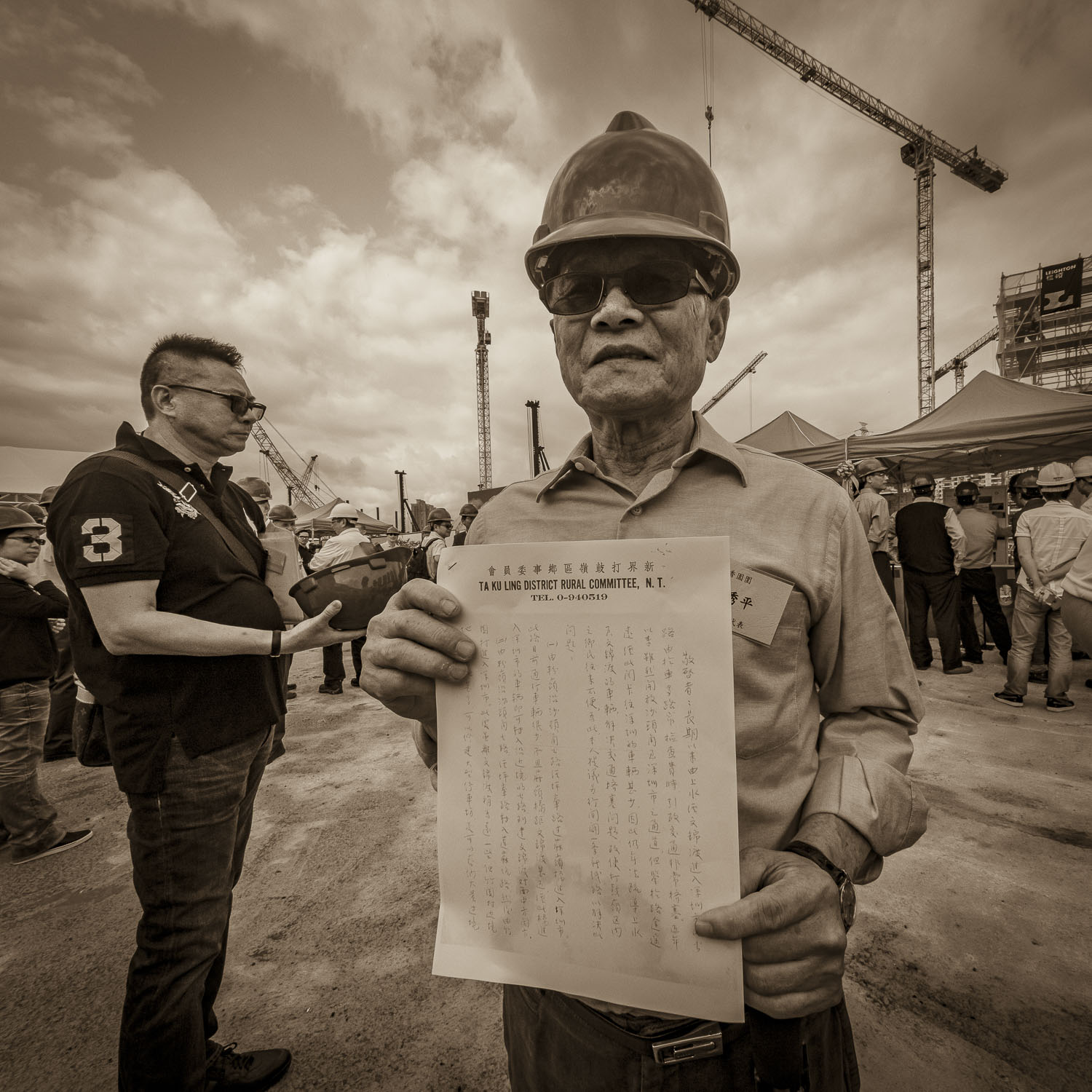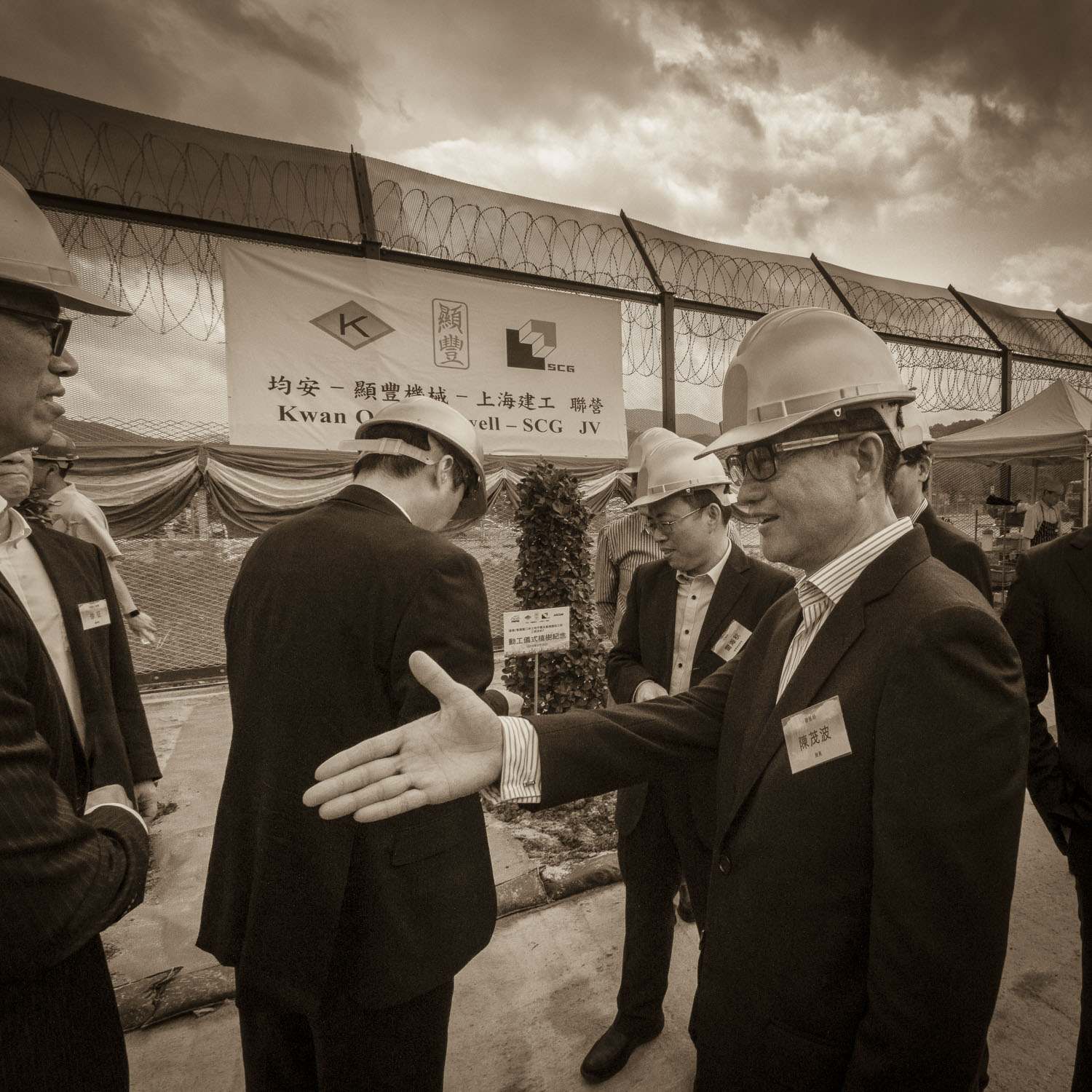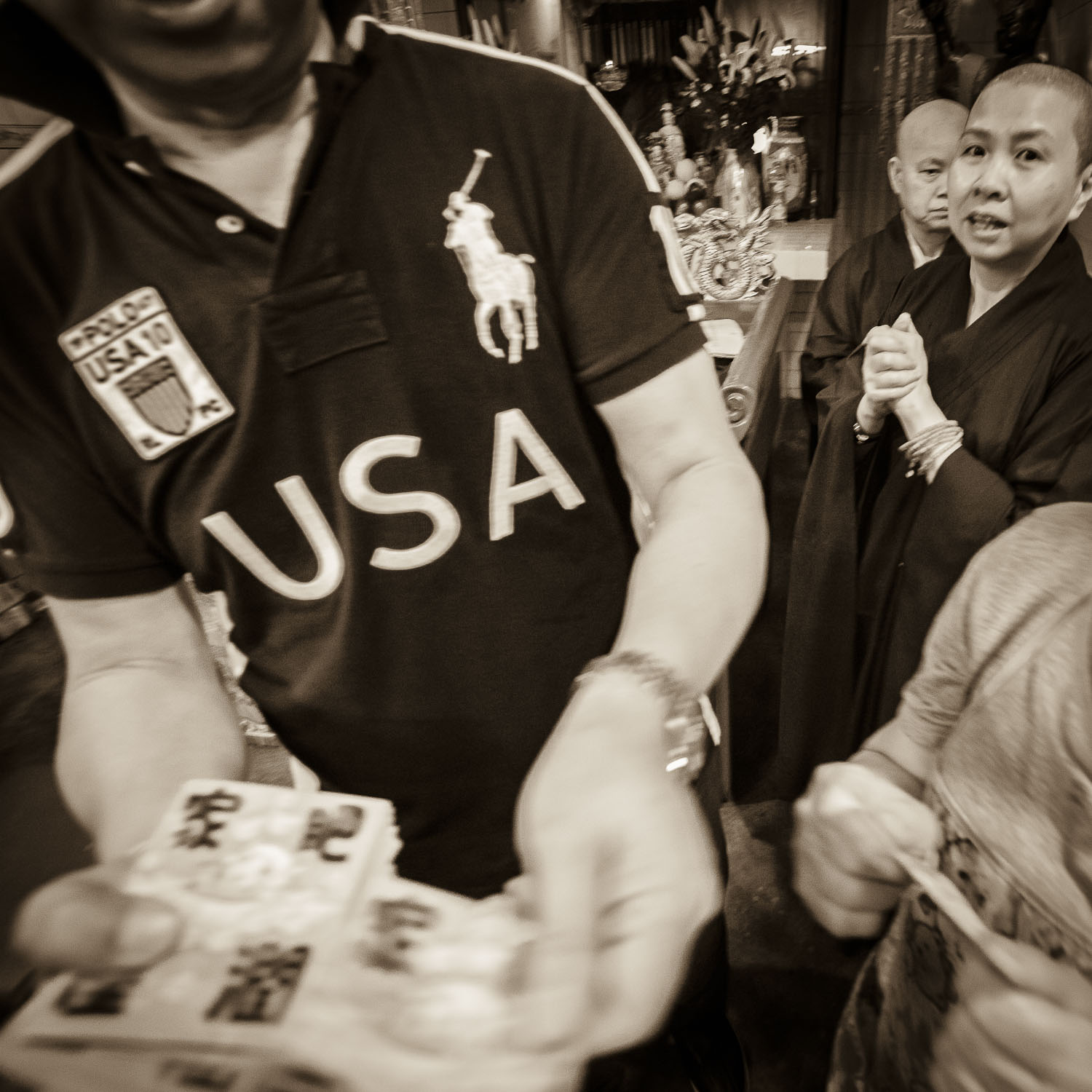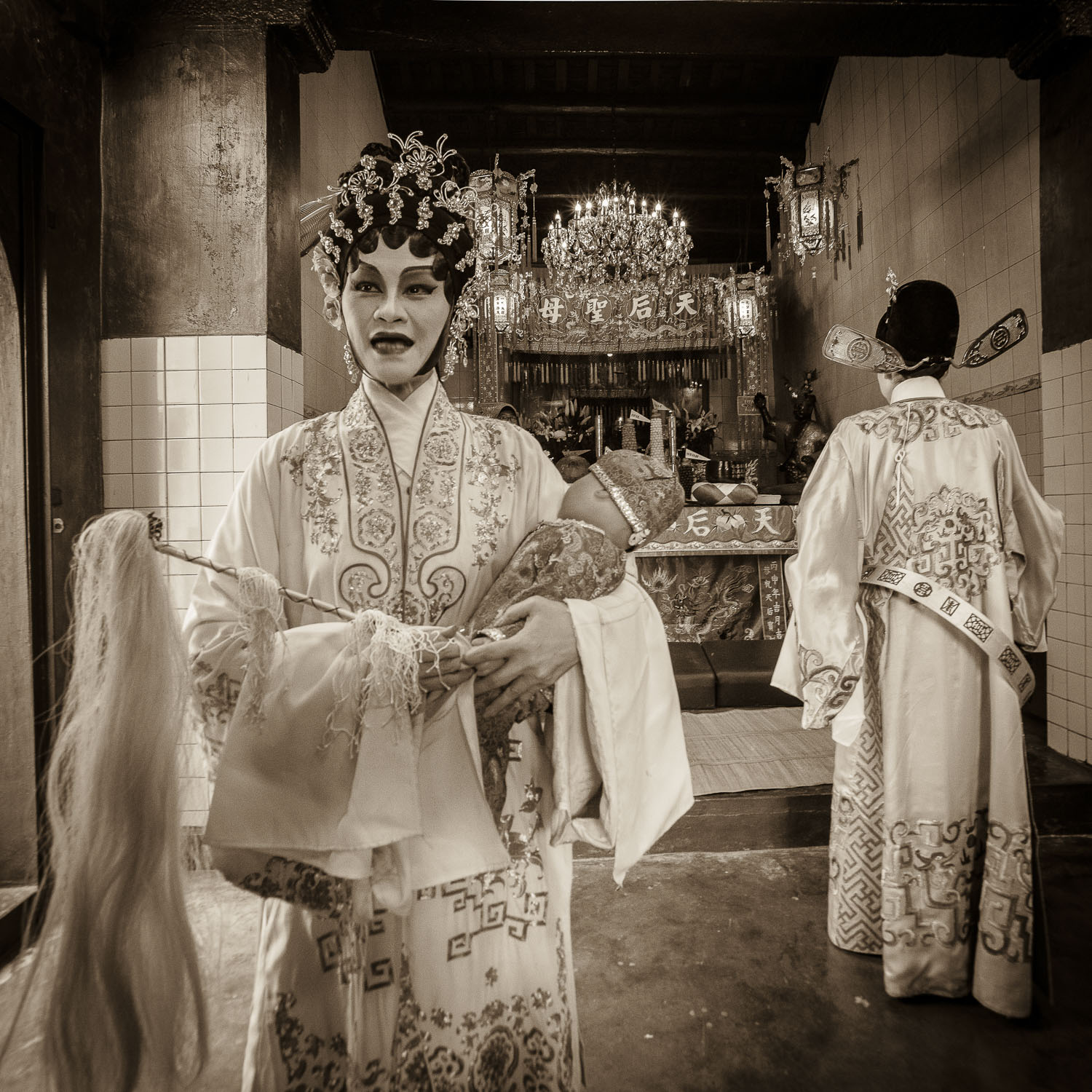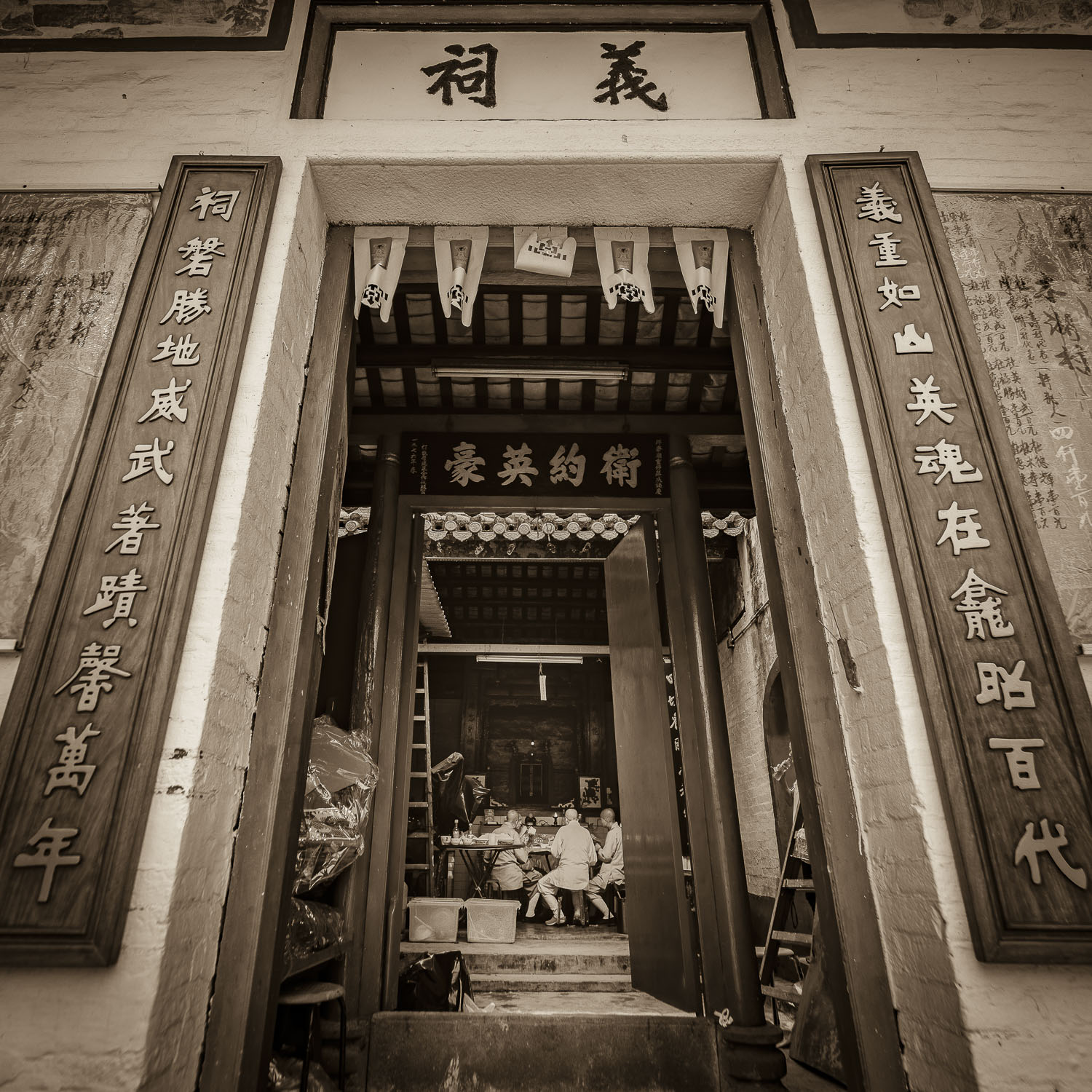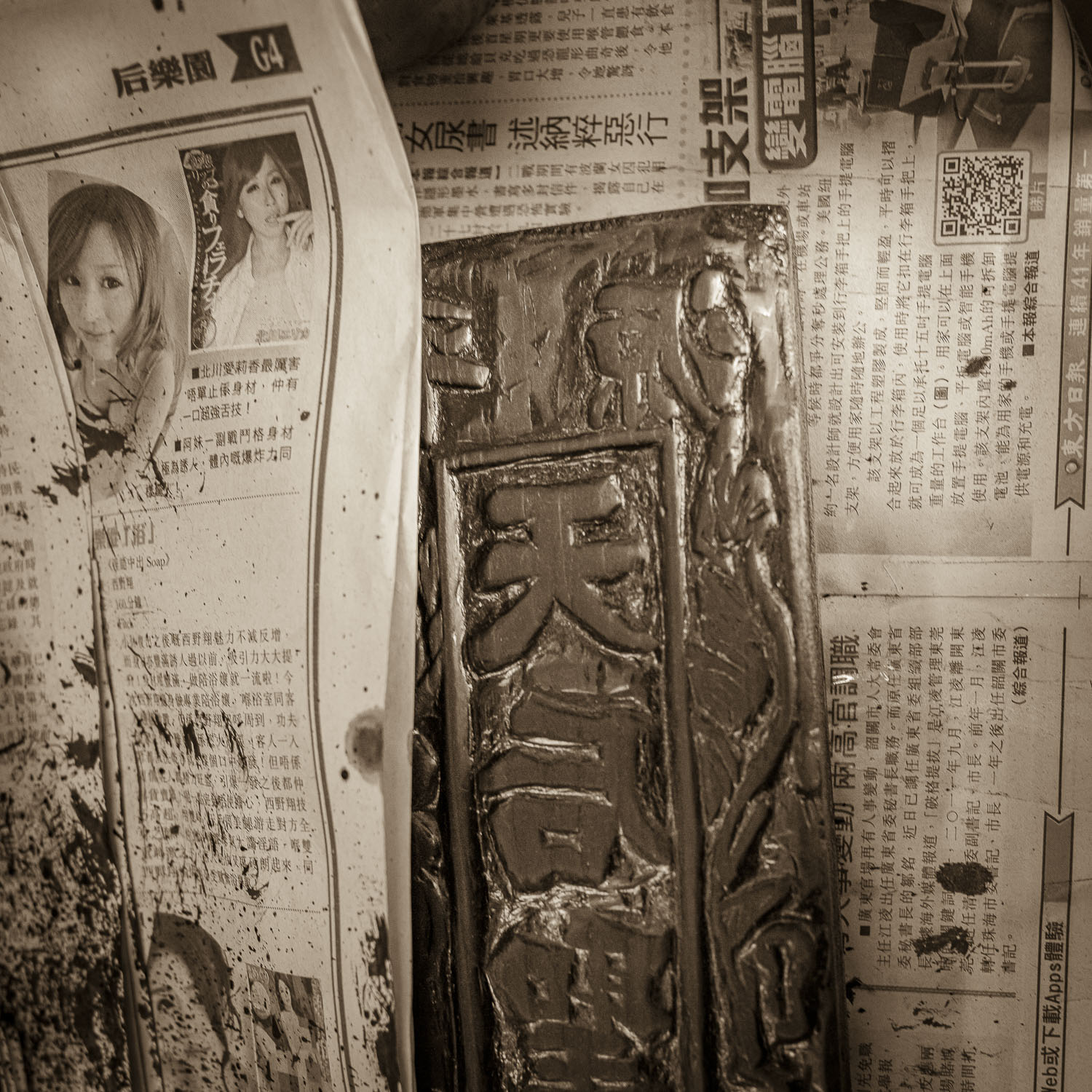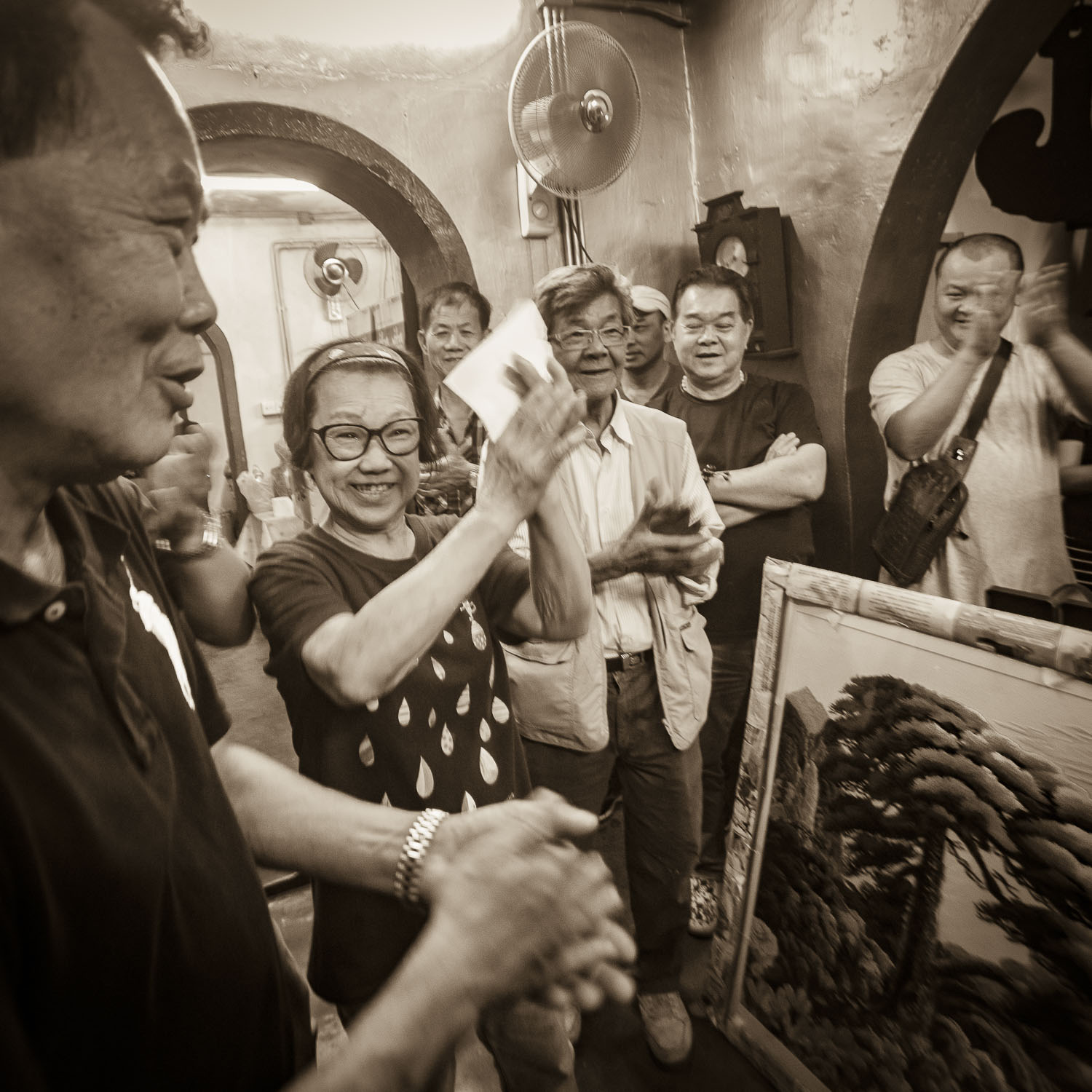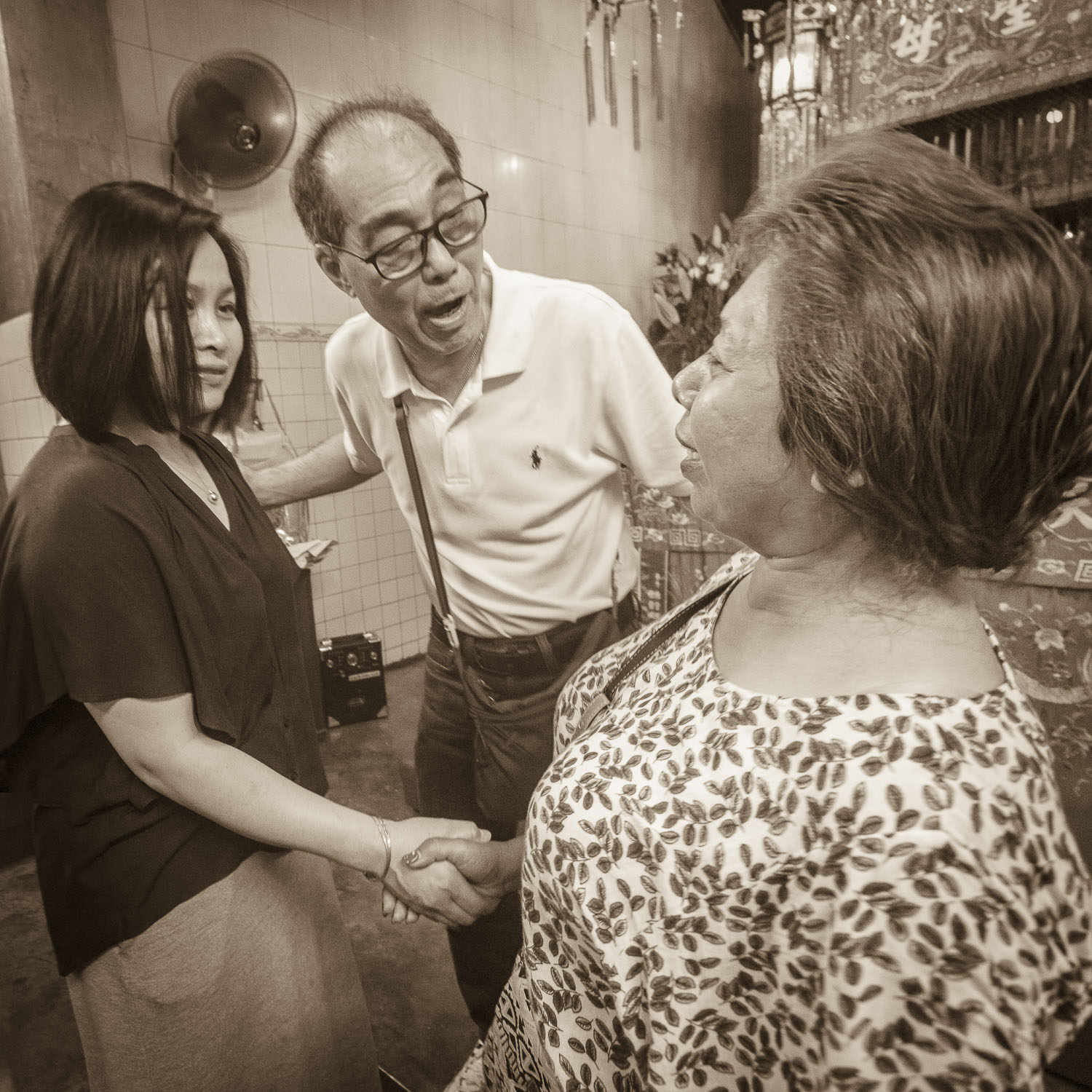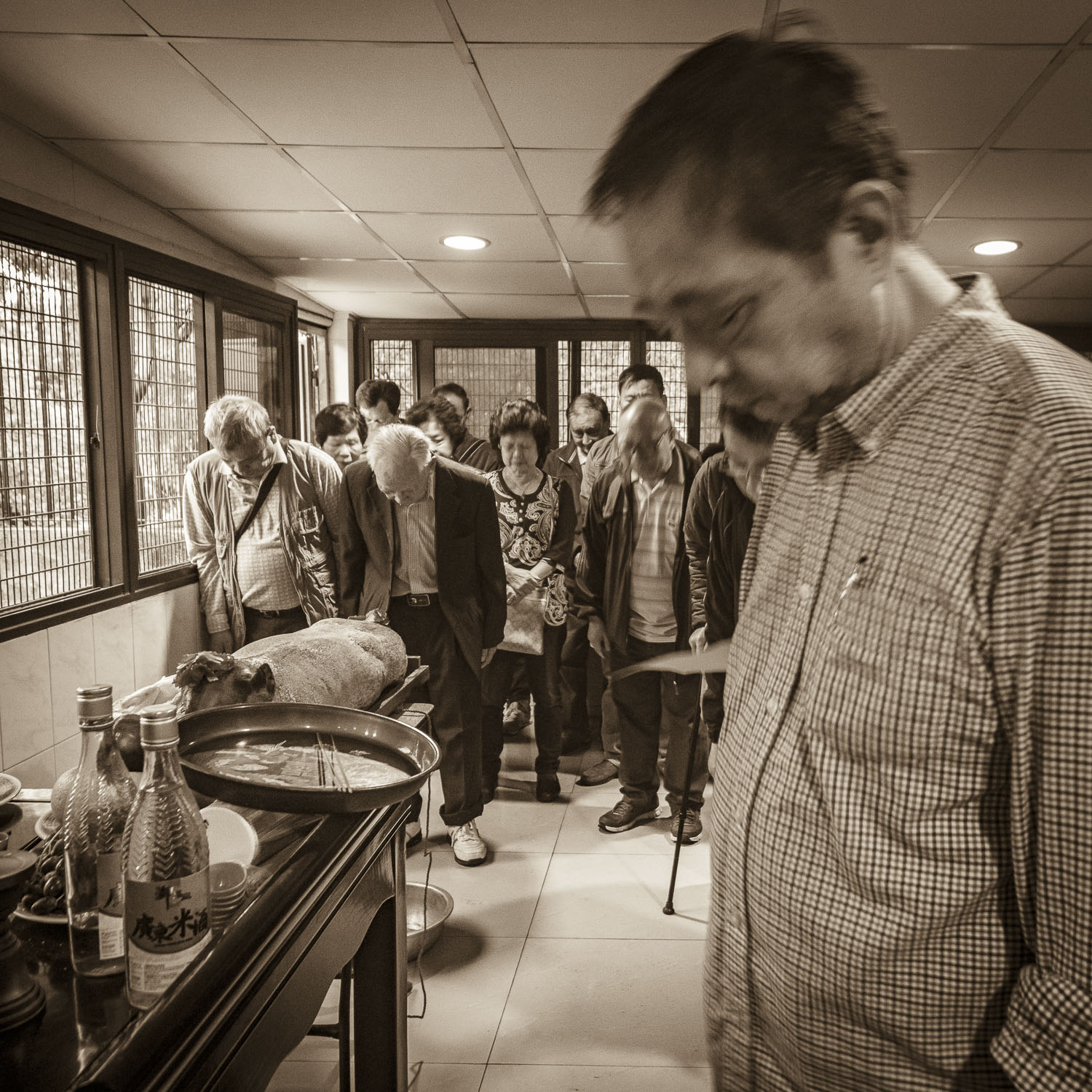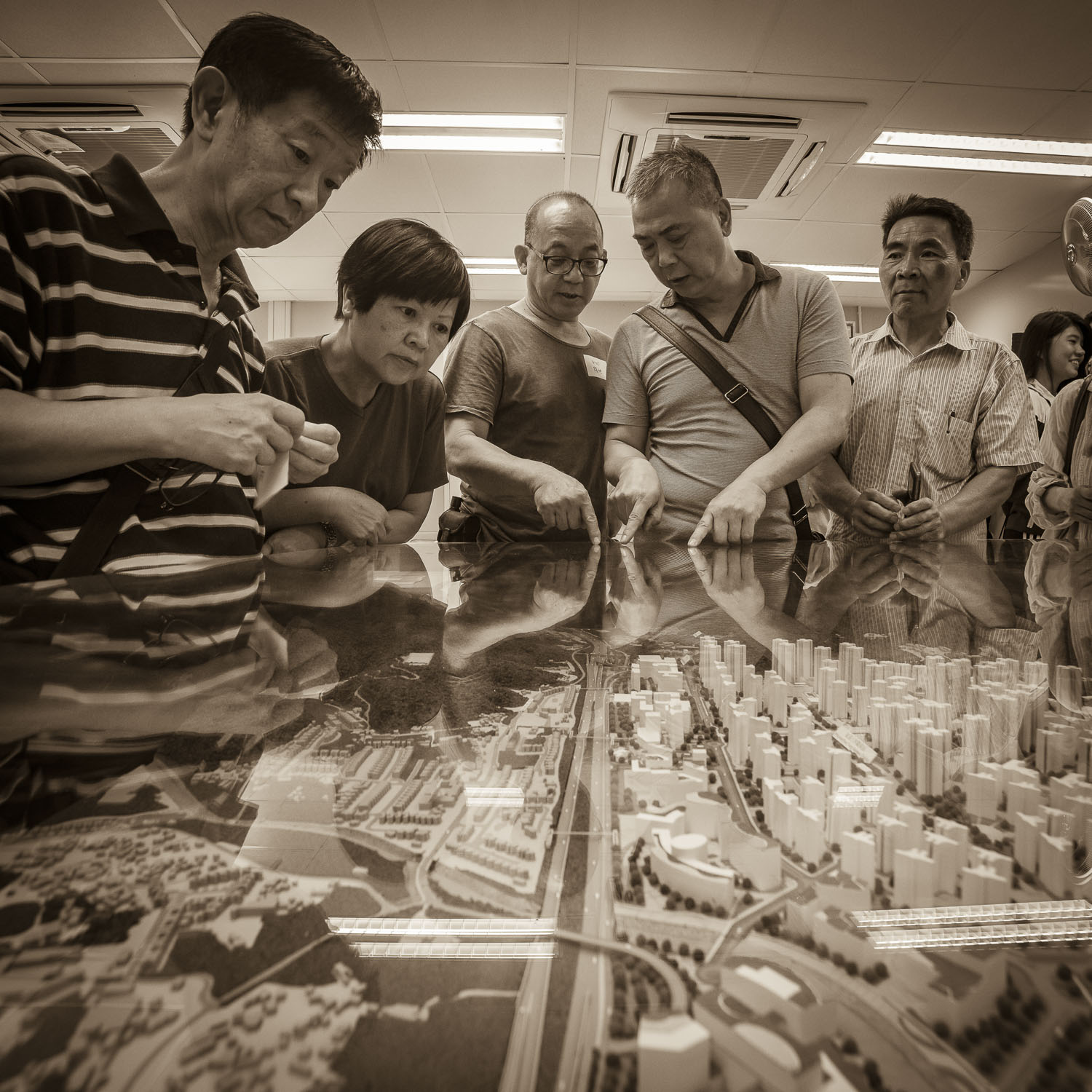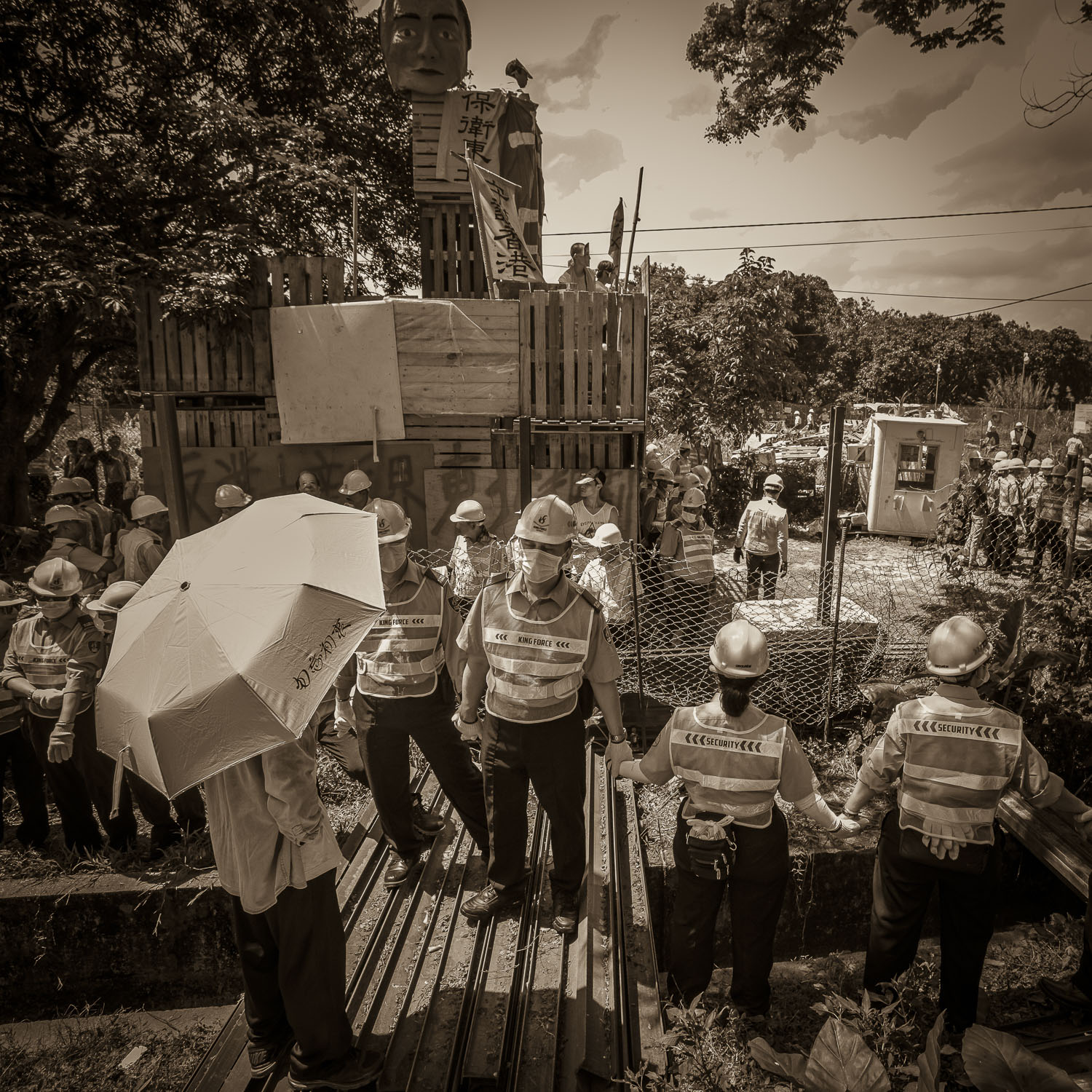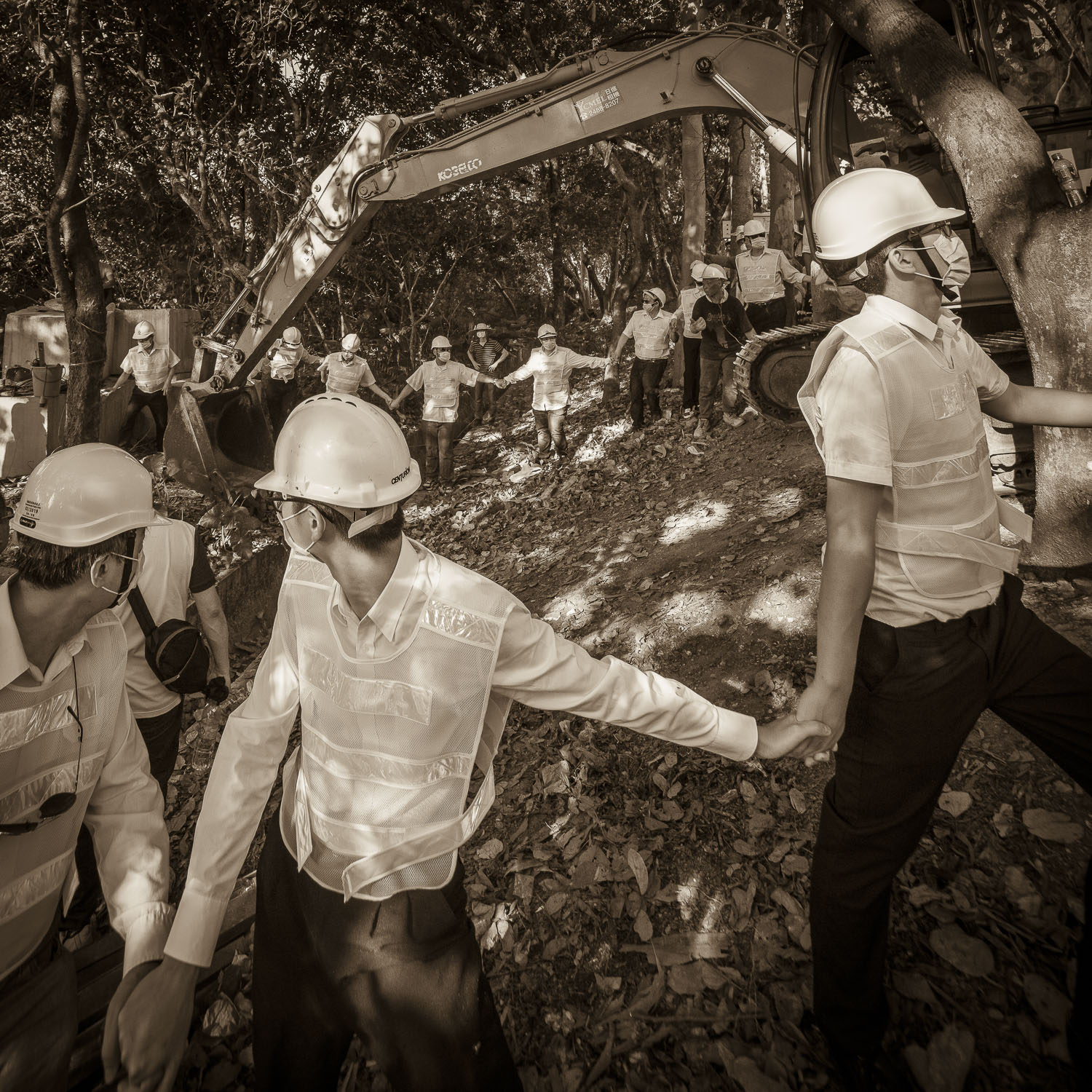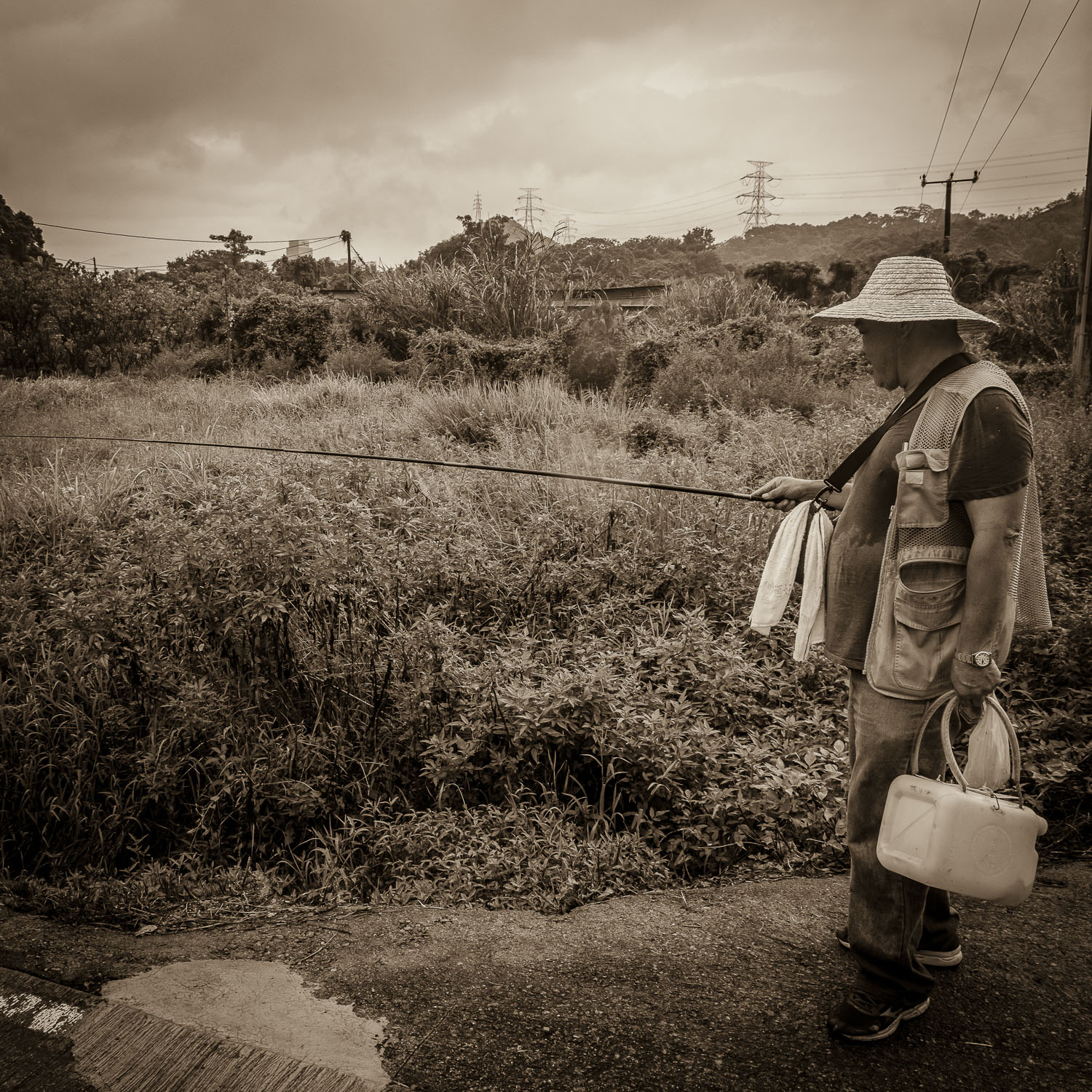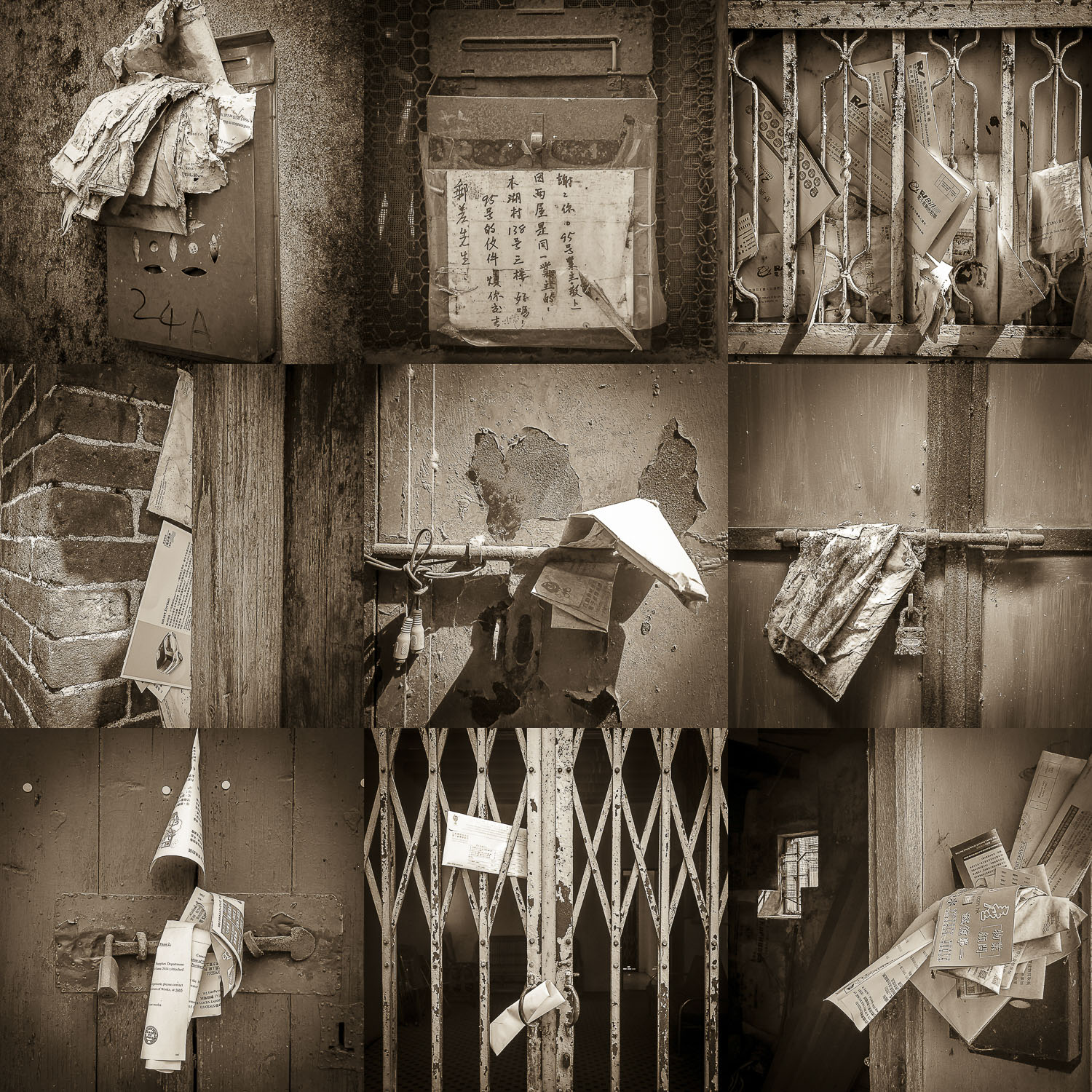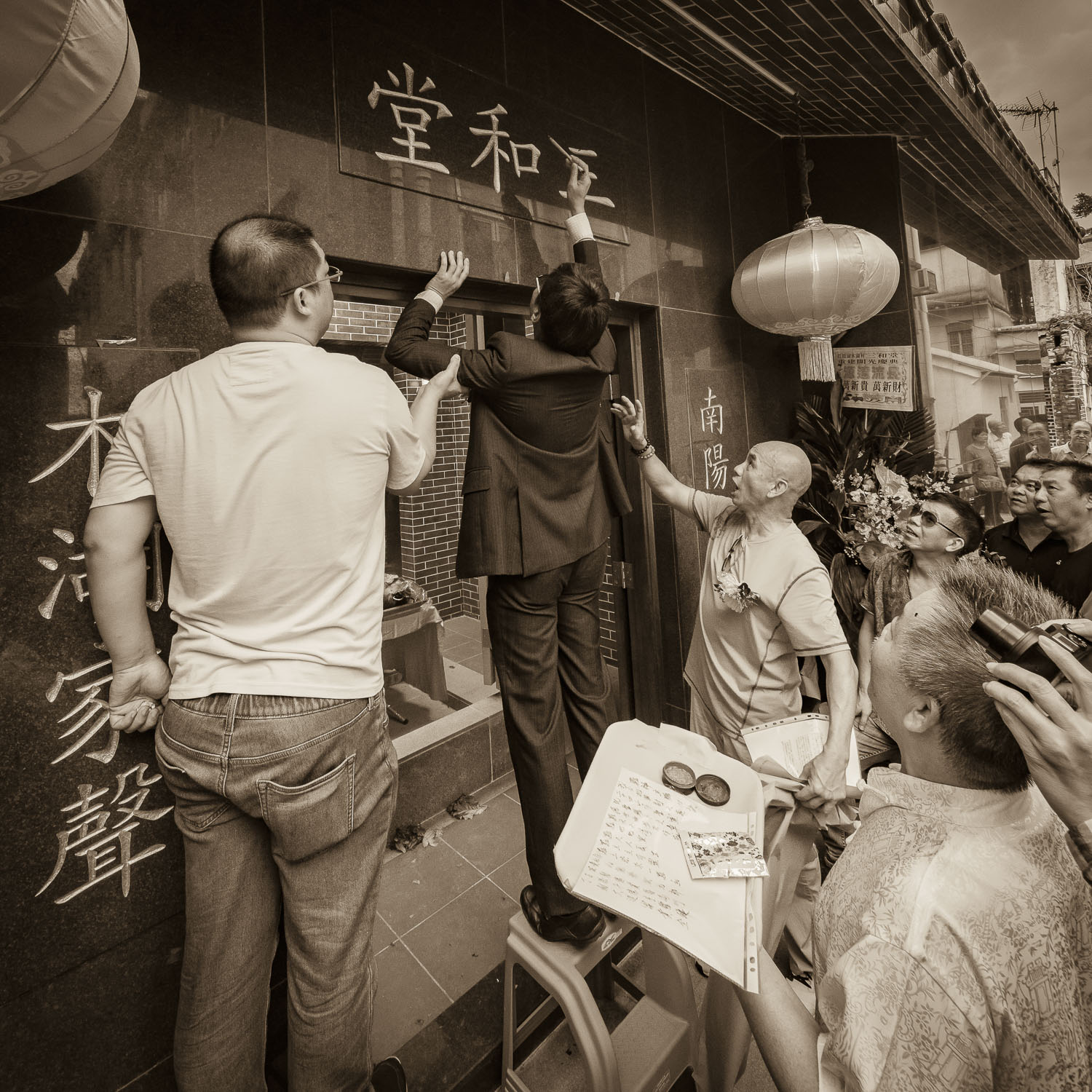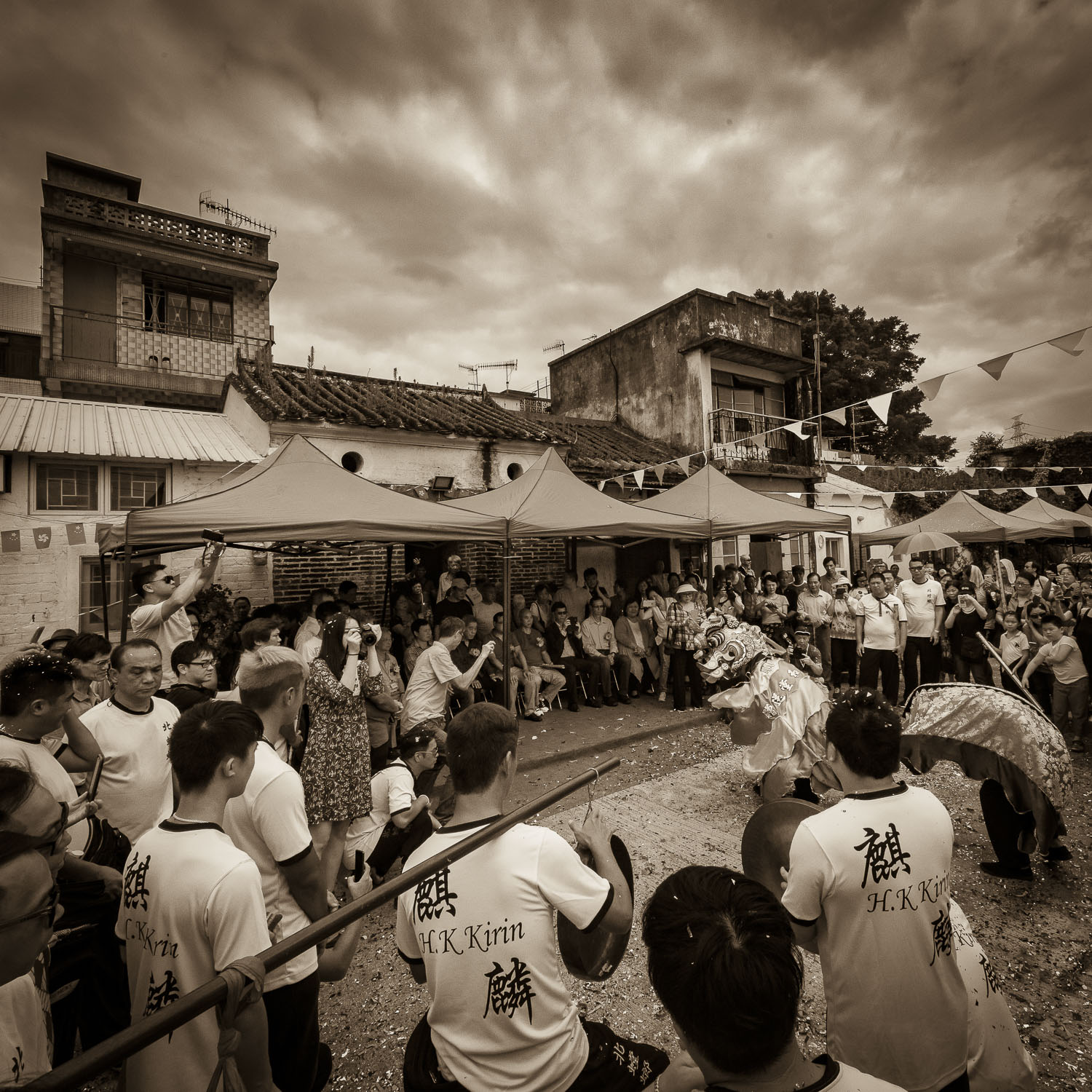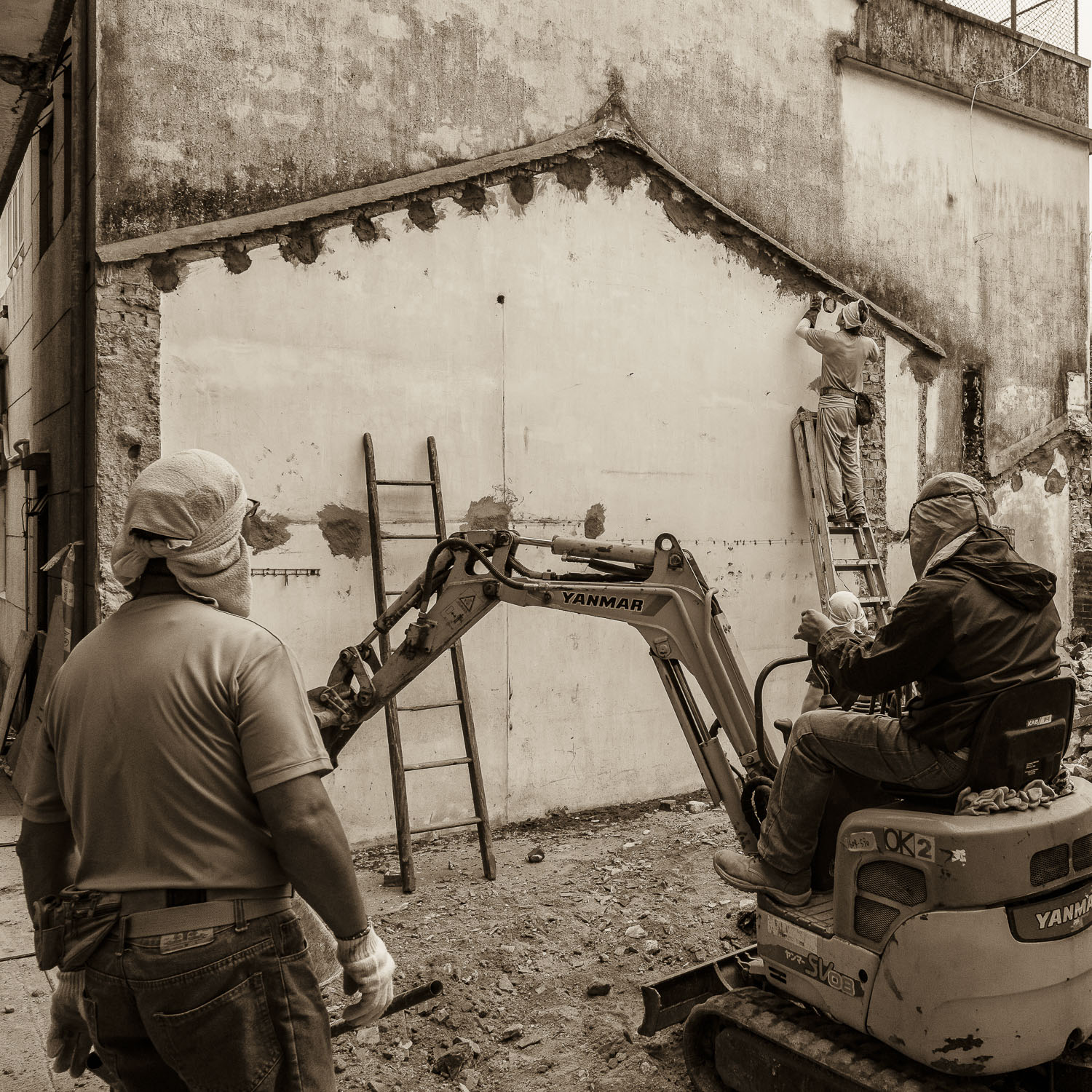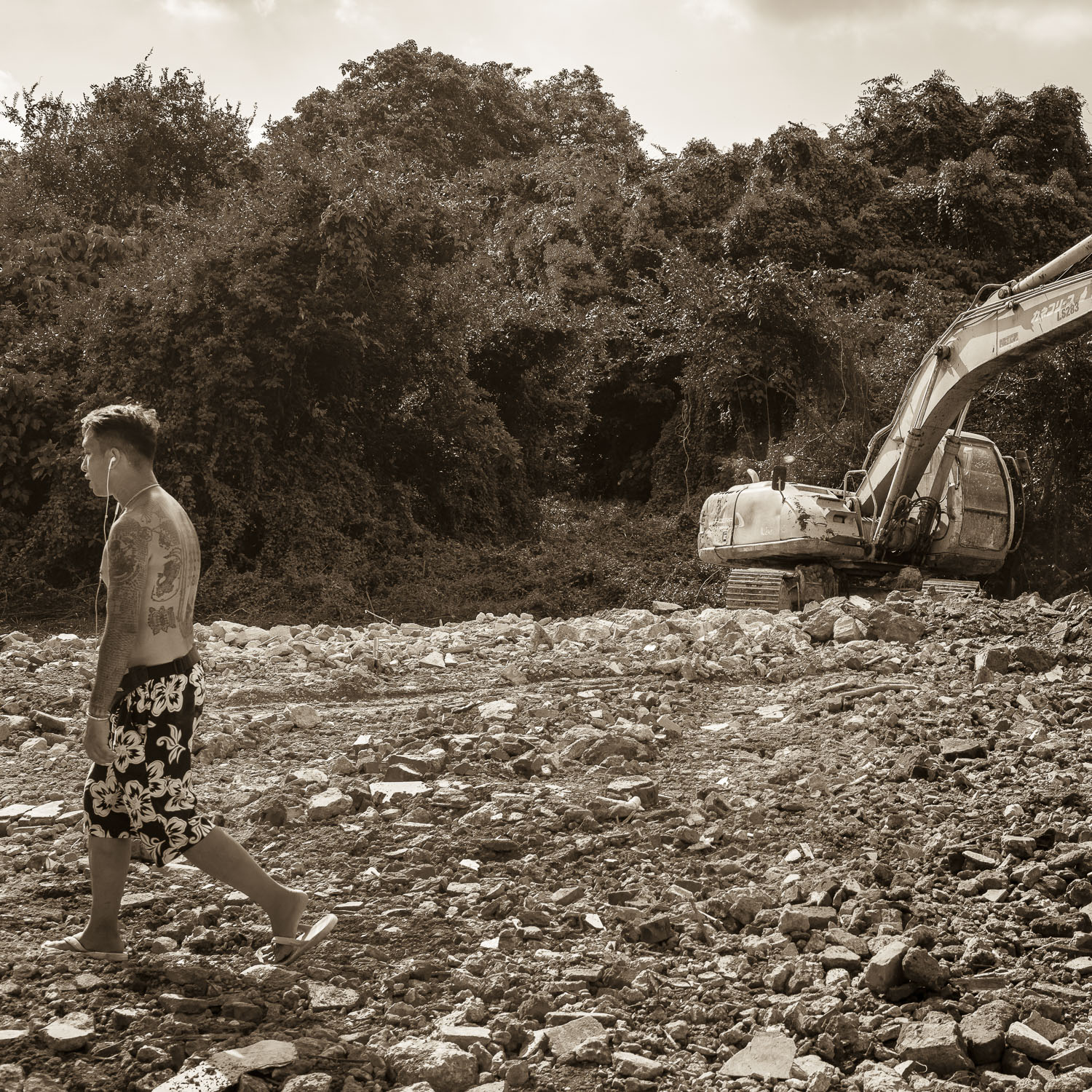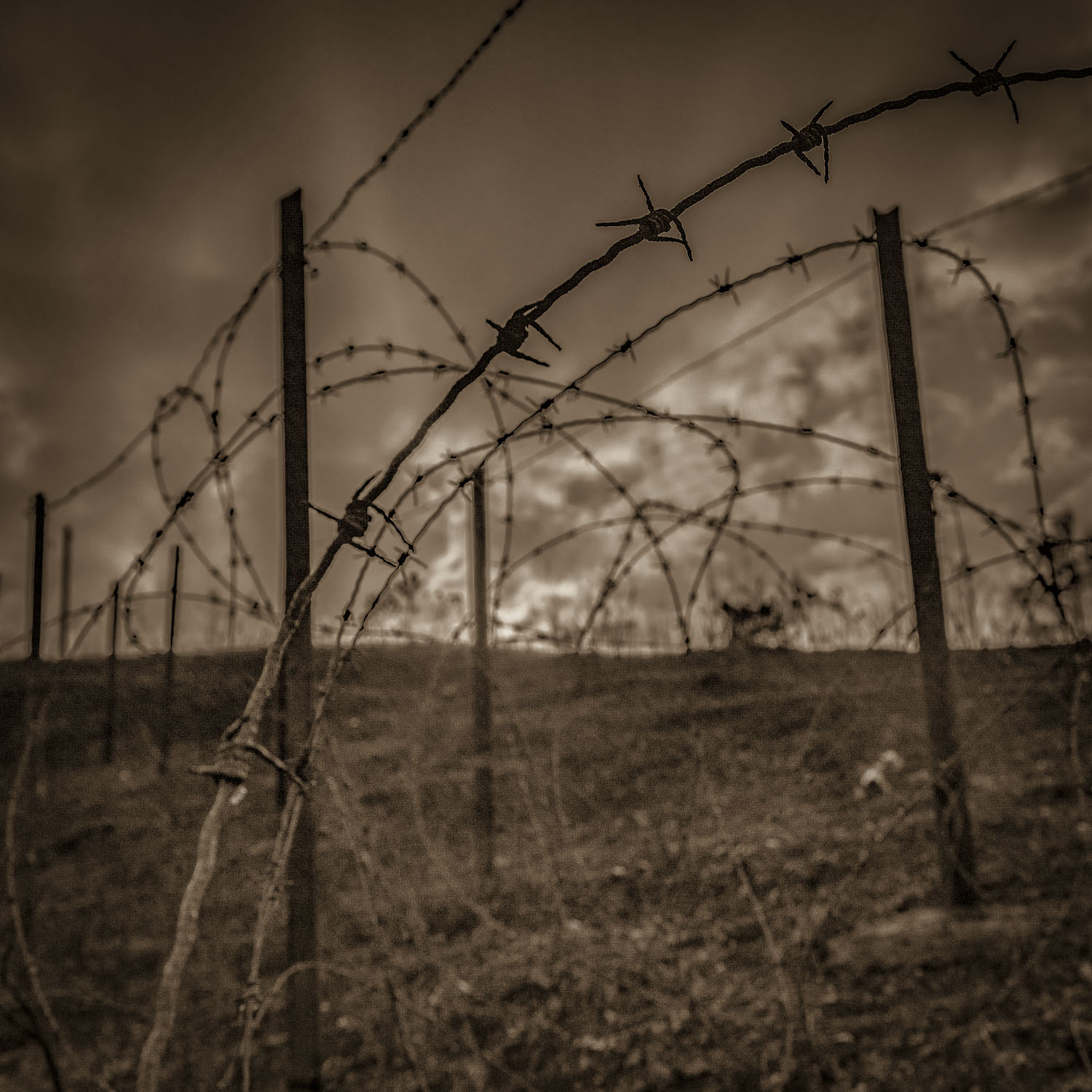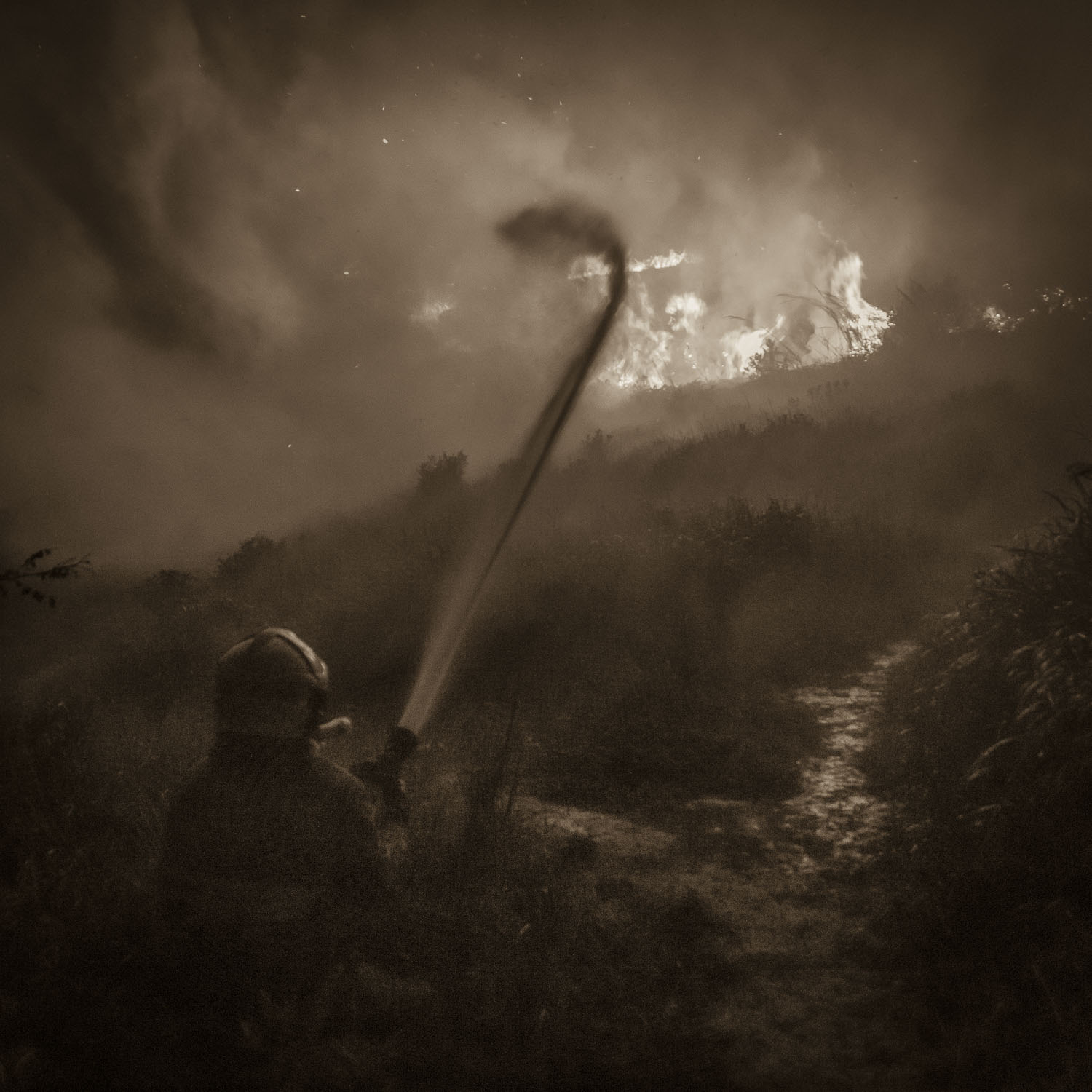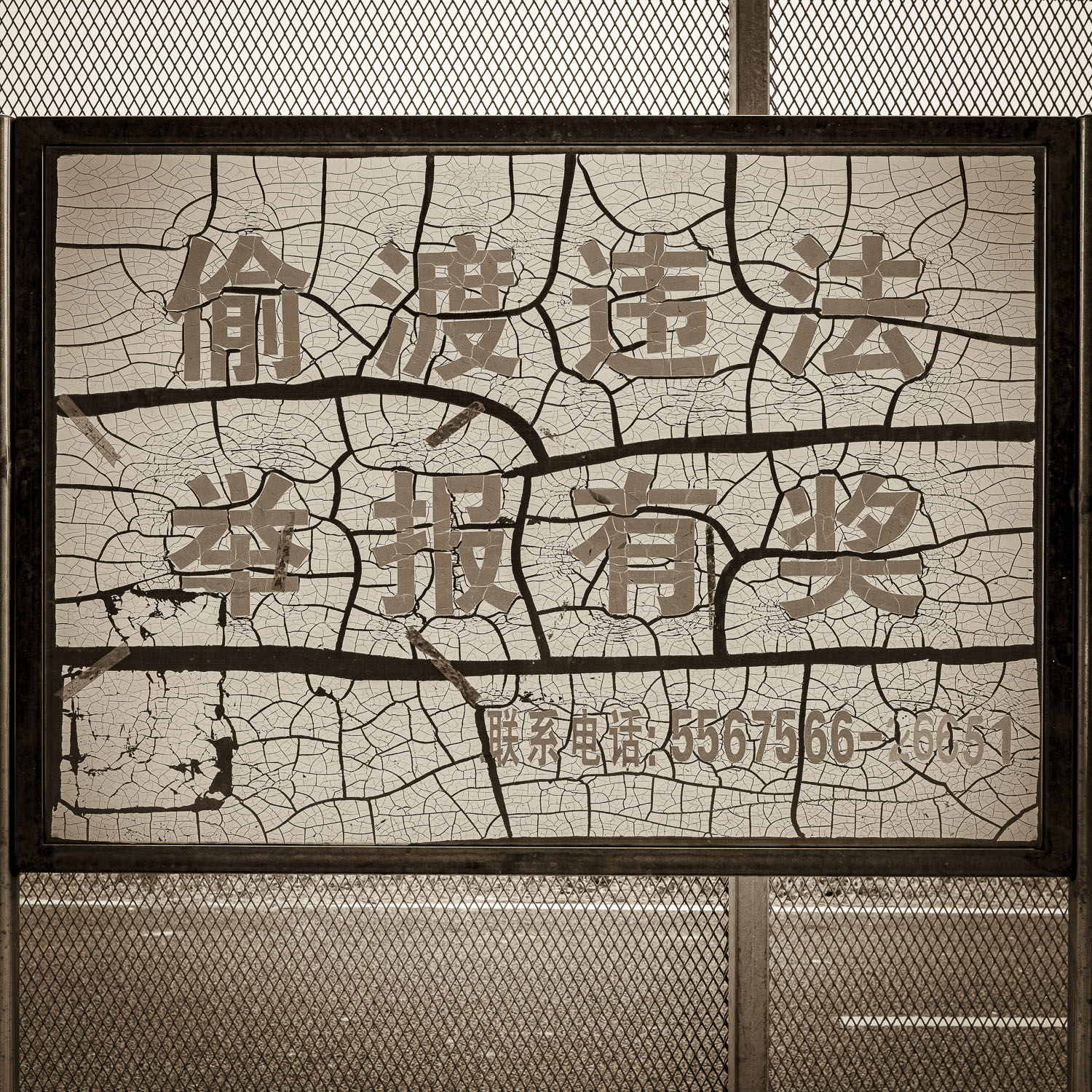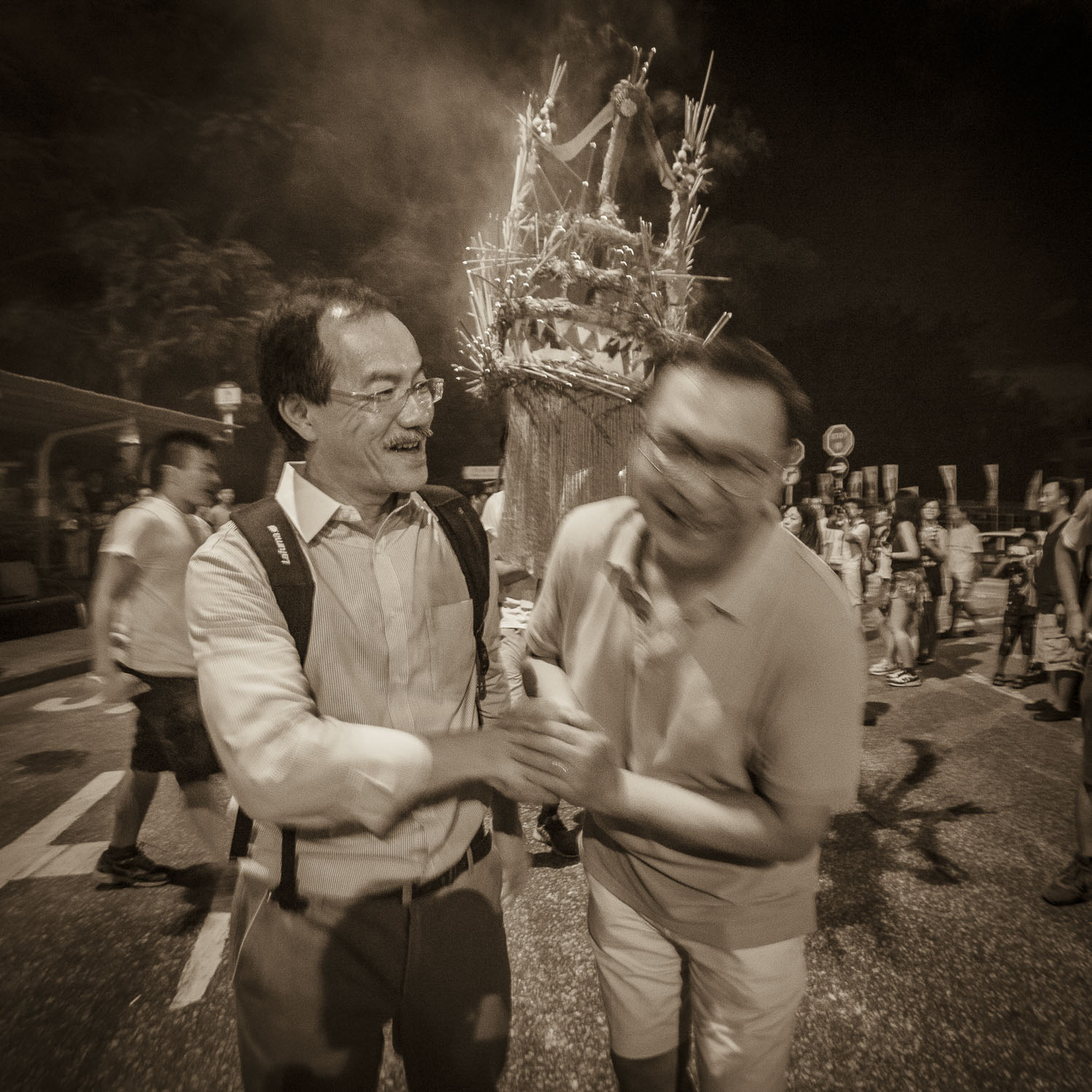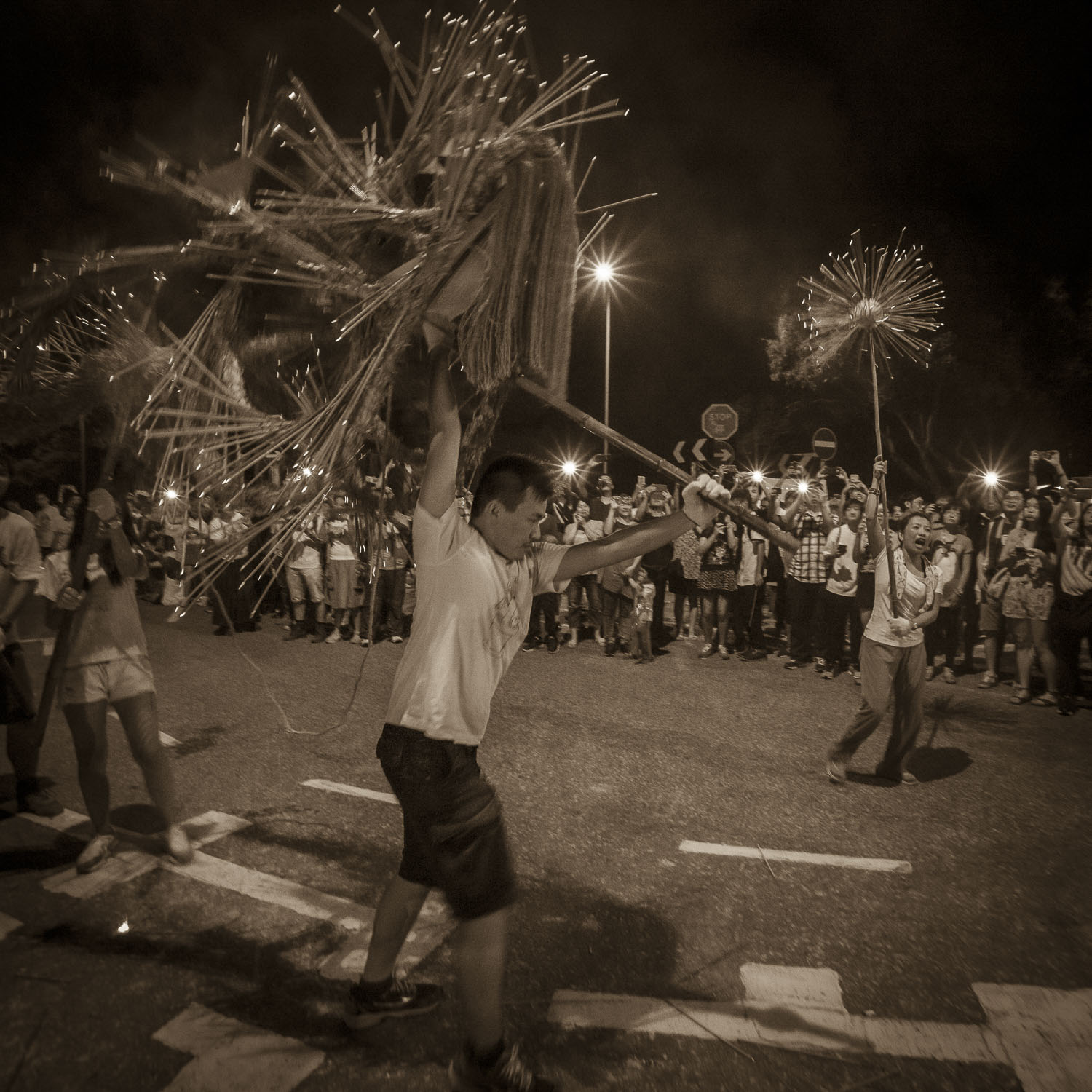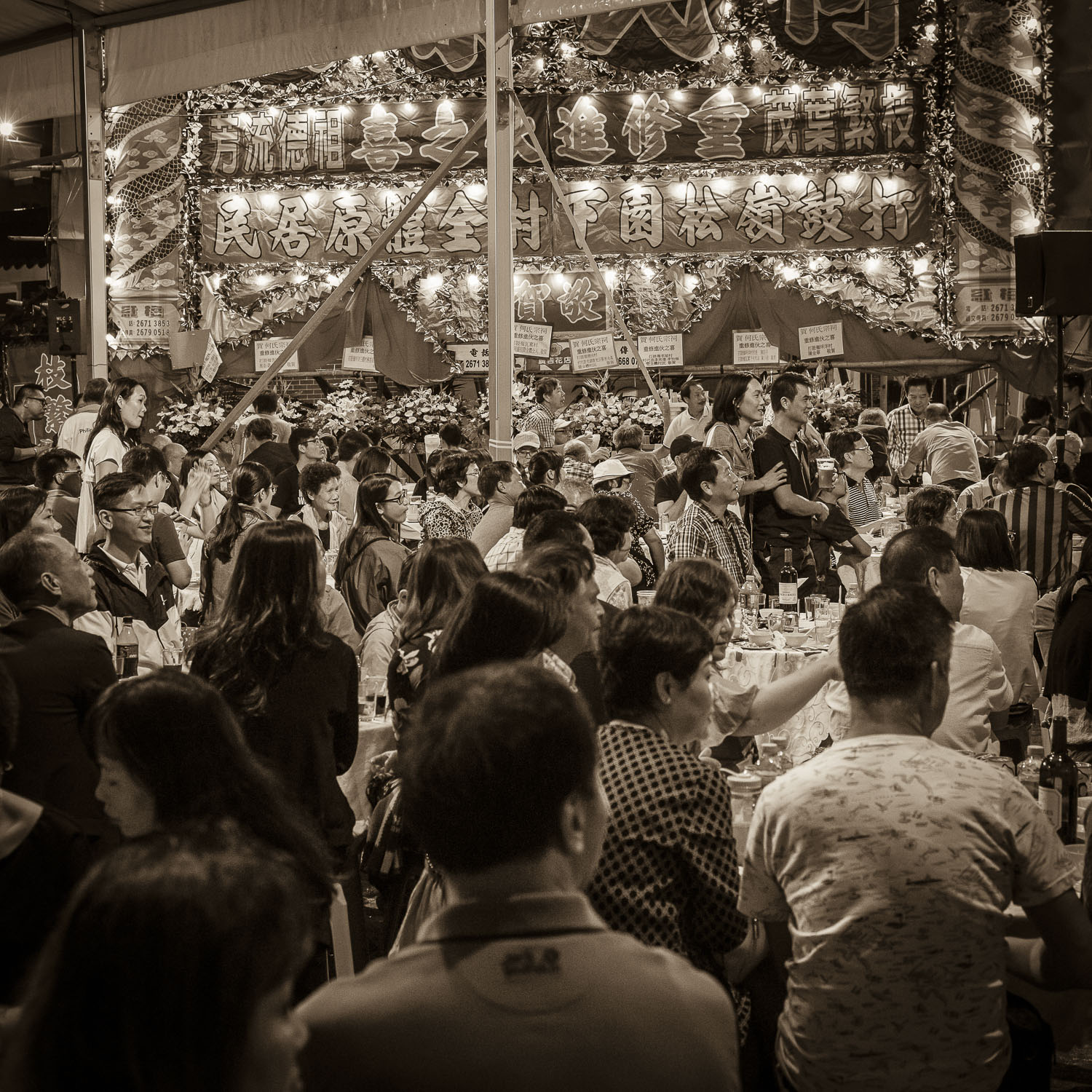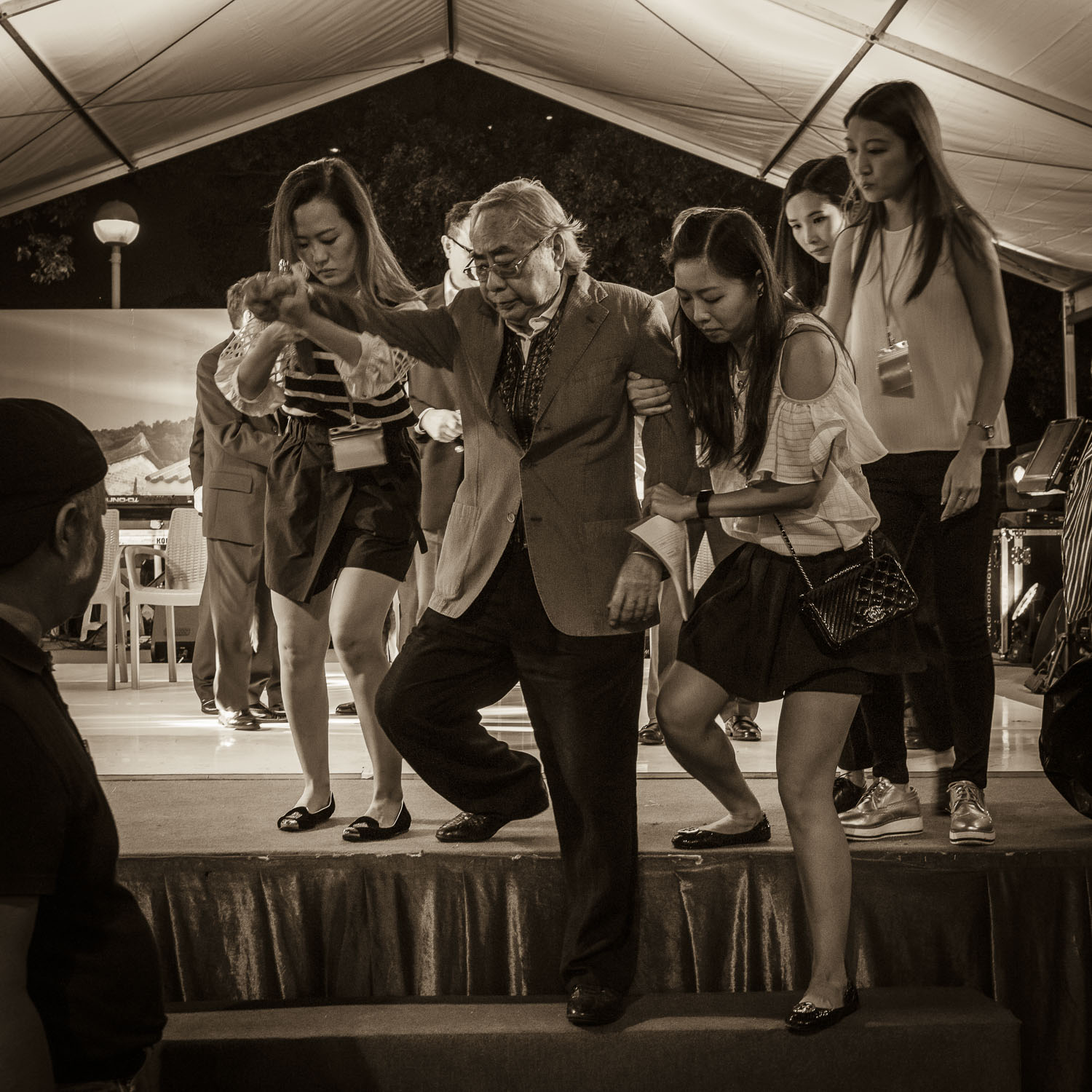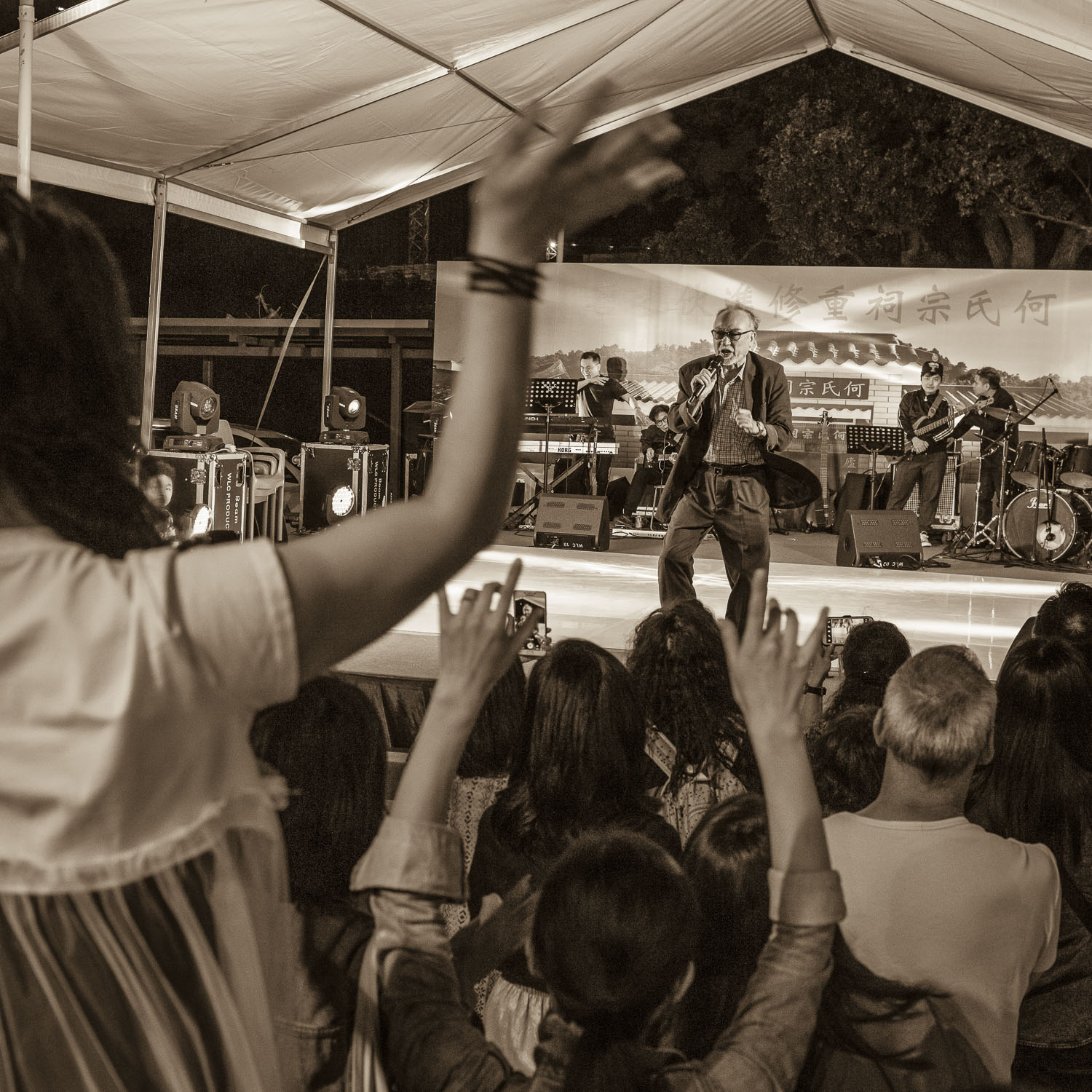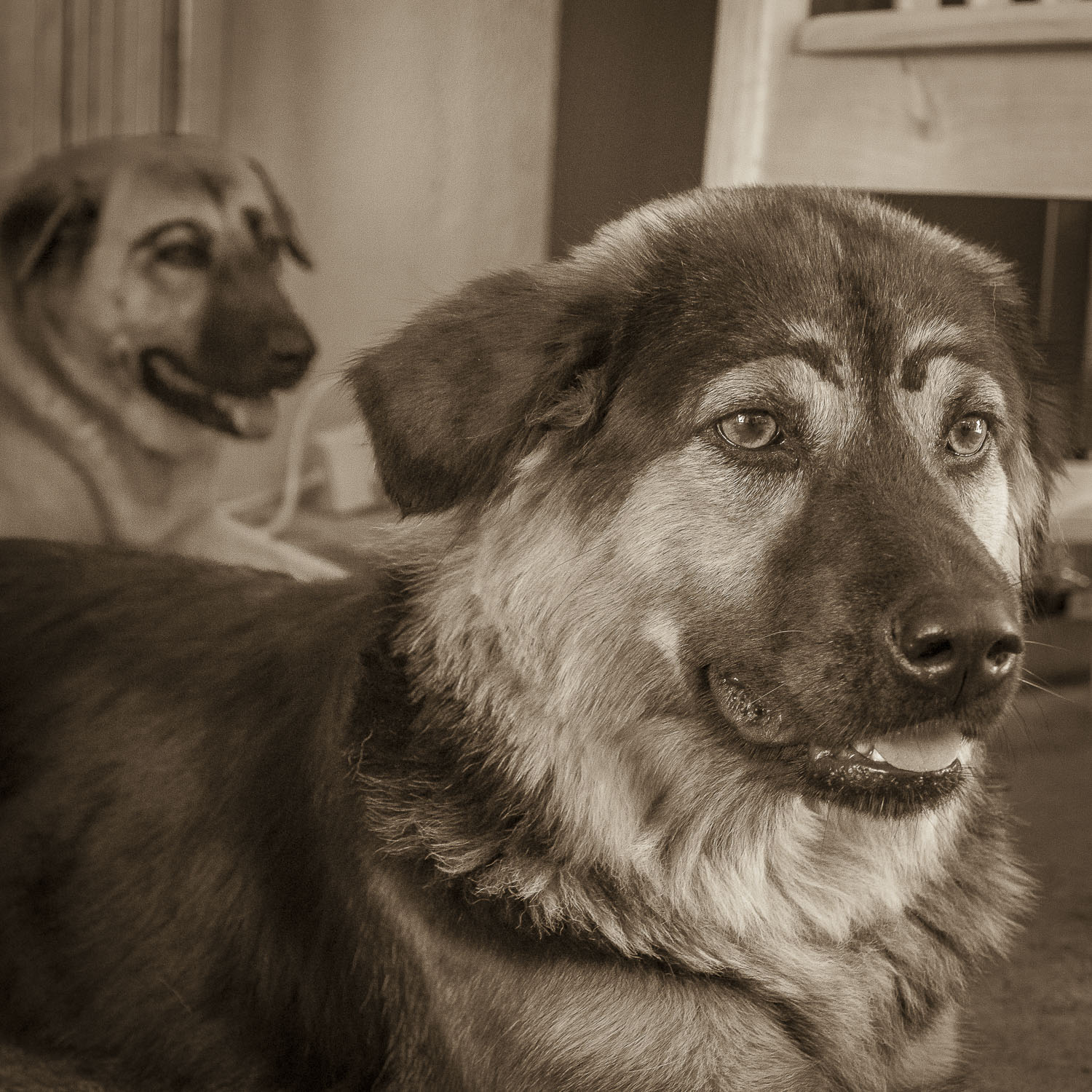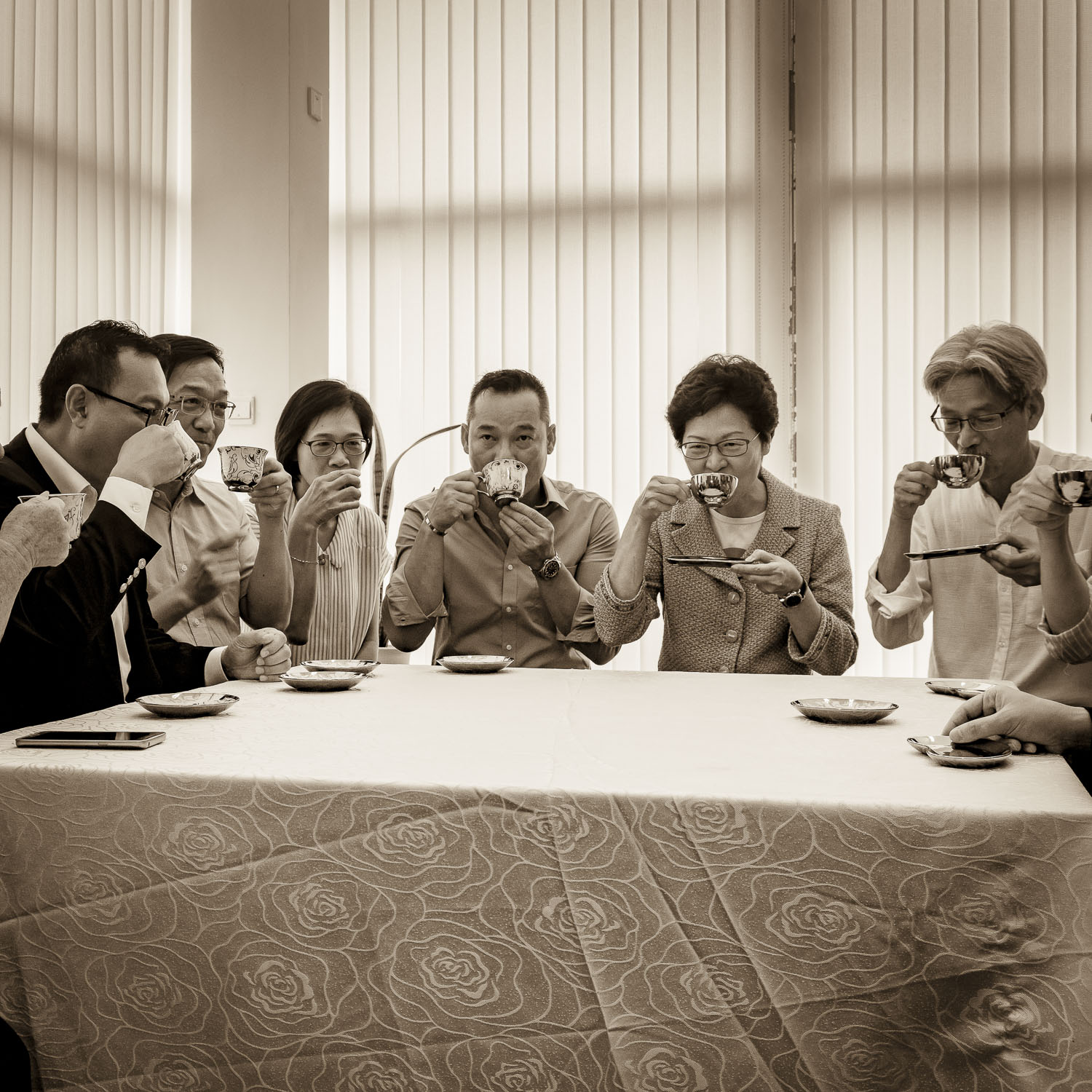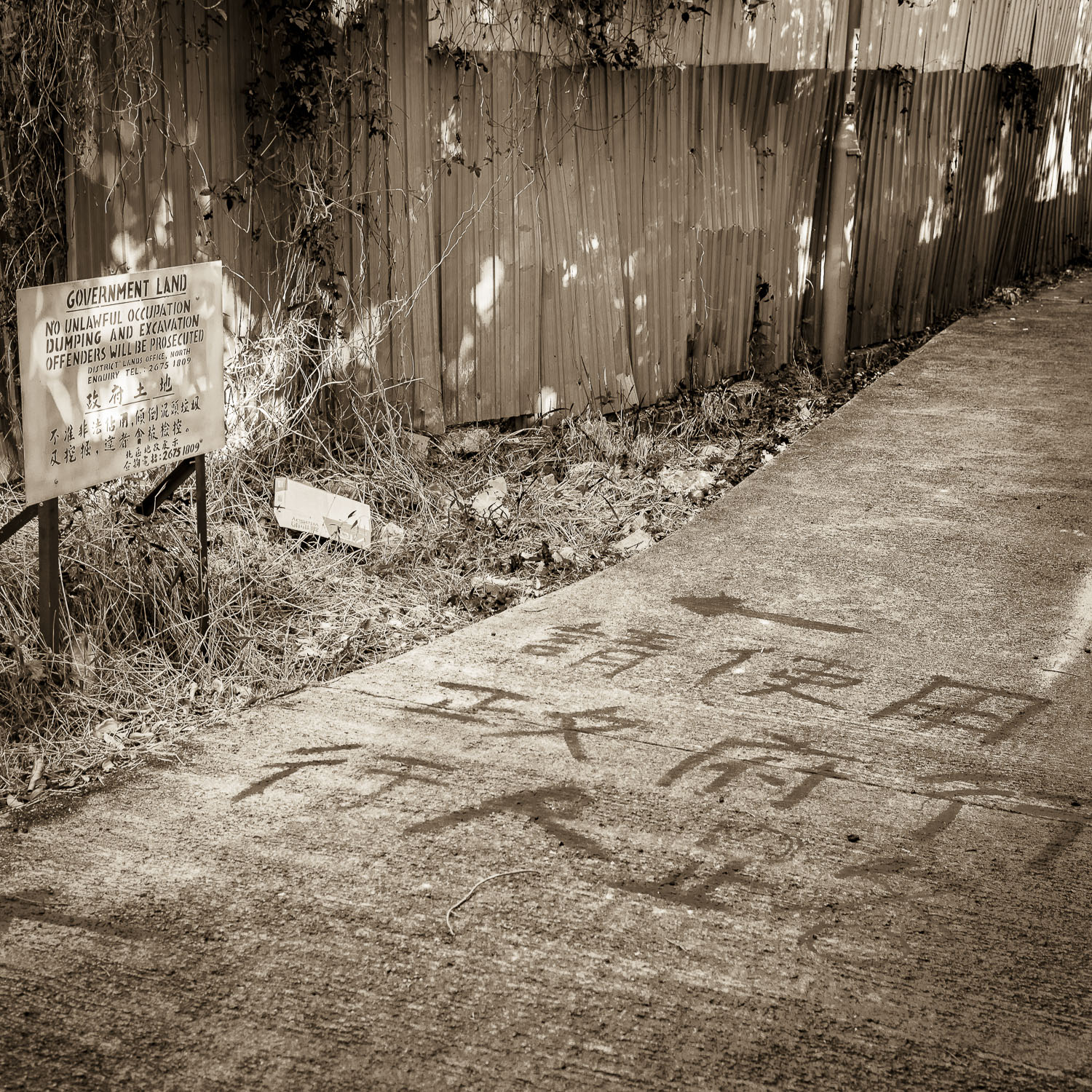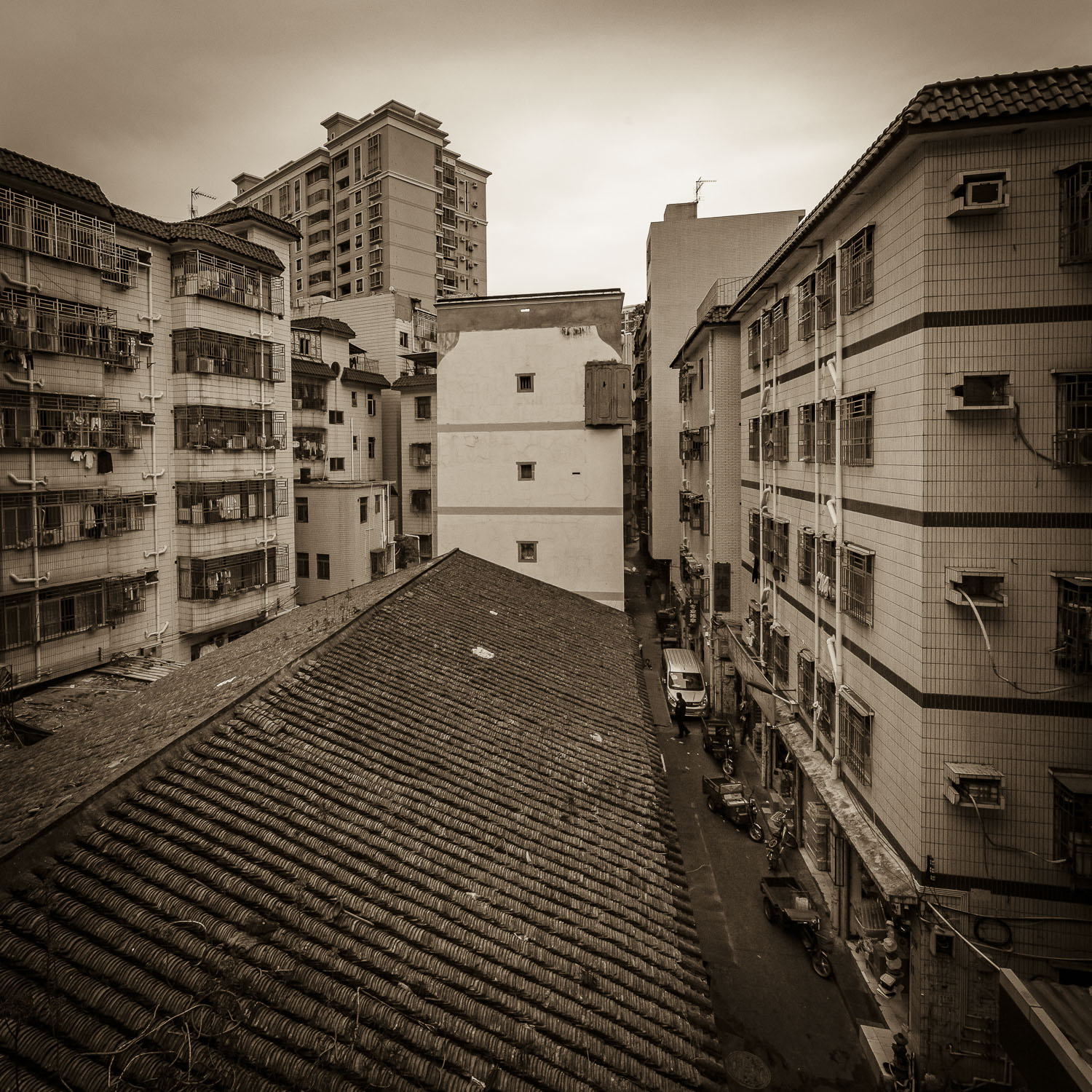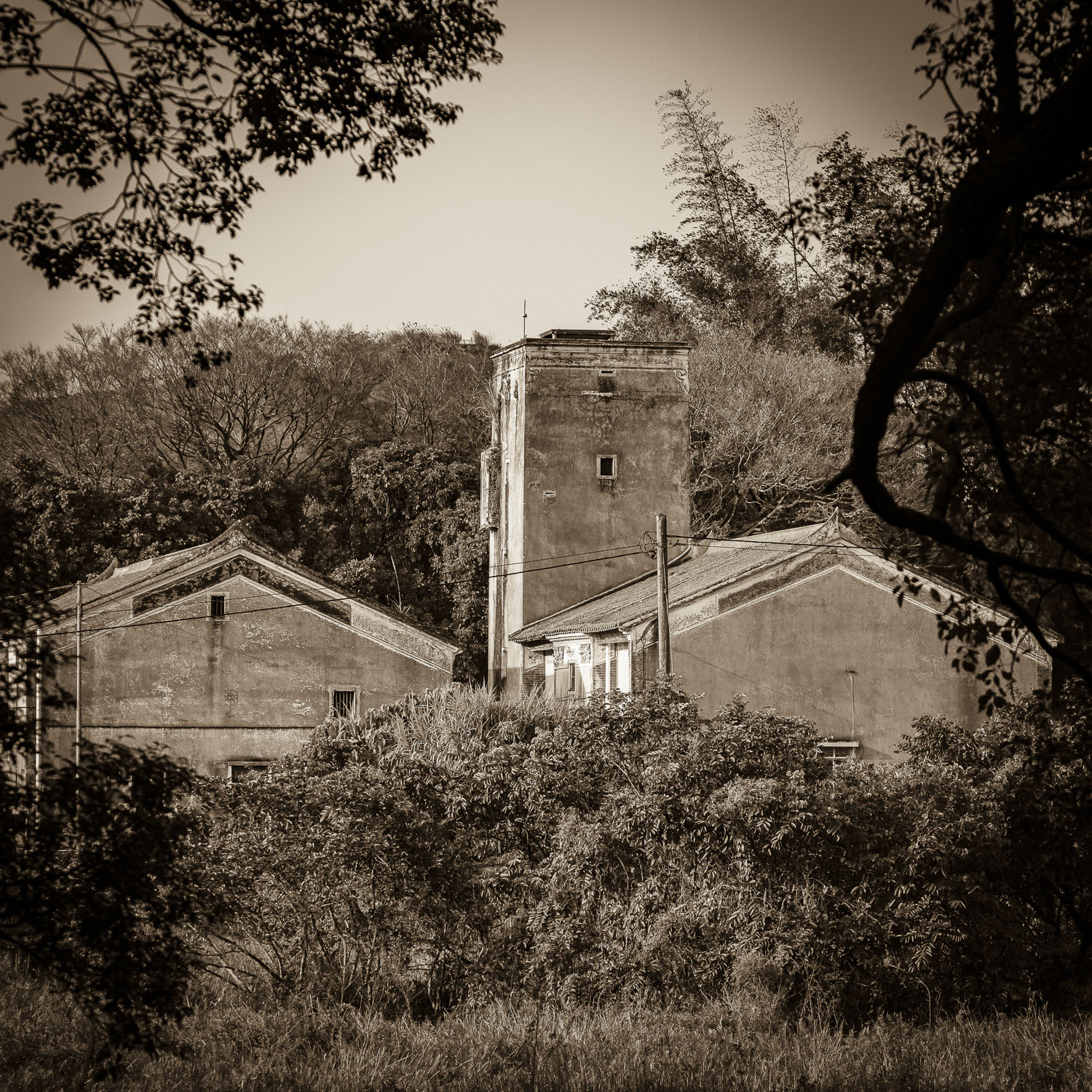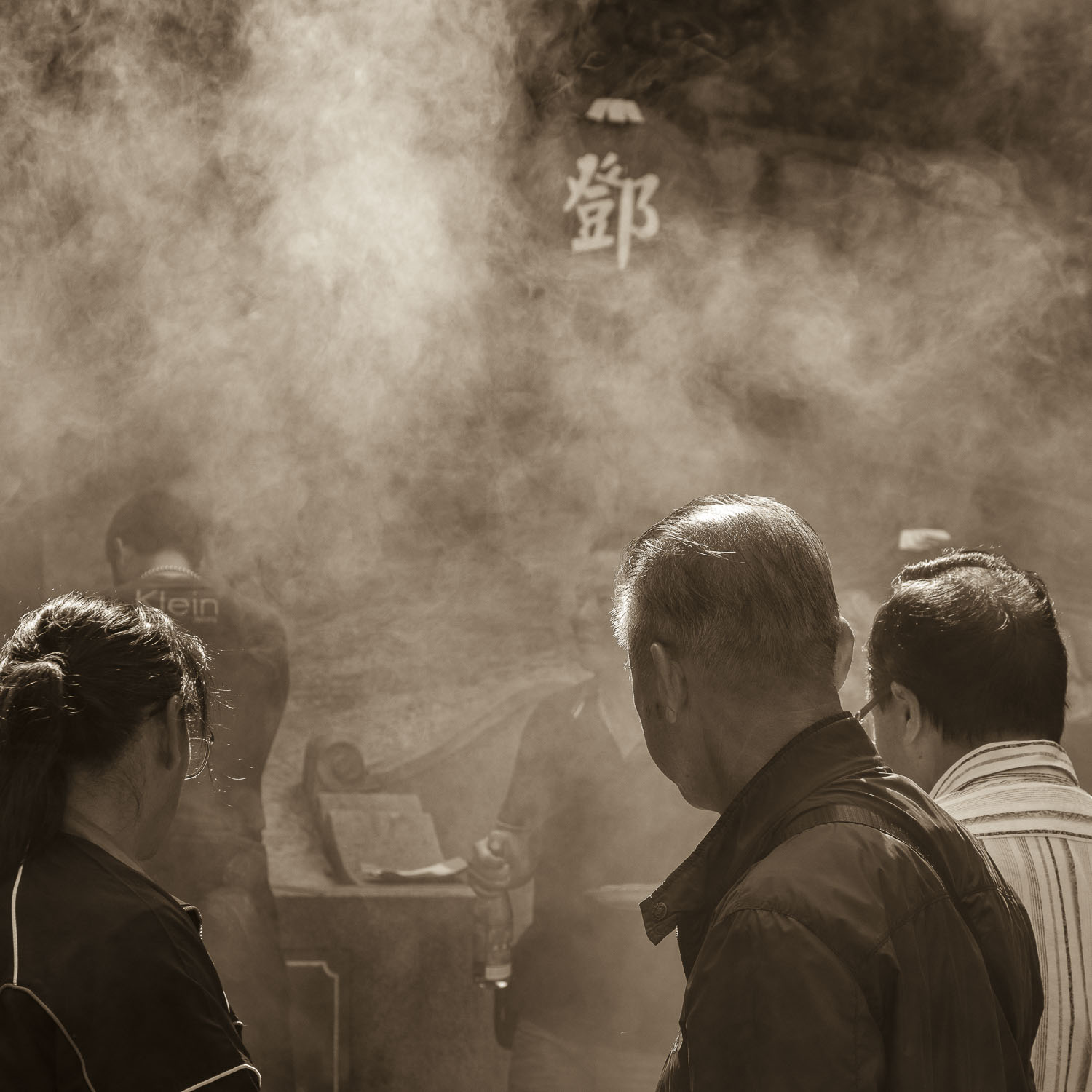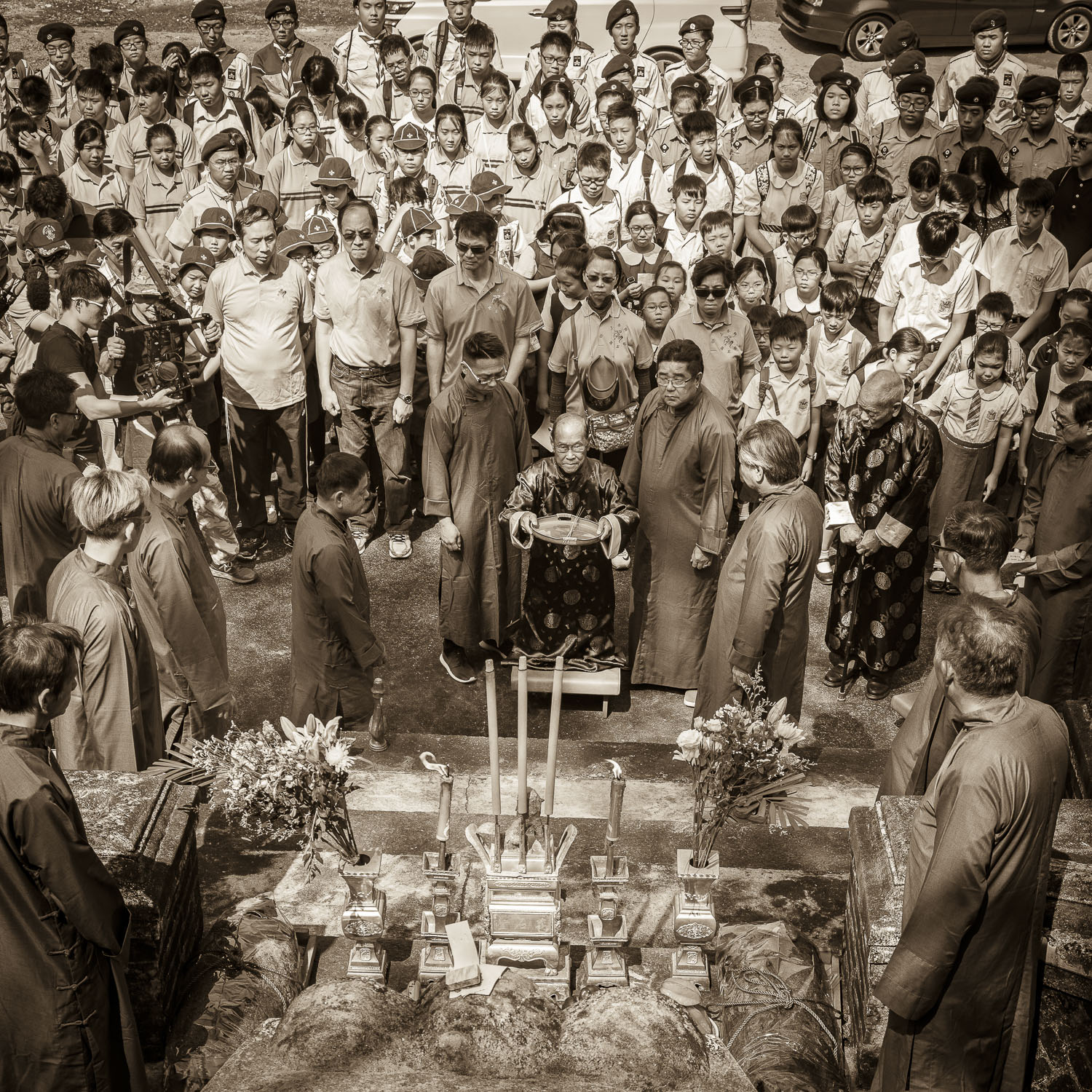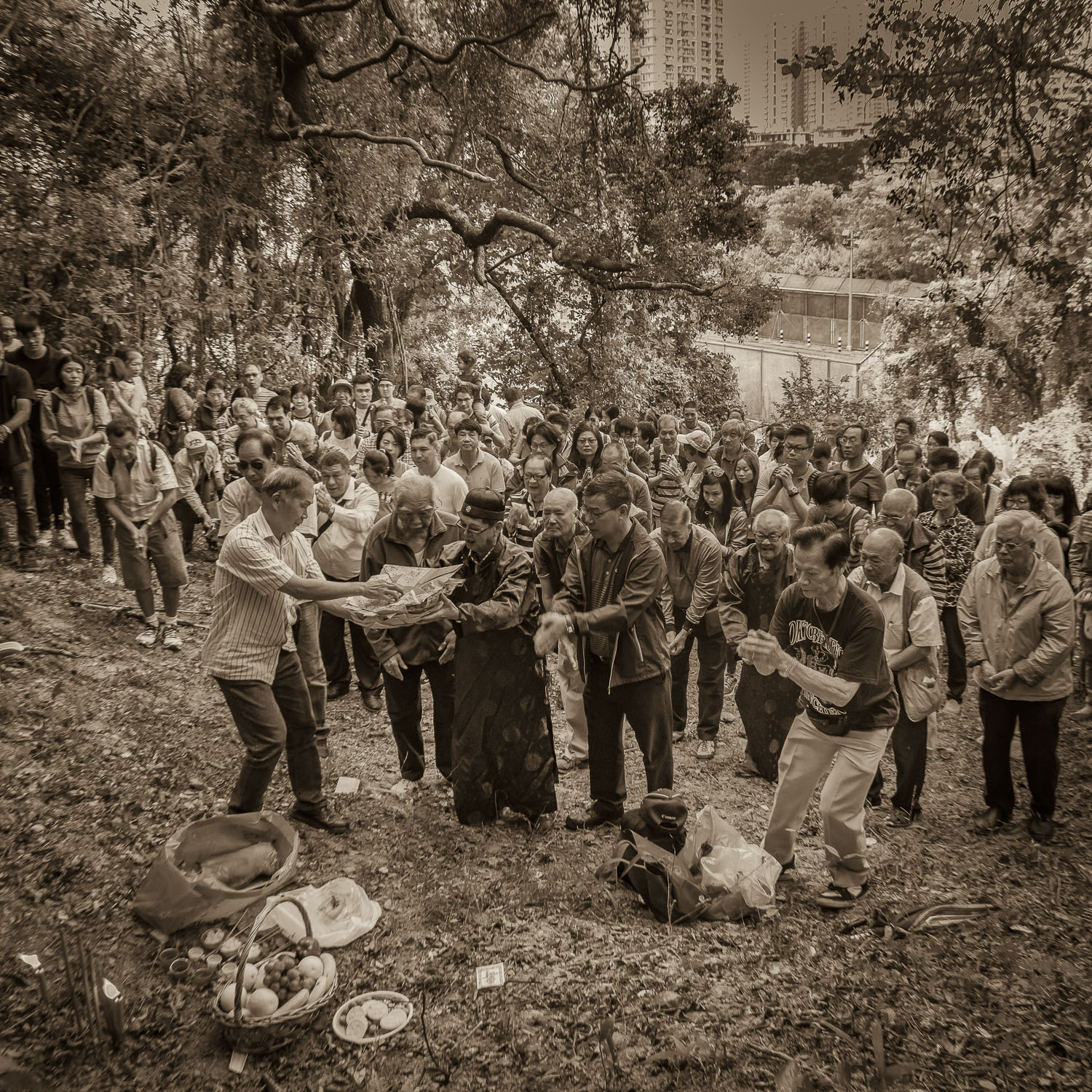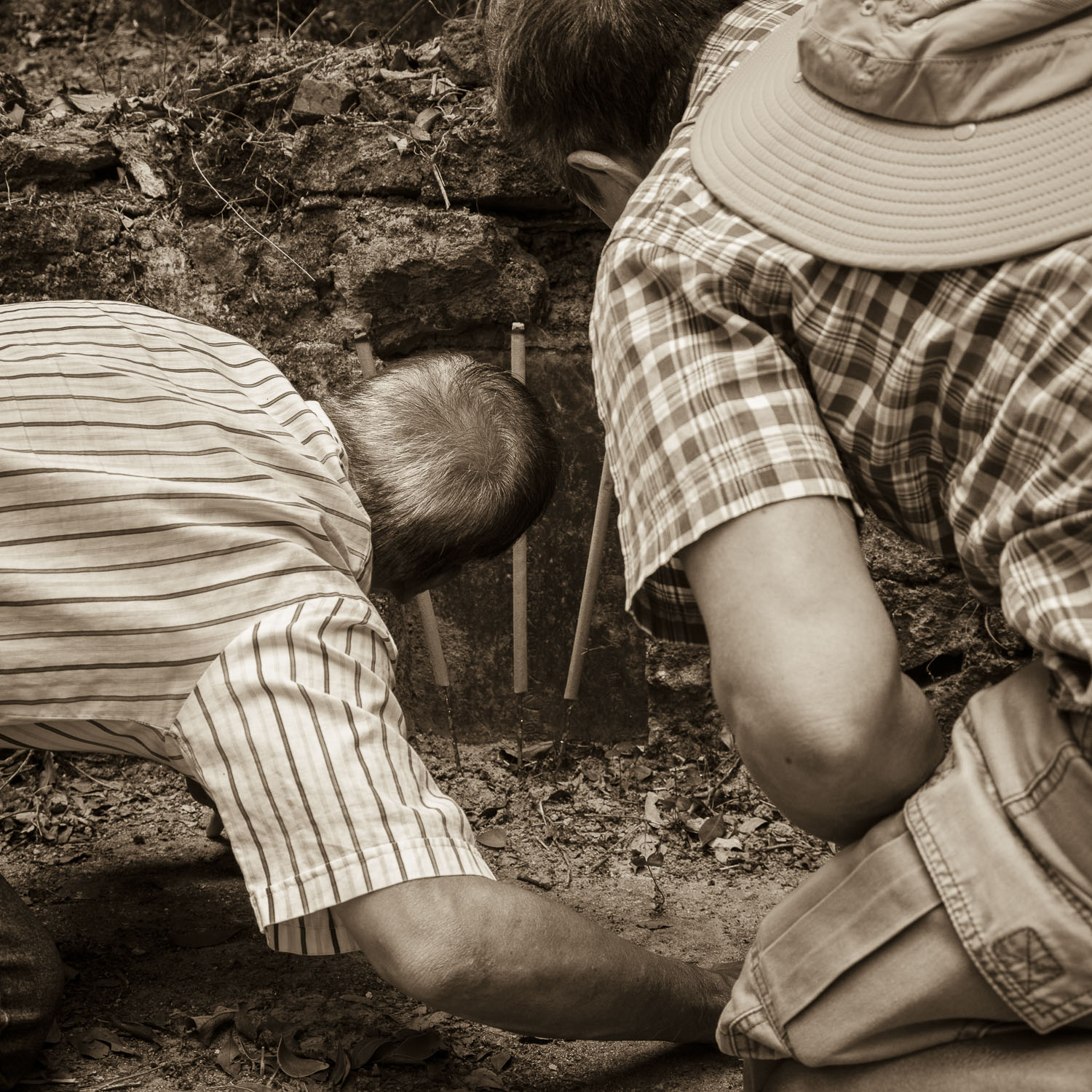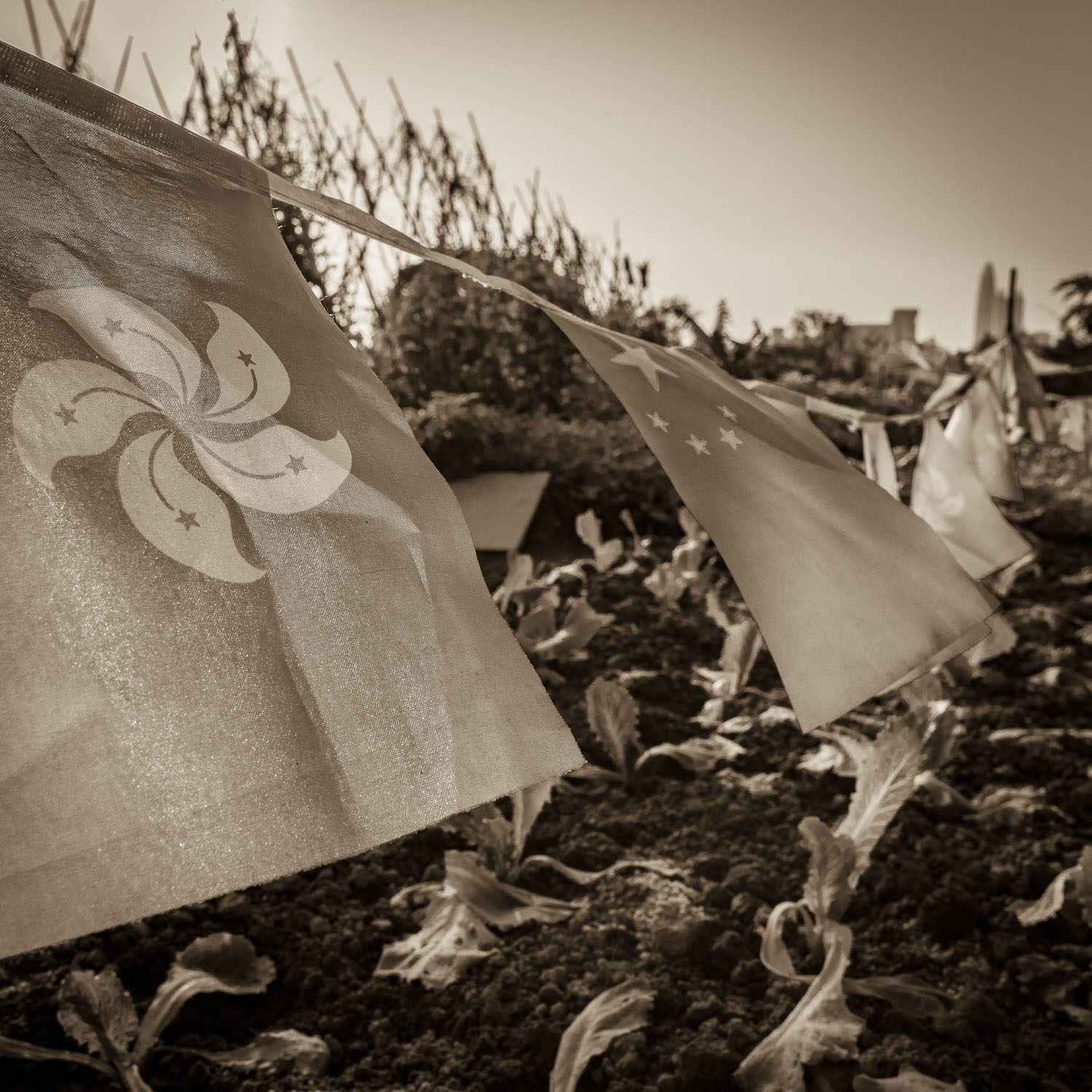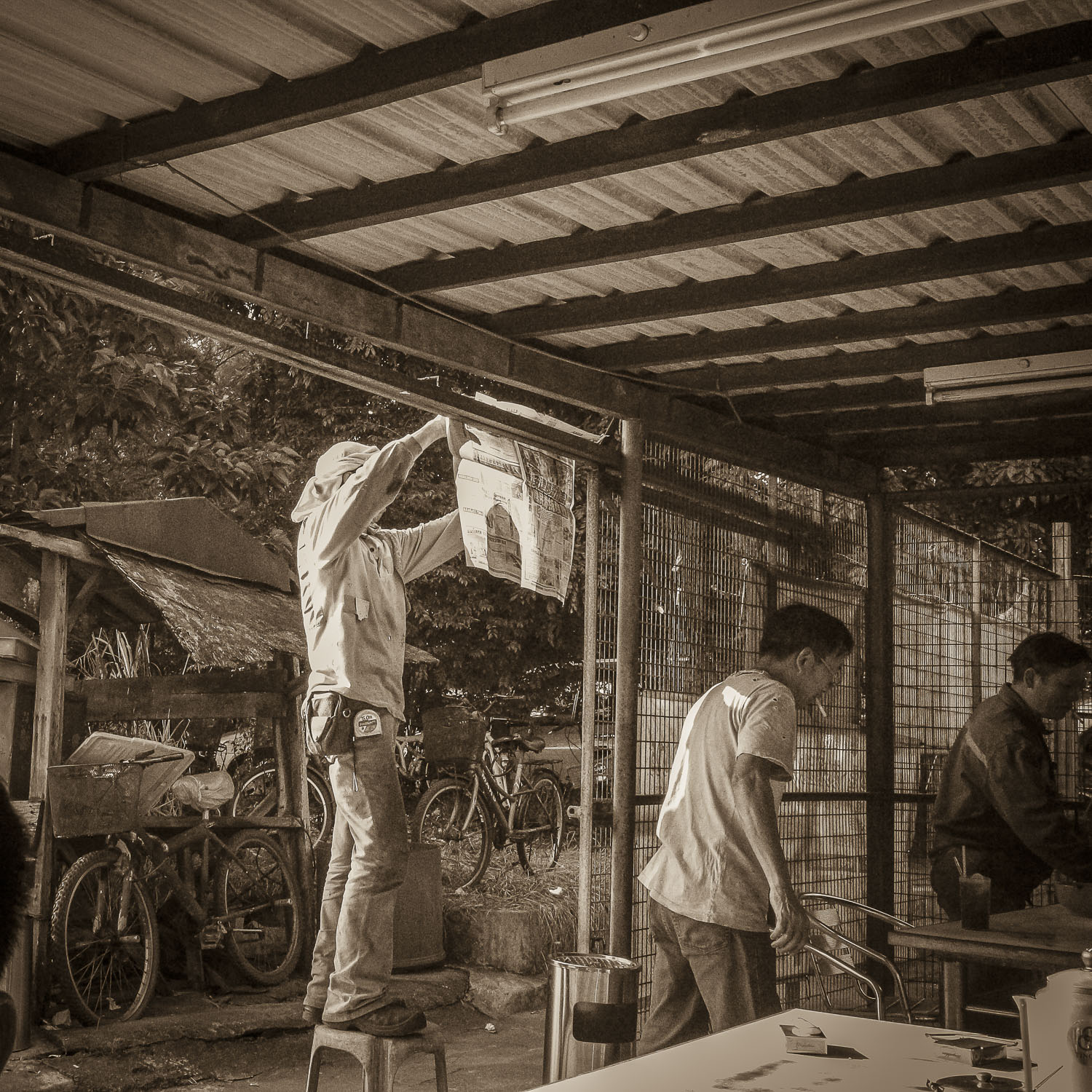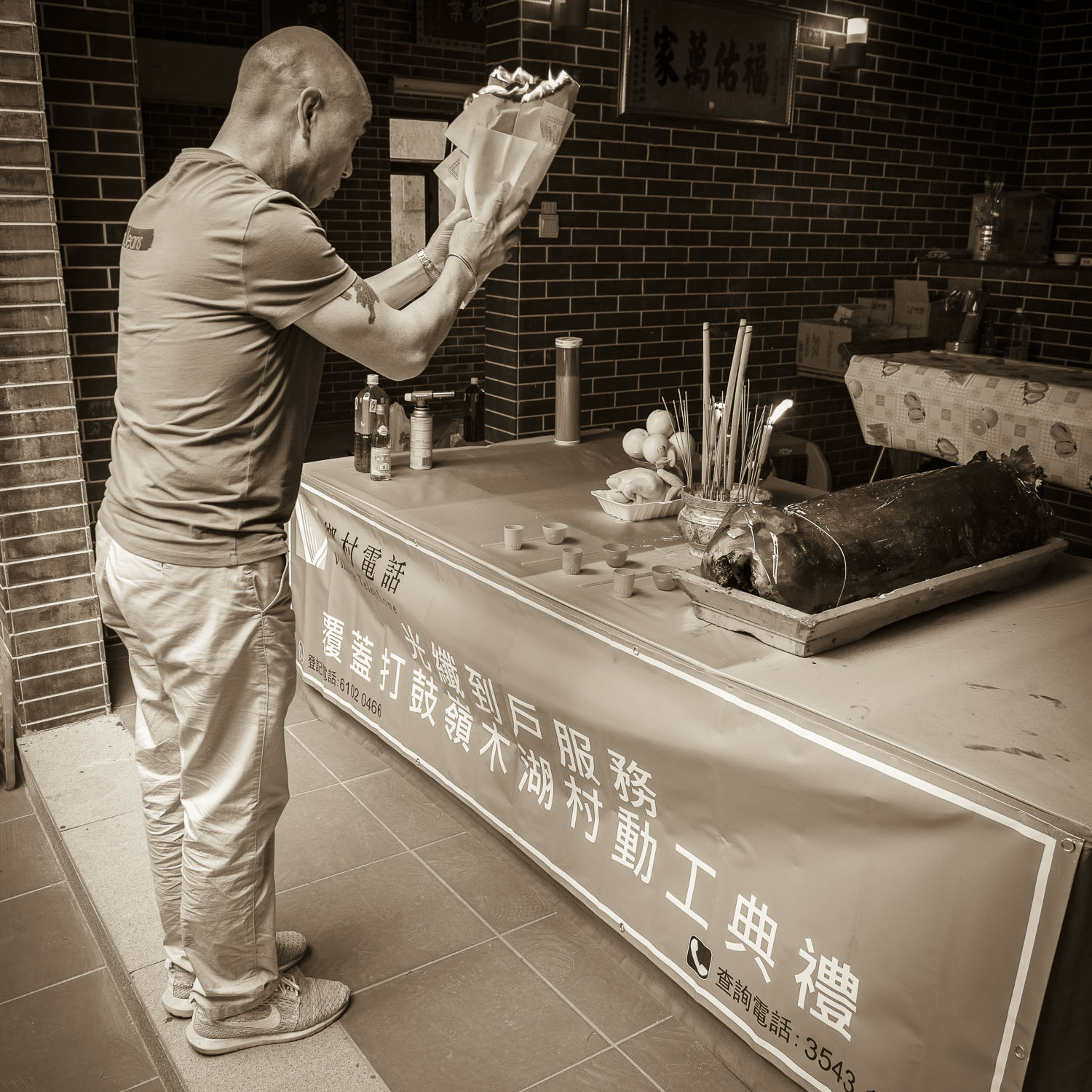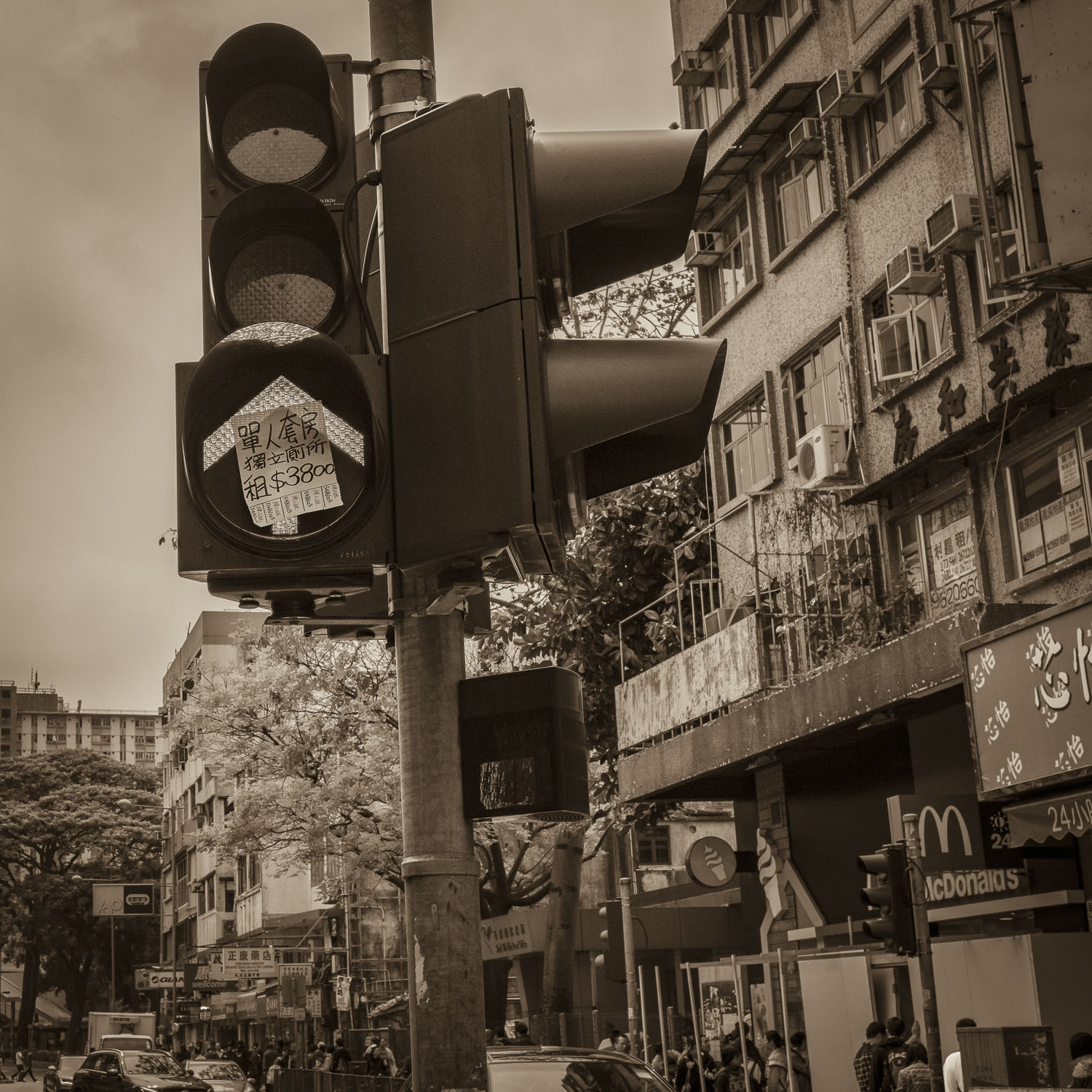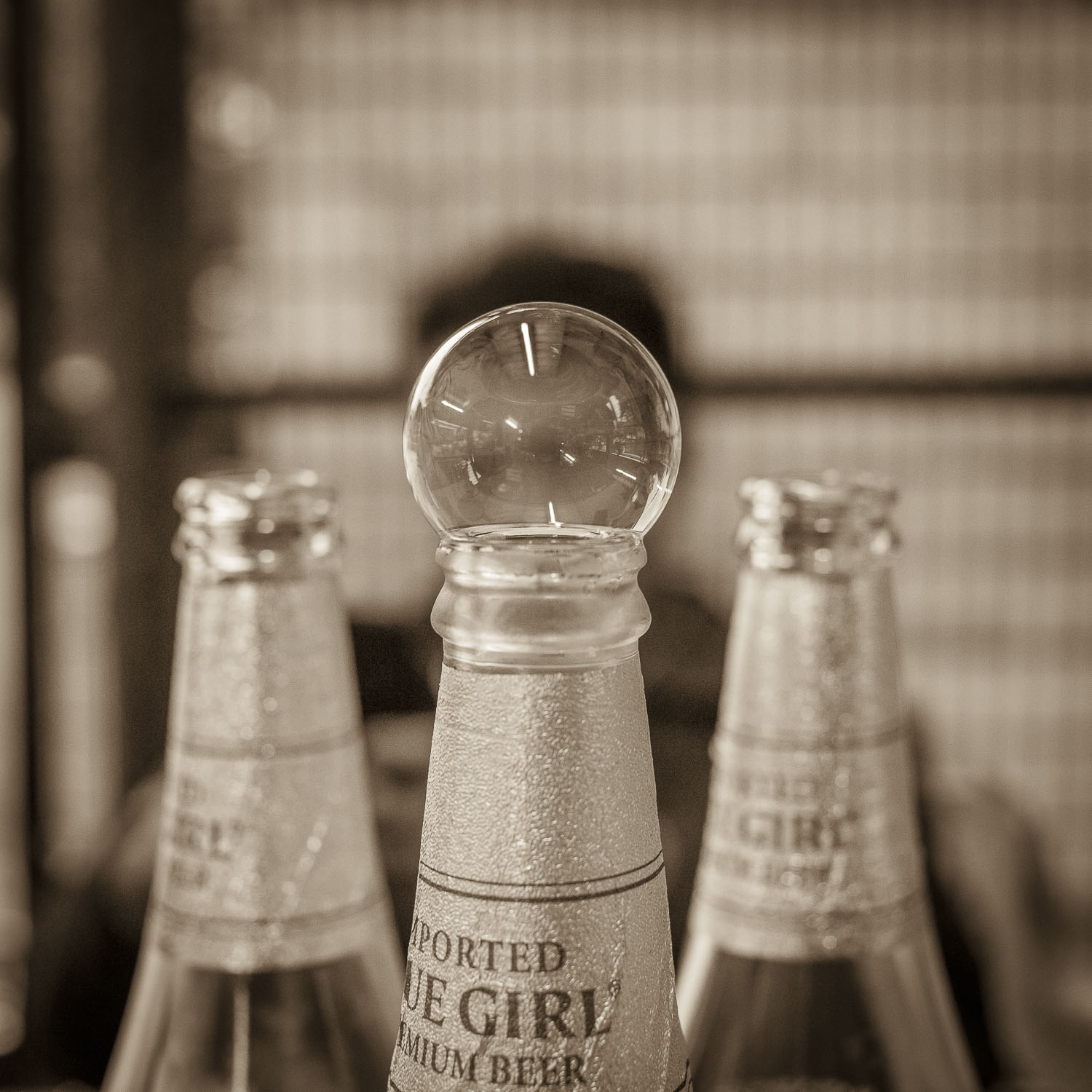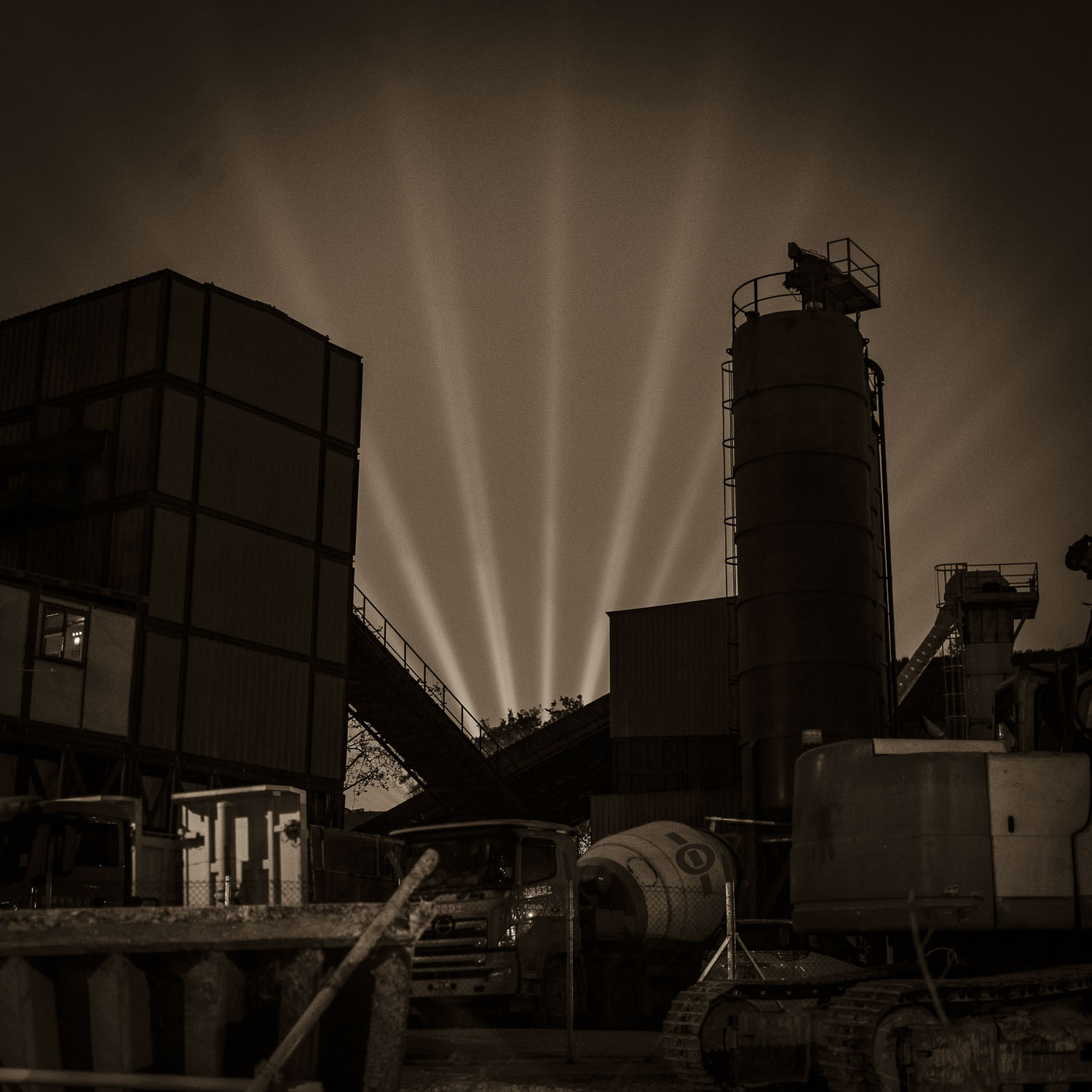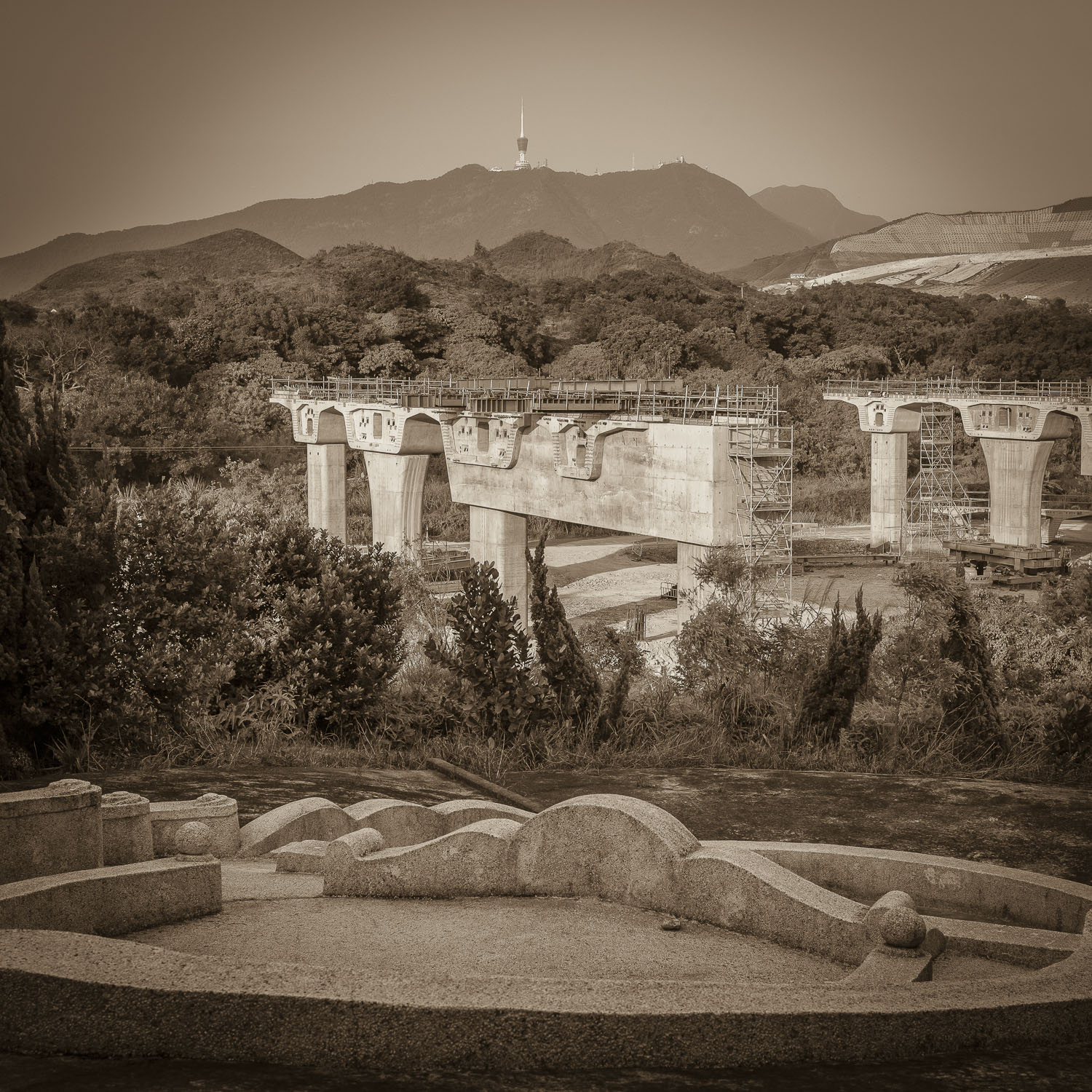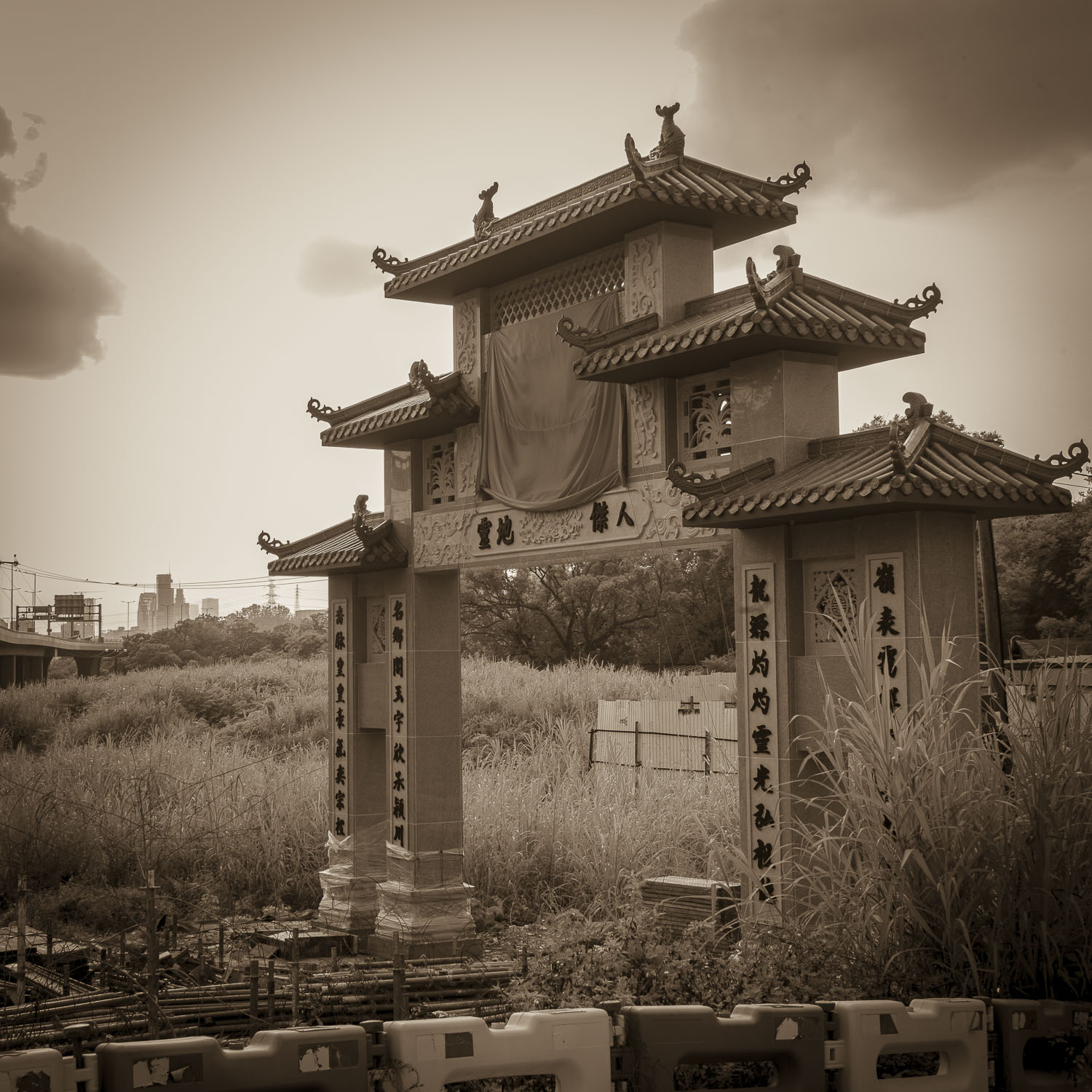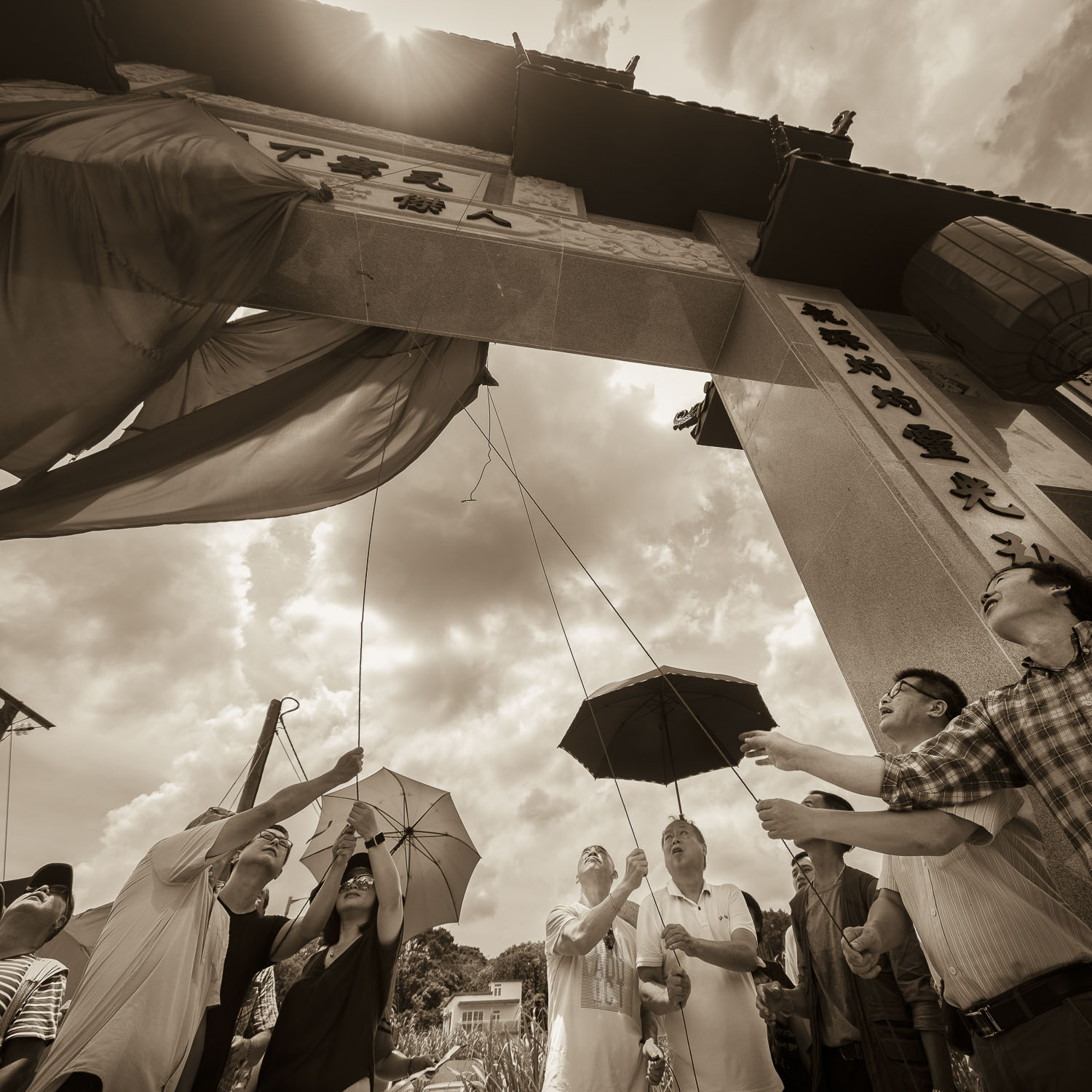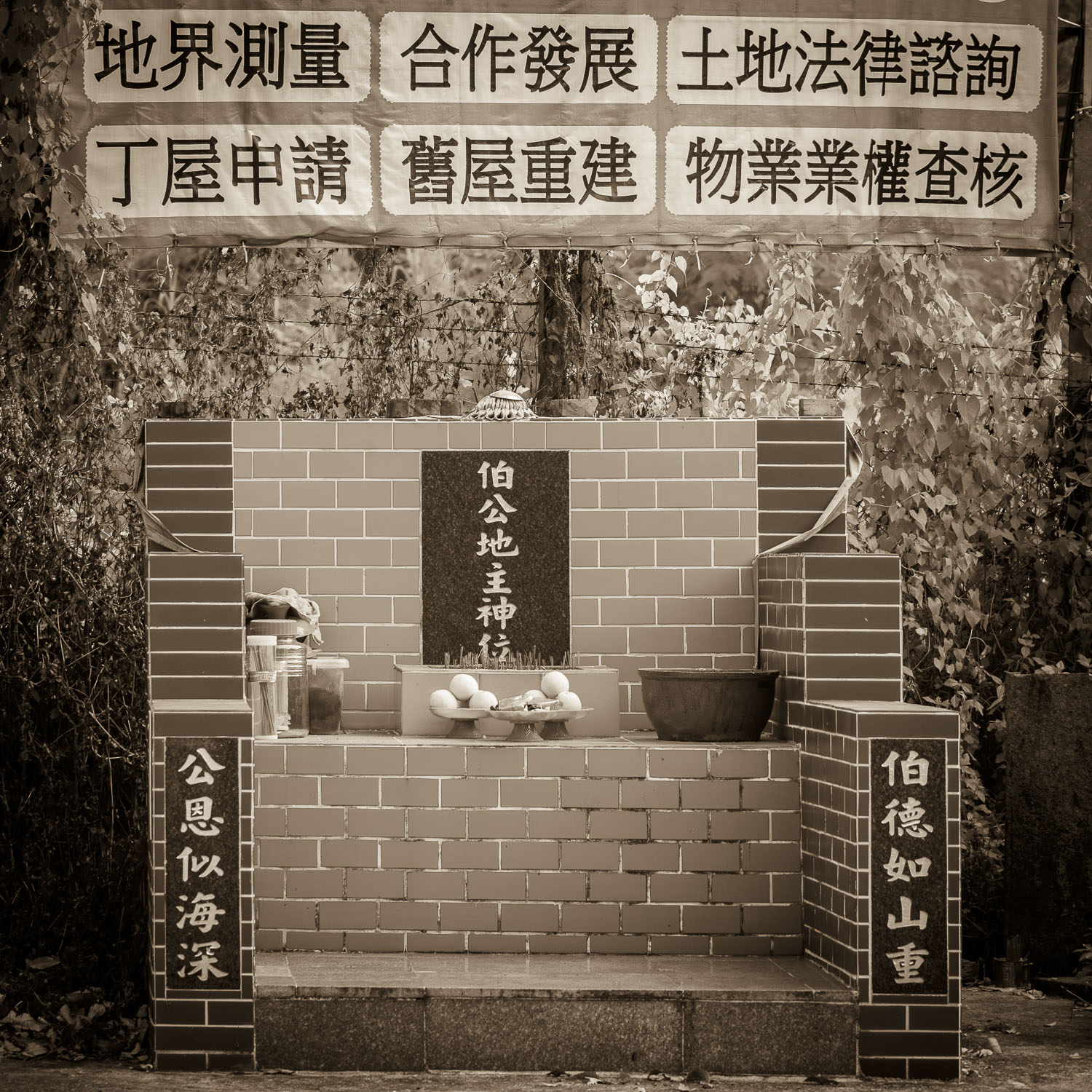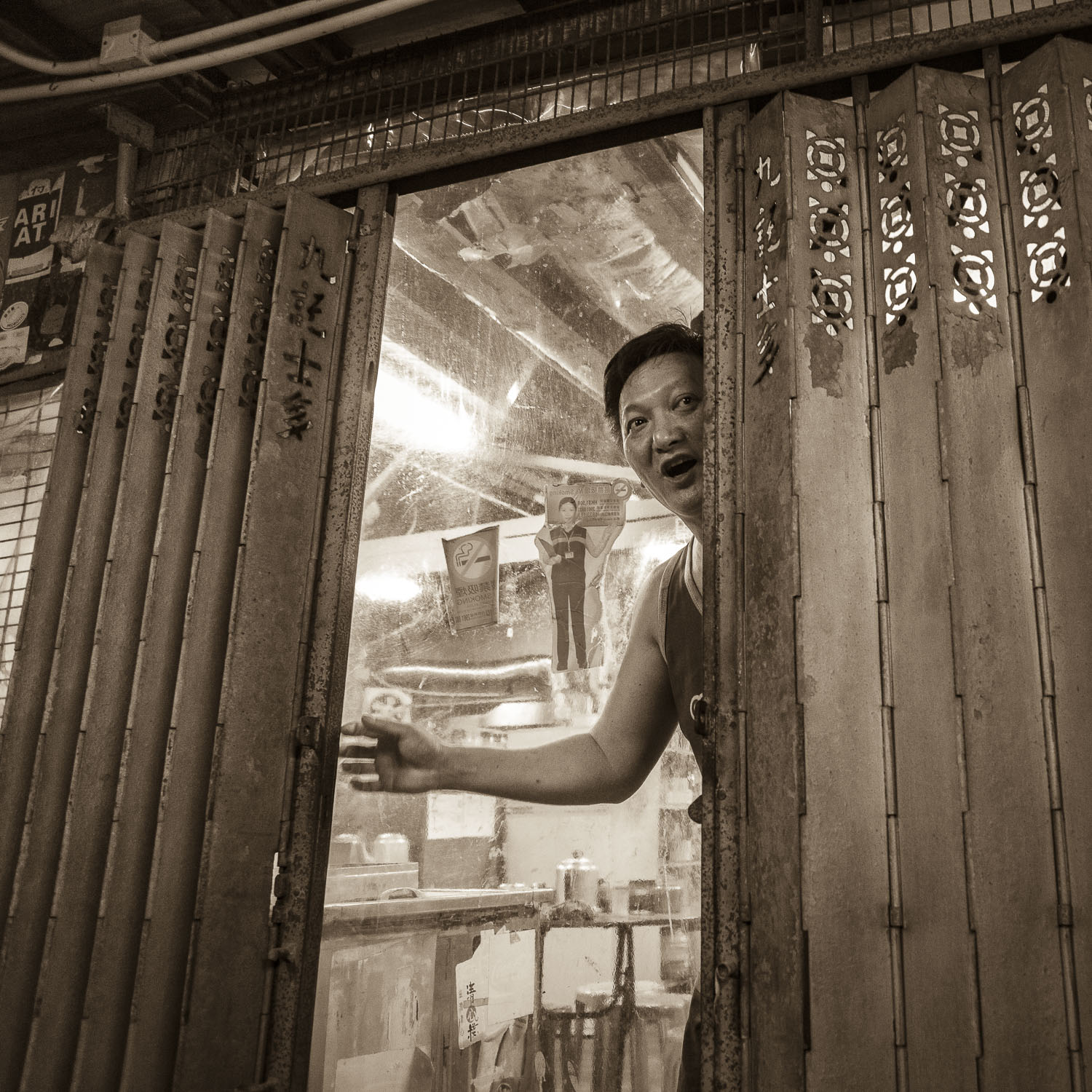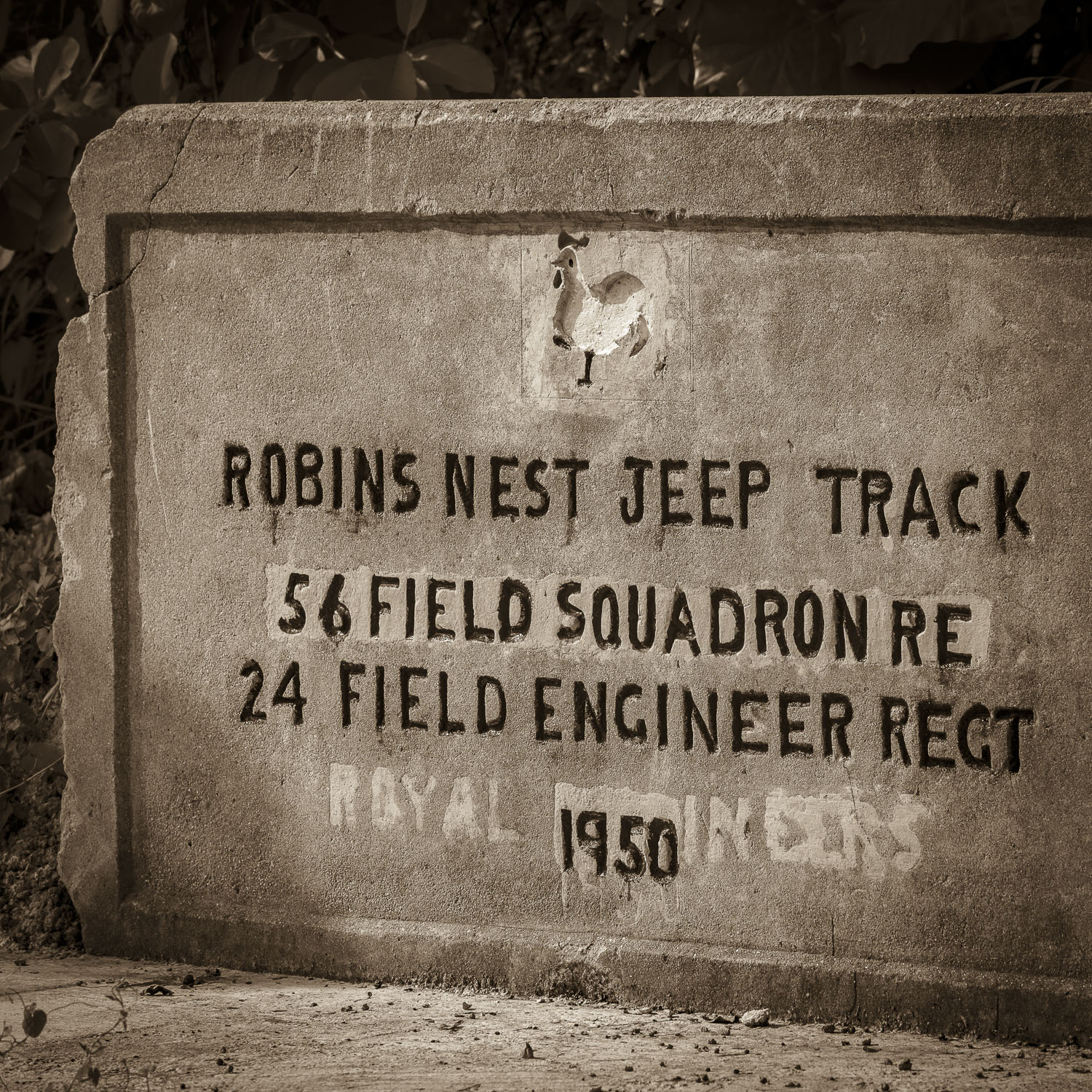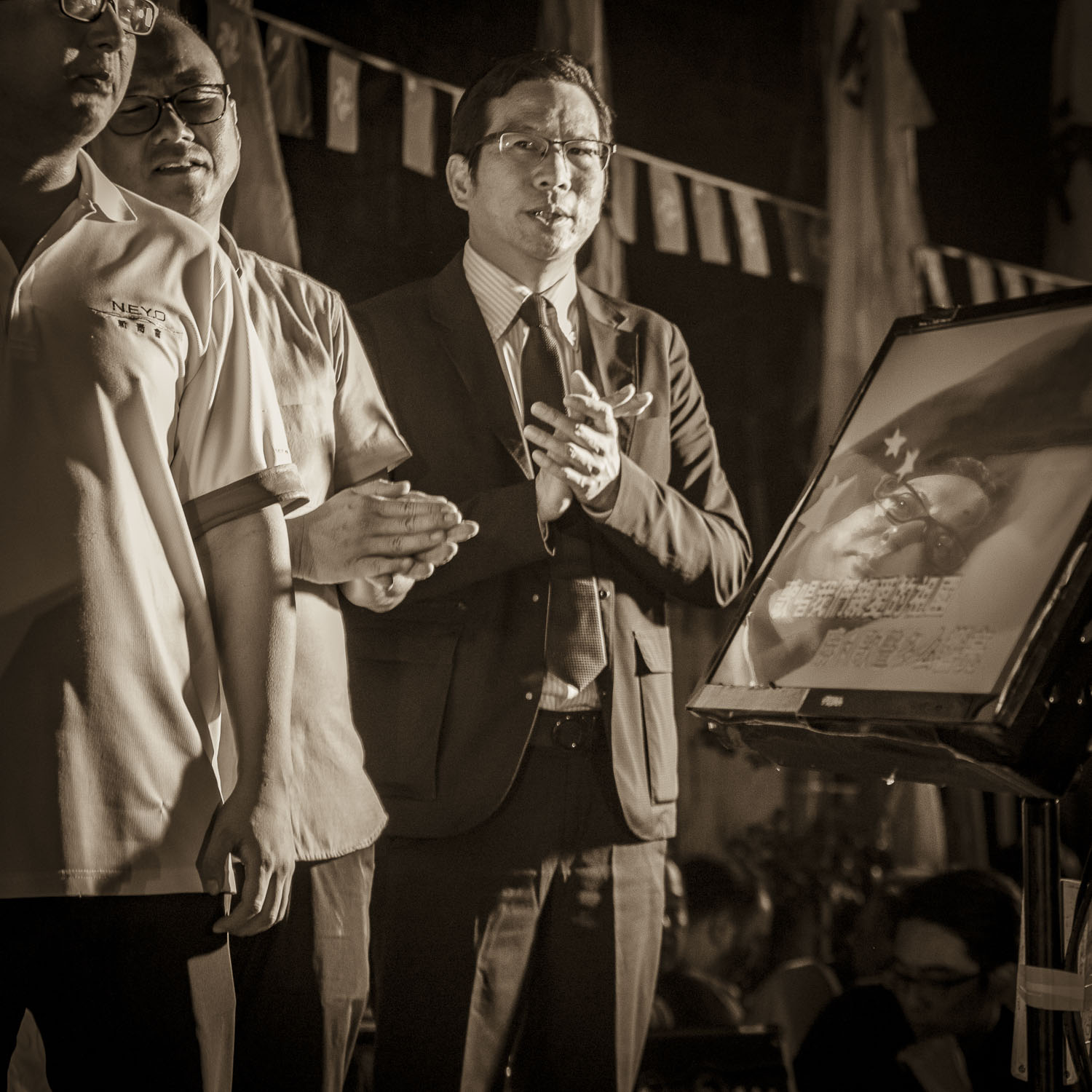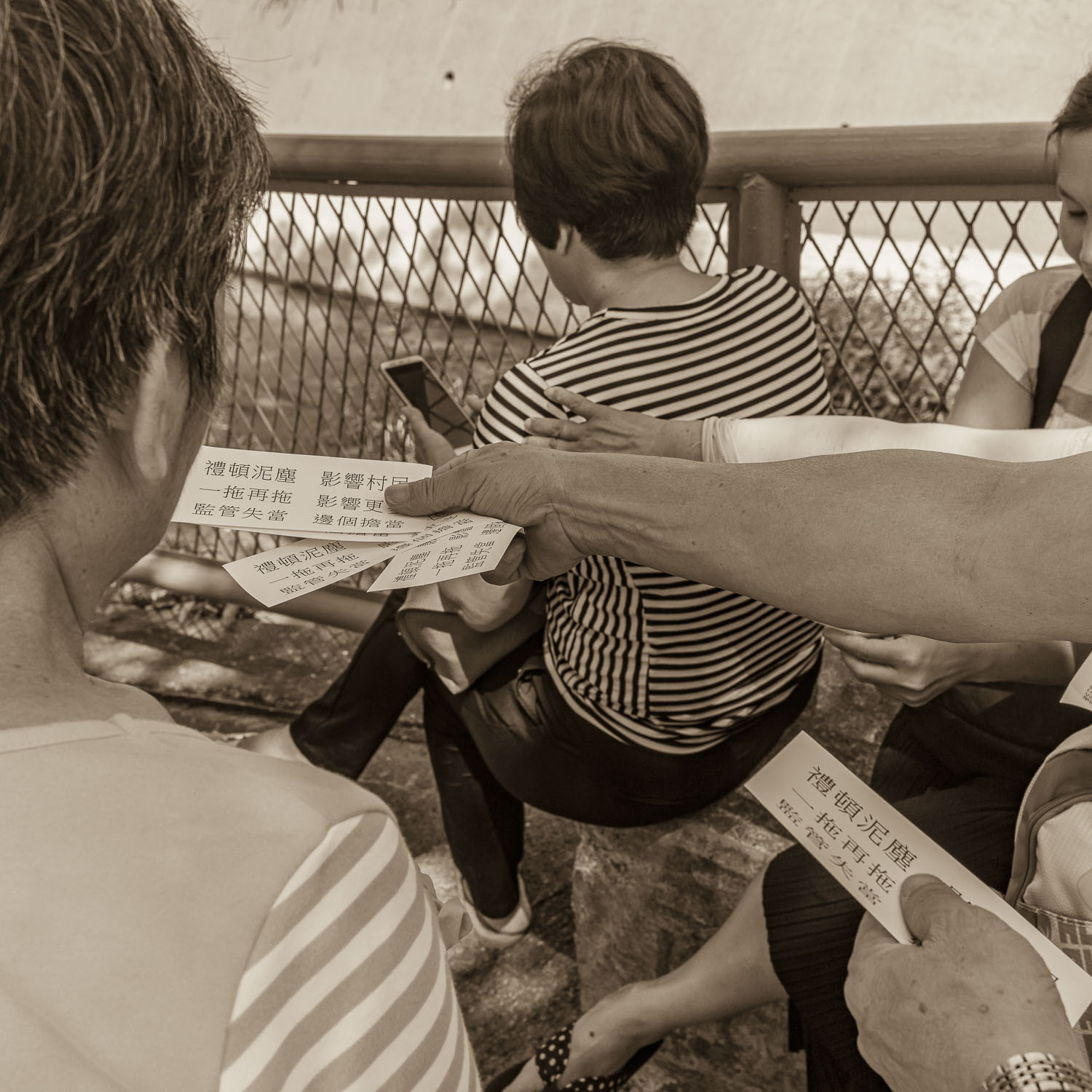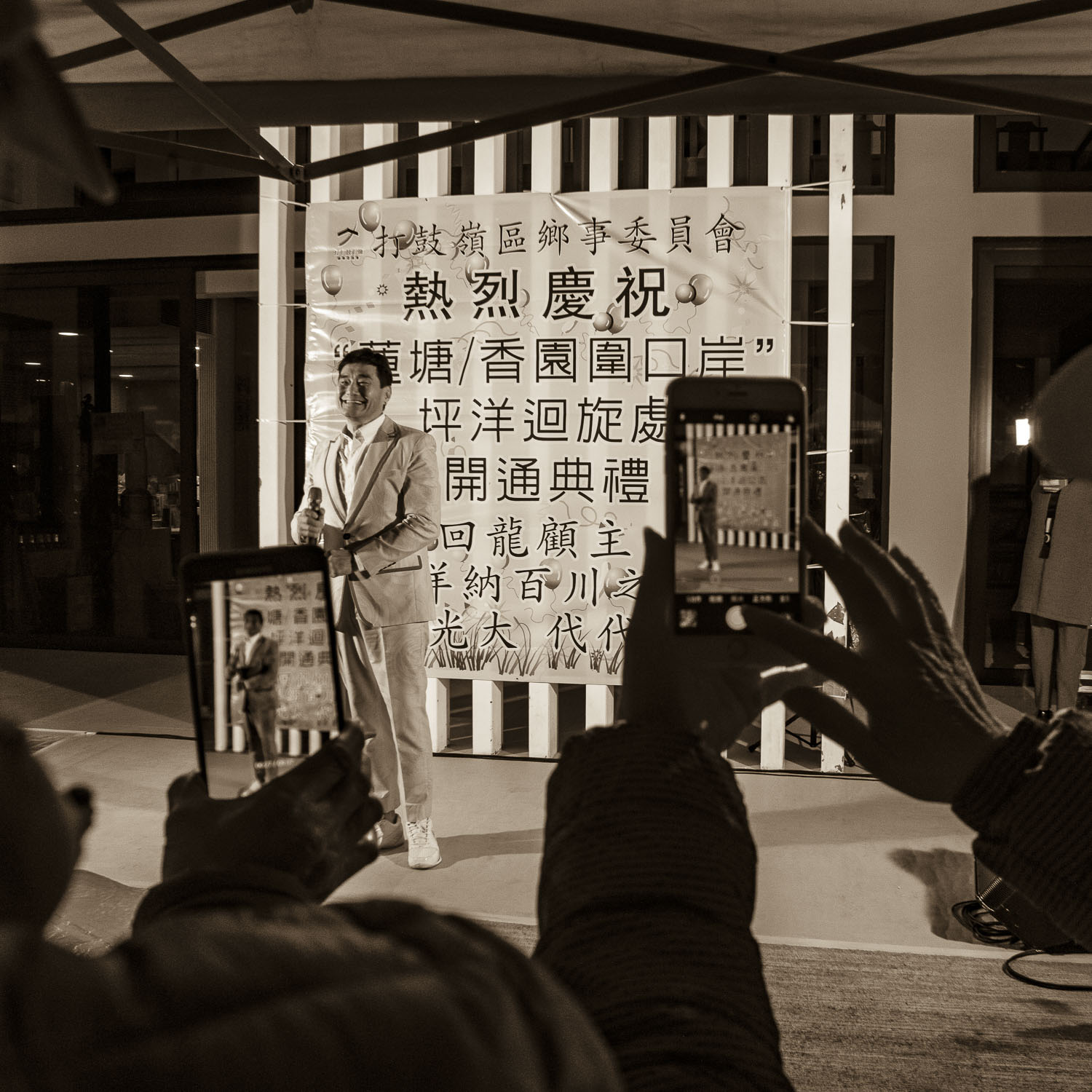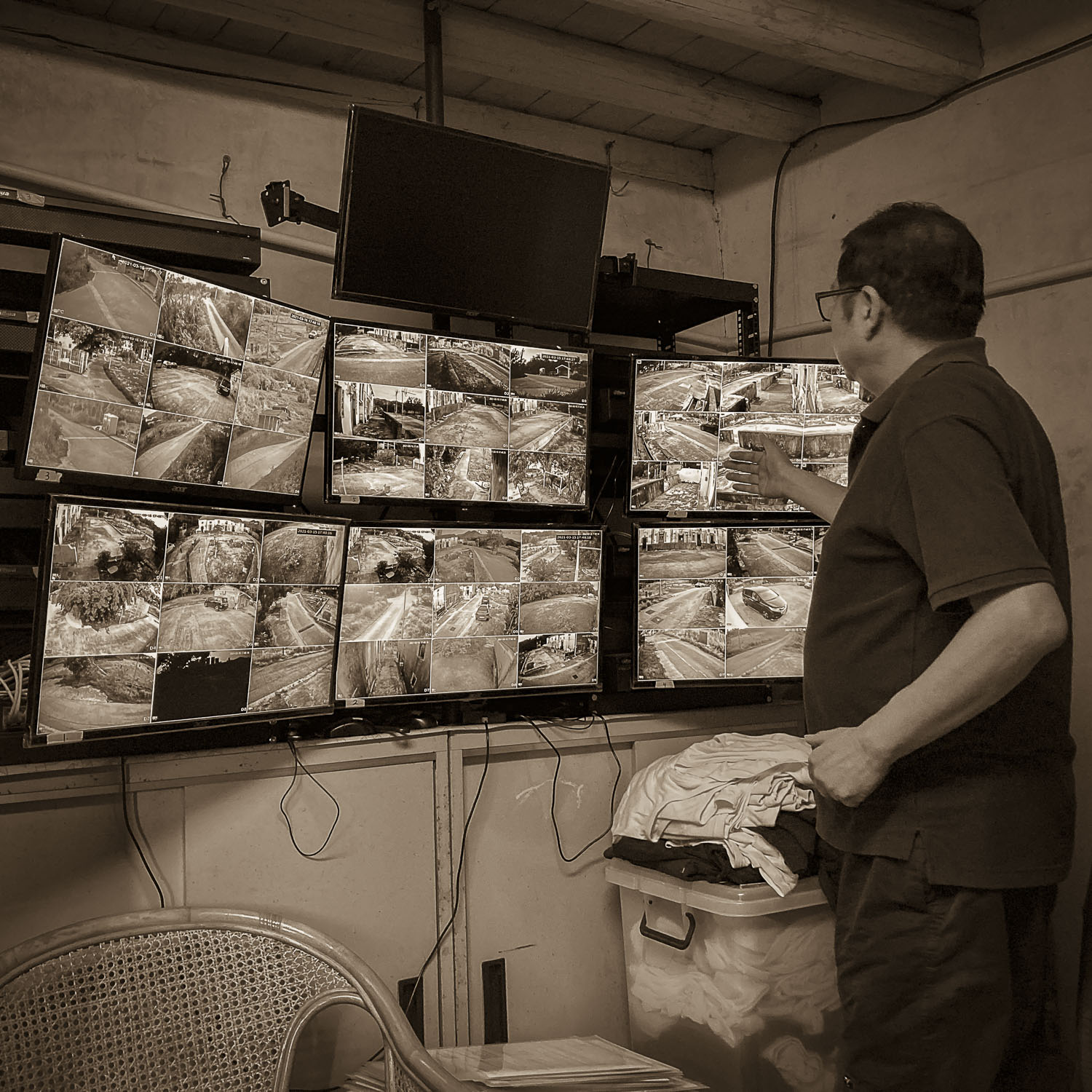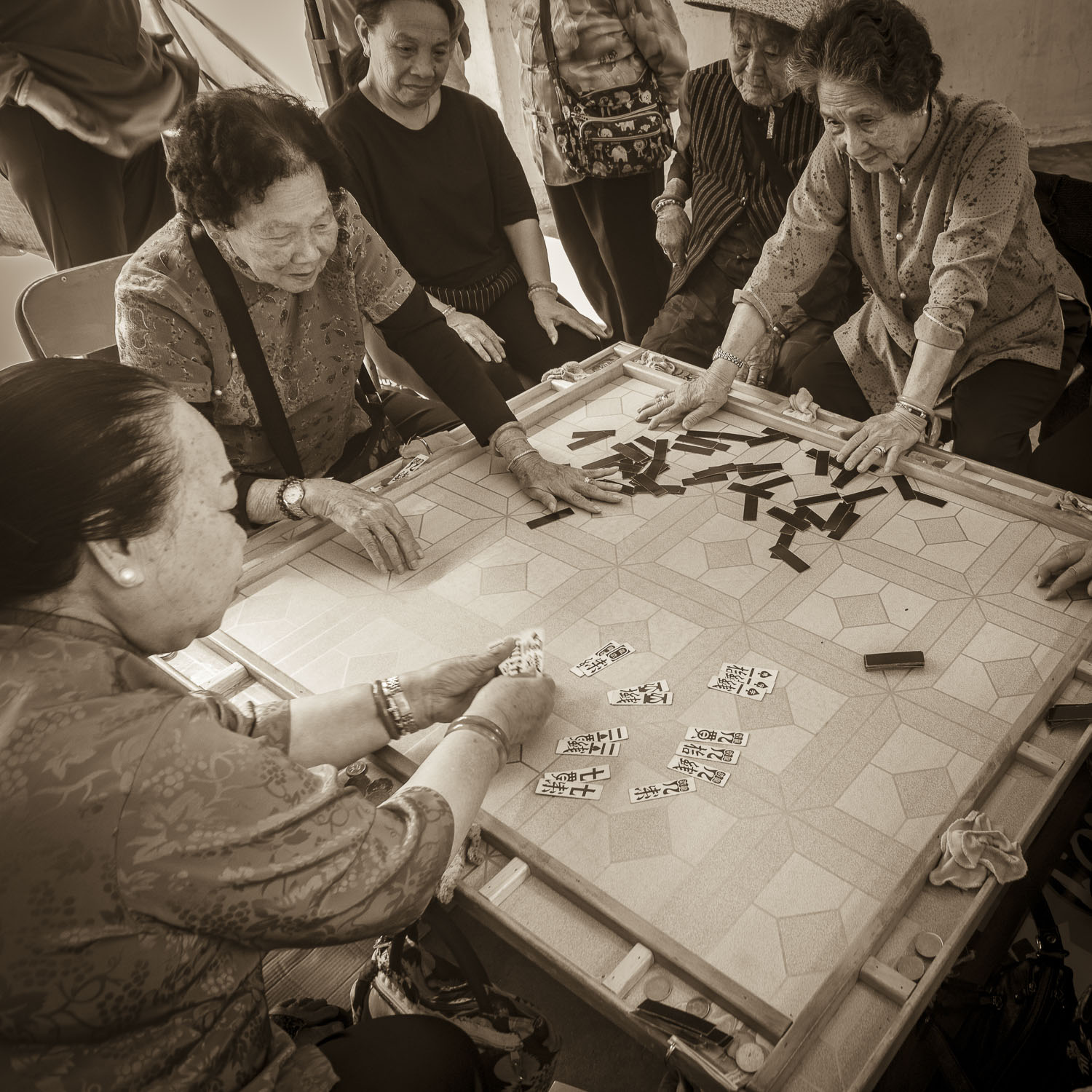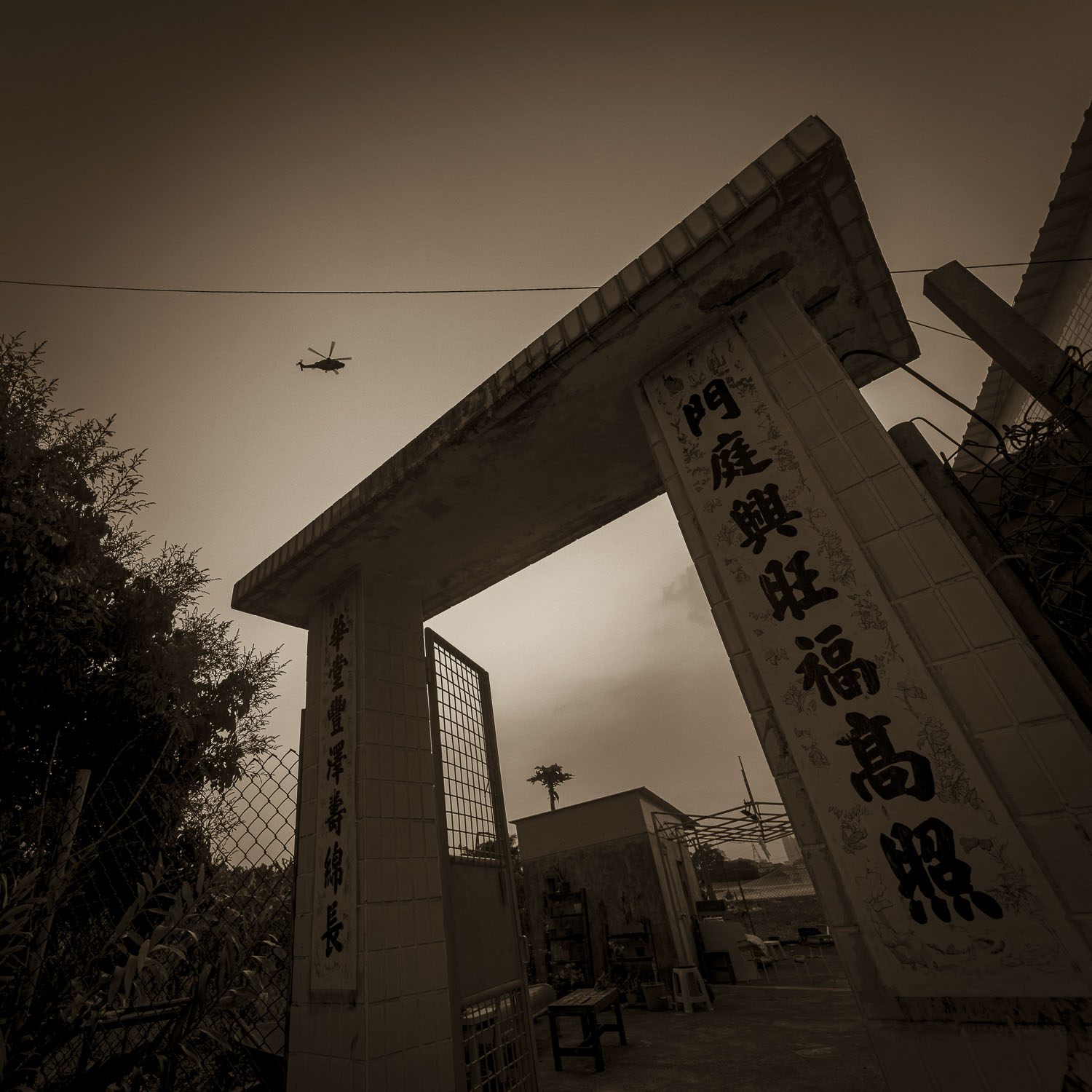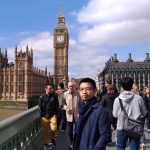Preface
“Hearsay in the Box – A Documentary on Hong Kong Frontier” enveloped the three team members’ collaborative journey over the past decade.
It all started with the North East New Territories New Development Areas [Demolition] Planning —
John Choy used photography to record the resistance put up by the northeast villagers to protect their homeland back in 2012. He deemed that his mission was unaccomplished, and moved to the Closed Area to continue documenting the land and people there.
Desmond Wong is a scholar studying local history and customs. He is committed to recovering the past and present lives of the village organization in Ta Kwu Ling (Luk Yeuk).
Leung Chiu Yin studied the Closed Area development for a long time but his Virgo sense told that his heart lies elsewhere. He then engaged himself in the community and envisaged writing a new storyline.
“Hearsay in the Box” is the theme of these northeast borderland stories. Using the cameras as a conversation starter, the team listened to the legends and heroic deeds told by the villagers and witnessed at the sites of conflicts – before they tried to figure out the intertwining fates of the changing landscape of the borderland and the people there.
Pandora’s box is now open. We wish you peace during this turbulent time.
Annals of Hong Kong’s Northeast New Territories Frontier
- (2007/08) Ten Major Infrastructure Projects and Liantang/Heung Yuen Wai Boundary Crossing Facilities were announced for the first time in the Policy Address by the Chief Executive.
- The government started planning for the reduction of Frontier Closed Area, with the establishment of the Robin’s Nest Country Park in sight
- (2012-14) The Northeast New Territories New Development Area Planning finished its consultation process in controversy. There were mass demonstration when the LegCo approved the bill, which resulted in the imprisonment of thirteen protesters (overturned by appeal later)
- (2013-15) The new Boundary Crossing Facilities also met fierce opposition during the resumption and resettlement of the whole Chuk Yuen Village
- (2016) The third-phase of closed area reduction in Ta Kwu Ling
- (2018) The Ping Yeung roundabout of the new port highway opens to traffic, and the celebrities in the area celebrates the “customer’s return to the dragon”
- (2020) The new boundary crossing had eventually launched with celebrations by local officials and village heads
- (2021/22)Chief Executive Carrie Lam Cheng Yuet-ngor proposed the strategic development of the northern metropolitan area,With the slogan of “combination of urban and rural areas, coexistence of development and conservation”
- The new “Northern Metropolis” proposed a rural-urban balance between development and conservation; ironically, the Robin’s Nest is still not gazetted as a country park yet after years.
Borderland Explained / Explaining the Border
Standing on the top of Robin’s Nest, gazing afar, the Chinese border area and the British one doesn’t exist anymore. Mass building works on one side, and high-rise buildings on the other. Gradually one could not distinguish which side was leased.
After re-establishing the border, a huge number of Hakka people flushed into the New Territories reshuffled the traditional clan influence to an extent that even the feng shui burial places tied to a clan’s rise and fall were neglected. Villages competed for natural resources leading to sporadic armed conflicts. The weak and small villages thus formed alliances to resist the large clans by offering sacrifices to the same god.
In 1894, the defeat of the Sino-Japanese War sent the great powers into a frenzy for their lion’s shares. The British took this opportunity to lease the New Territories for 99 years and extended its territory from Boundary Street northward to the south of the Shenzhen River. In terms of population, natural resources, and land resources, the Kowloon Peninsula and Hong Kong Island were pale compared to the new crown land.
The British took the new land seriously and sent James Stewart Lockhart, Registrar-General of Hong Kong, to survey it. The British government even held a flag-raising ceremony to commemorate its take-over of the New Territories, but the local villagers met it with fierce resistance. The British army quickly quelled this “war” with its superior armament, and the anti-British leaders absconded. The villagers could only pay homage to their anti-British martyrs in a low-key manner.
Before World War II, the boundaries between China and Britain were clear, and the people of the two places came and went freely. Hong Kong’s rapid surge in population coerced its urban area to expand northward. Some of the leased lands became the New Kowloon, and the New Territories was regarded as a buffer zone.
After the liberation of Hong Kong from the Japanese occupation, political upheavals sent an enormous number of refugees pouring into Hong Kong, making it imperative to develop the New Territories. The situation also left the Hong Kong government with no choice but to cordon off part of the borderland as a buffer zone. In 1997, the leased New Territories was returned to its motherland with the two pieces of land ceded, rendering the restricted zone losing its original function. For the people of Hong Kong, this unfamiliar piece of land is now facing earth-shaking changes.
Desmond Wong
Reflecting History
“History is written by the victors.” Whose stories and what stories are celebrated, distorted, or vanished forever are always under the shadow of power relations and manipulations. The project team went back in time to juxtapose the conjuncture from the Qing Dynasty to the Colonial Regime and then the post-handover “HKSAR, China”. We tried to deconstruct those “matters-of-fact” about border and to reimagine the relationship between the border and us:
How do we understand the “Northeast”/”New Territories” and “Frontier”/”Closed Area”?
The Northeast is perhaps considered as a remote periphery for most Hong Kong people. For the techno-bureaucracy and businessmen, it may be just one of the many real estate projects. Still, it is an unsoothable pain to the villagers deeply rooted in this place and those profoundly involved “outsiders”.
The New Territories was established in 1898. Its name retained its colonial tint to this day. Have you ever wondered whose “New Territories” this is? Will it disappear or be dismantled?
“Bin1 ging2 gam3 keoi1” (「邊境」禁區) is officially known as the Frontier Closed Area, or commonly named the Border Area in colonial government archives. After Hong Kong returned to China, the term “Border” was replaced by “Boundary” in the public domain, and the border area now became the “Northern Metropolis”.
Since the Frontier Closed Area was set up in 1951, the colonial government surrounded it with layers of fences, control points, and entry inspection facilities. The area was subject to curfew for many years: no visitors were allowed, no interviews nor photographs.
Residents must apply for a Closed Area Permit and present it through the checkpoint.
The borderland dwellers finally had the uplift of these restrictions since 2012. Yet to our dismay, the current epidemic has now imposed an even larger scale lockdown and security measures on the whole territory of Hong Kong (Note: patrons are required to sign-in “LeaveHomeSafe” and carry with their “Vaccine Pass” upon entry to this premise).
History may not have a fair verdict now, but it shall come back one day. We will persevere until the end.
Leung Chiu-Yin
Why Shoot 360 Panoramas?
Modern 360 panoramic photography technology has been so simple that it can be done with the push of a button and then shared on social media at any time. However, looking back at the photos of “Ngau Tau Kok Lower Estate” taken in 2008, its author John Choy had to work tirelessly to shoot thousands of images using digital SLR cameras before stitching them seamlessly to produce panoramic photos. Choy also became one of the few pioneers in Hong Kong’s 360 panoramic technology, using it as a documentary photography technique.
Contrary to the popular one-click panoramic photography, Choy’s works are gigapixel-level photos combining photojournalism with the recording method for photographing museum cultural relics. Every inch of his works can be magnified to reveal/unfold intricate details, allowing viewers to make discoveries constantly. Such works will surely stand the test of time, as they can be viewed on a screen with higher resolutions available after a decade or more.
Beyond technical talks, Choy’s documentary panorama approach obscures the locations of onlookers and participants. Unlike traditional documentary photography, the rule of thumb is to hide the presence of the photographers; in his 360 panorama shooting works, Choy inevitably becomes a part of his photos. Being a documentary photographer and a resident of the Northeast New Territories, his dual identity, together with his counter-cultural approach, make his 360 Panoramic Photographic works the perfect choice for this project.
Paul Ning
